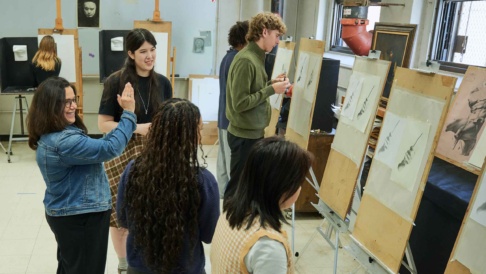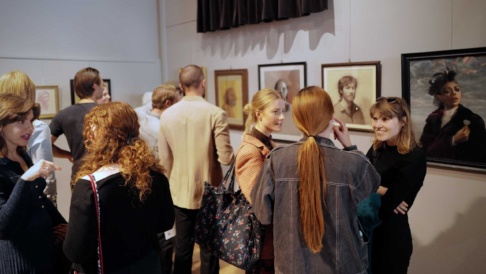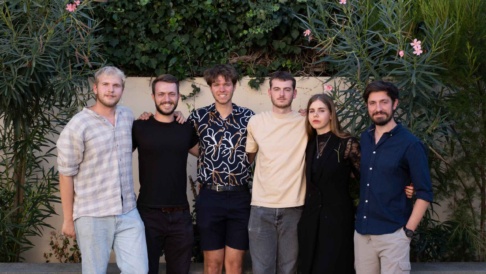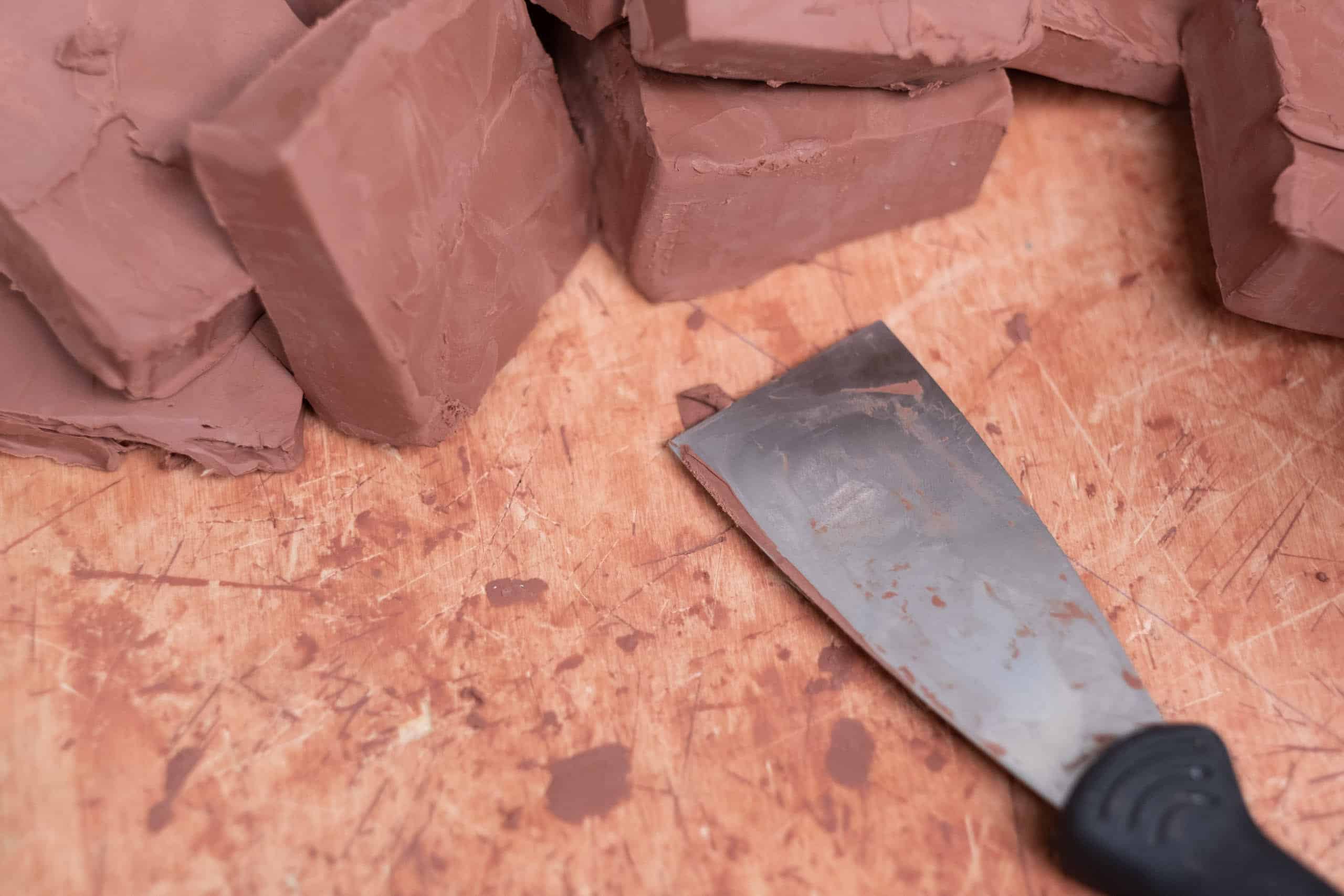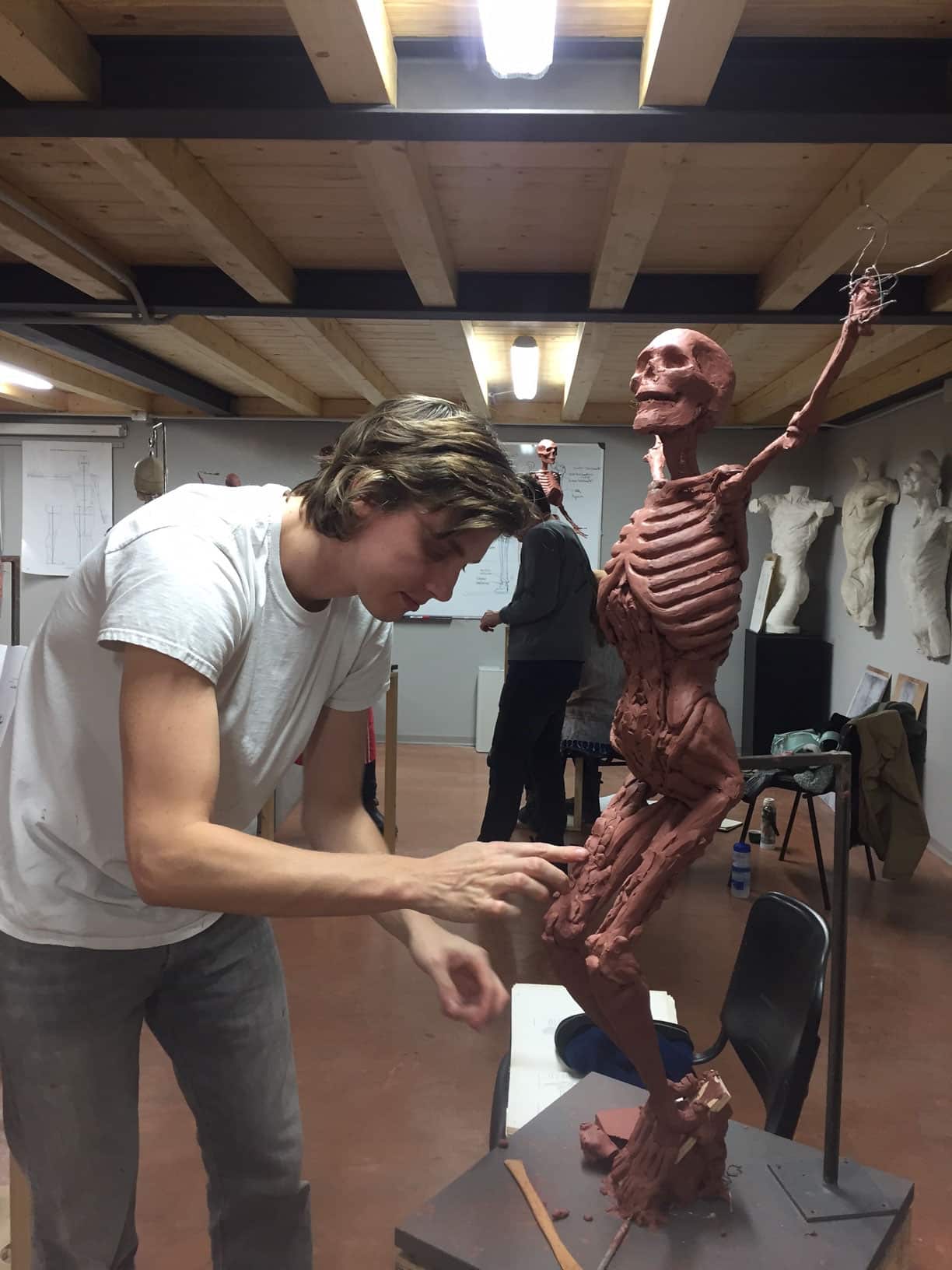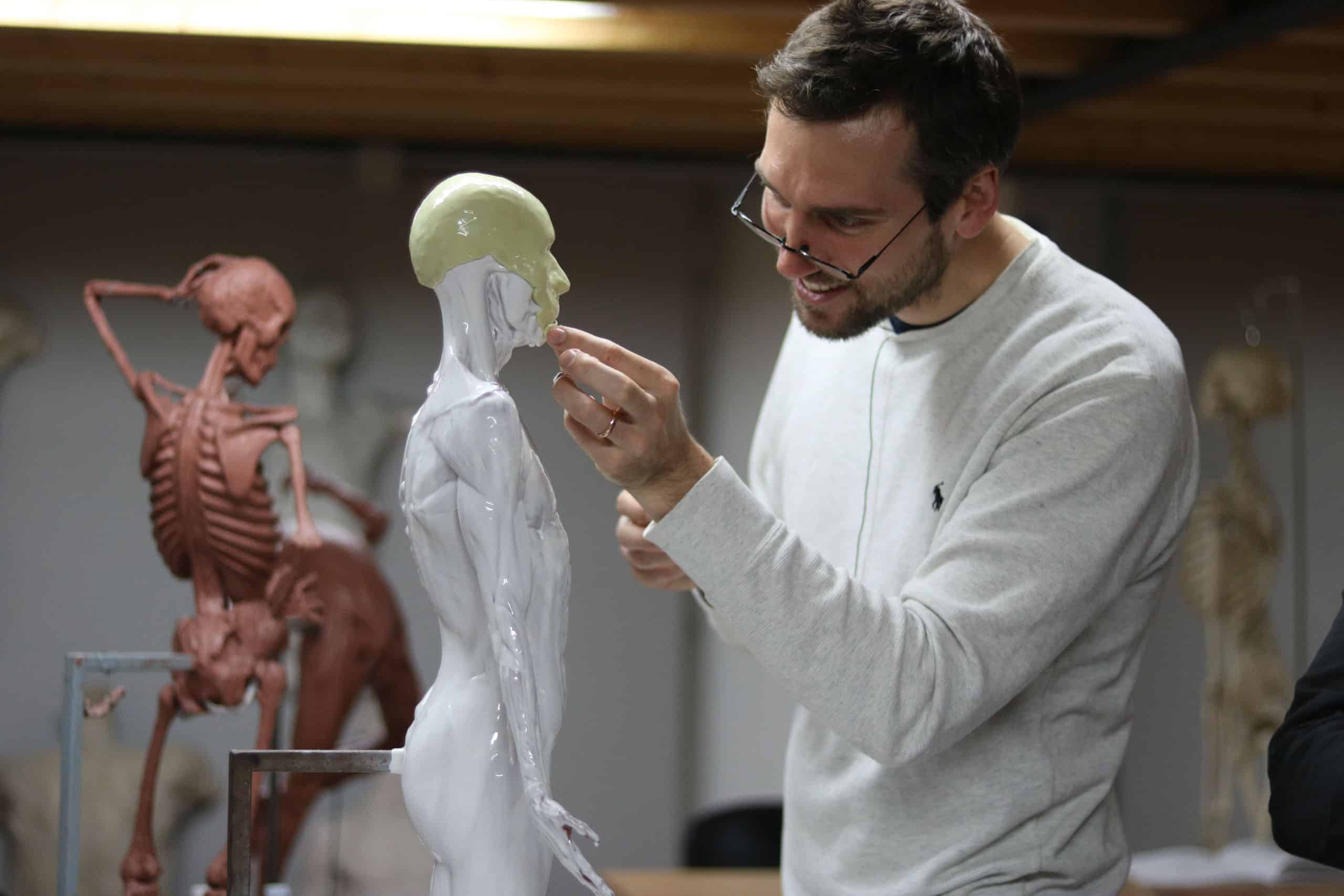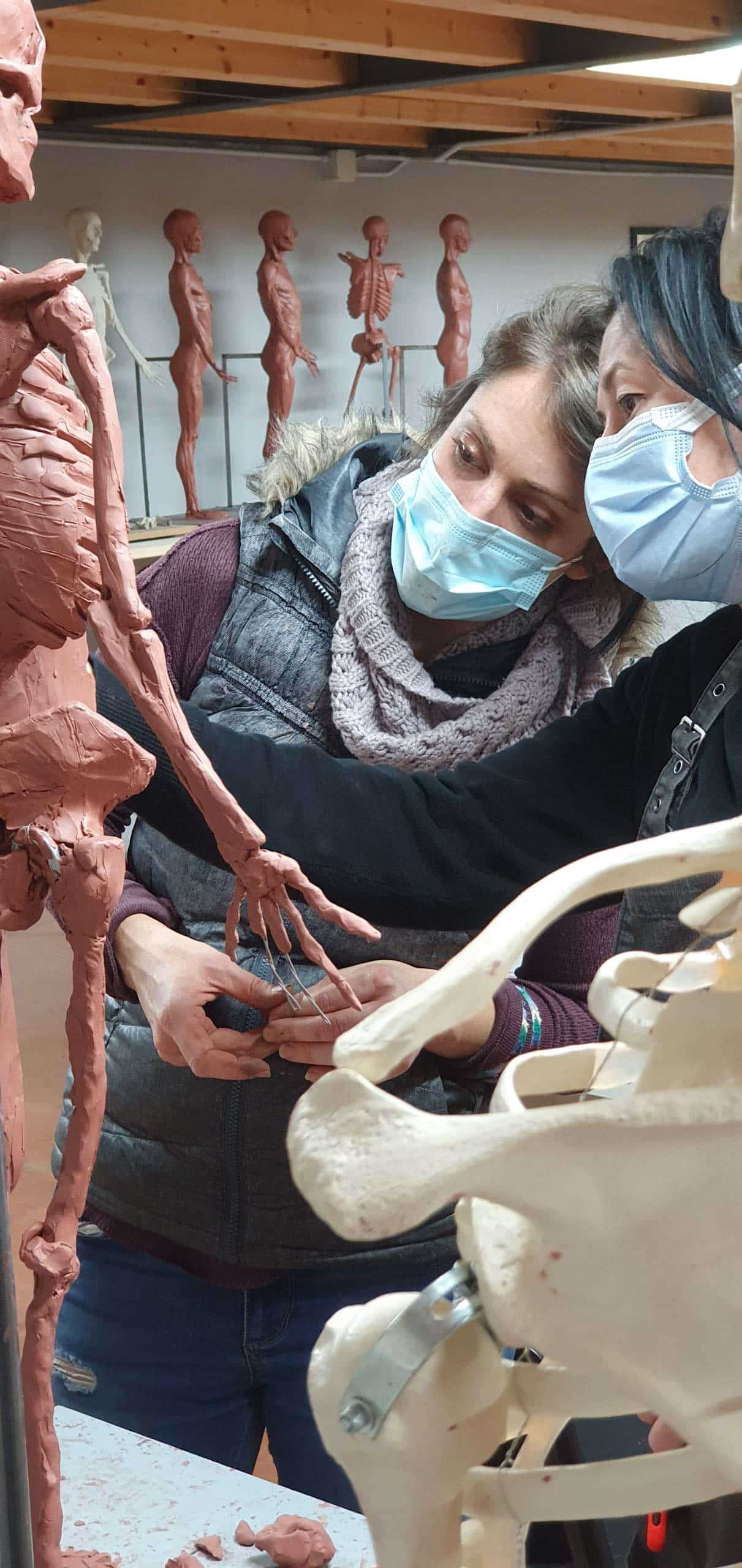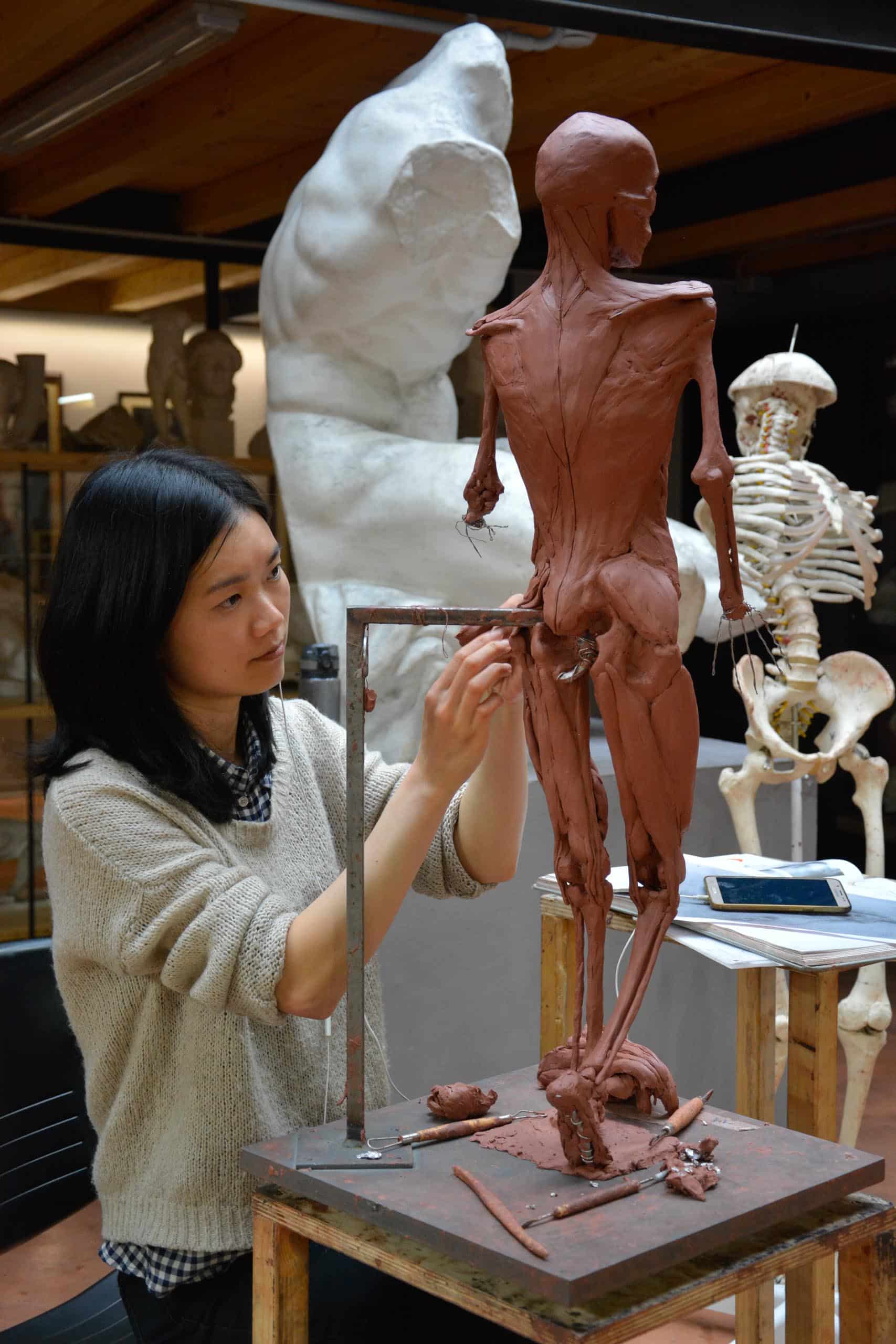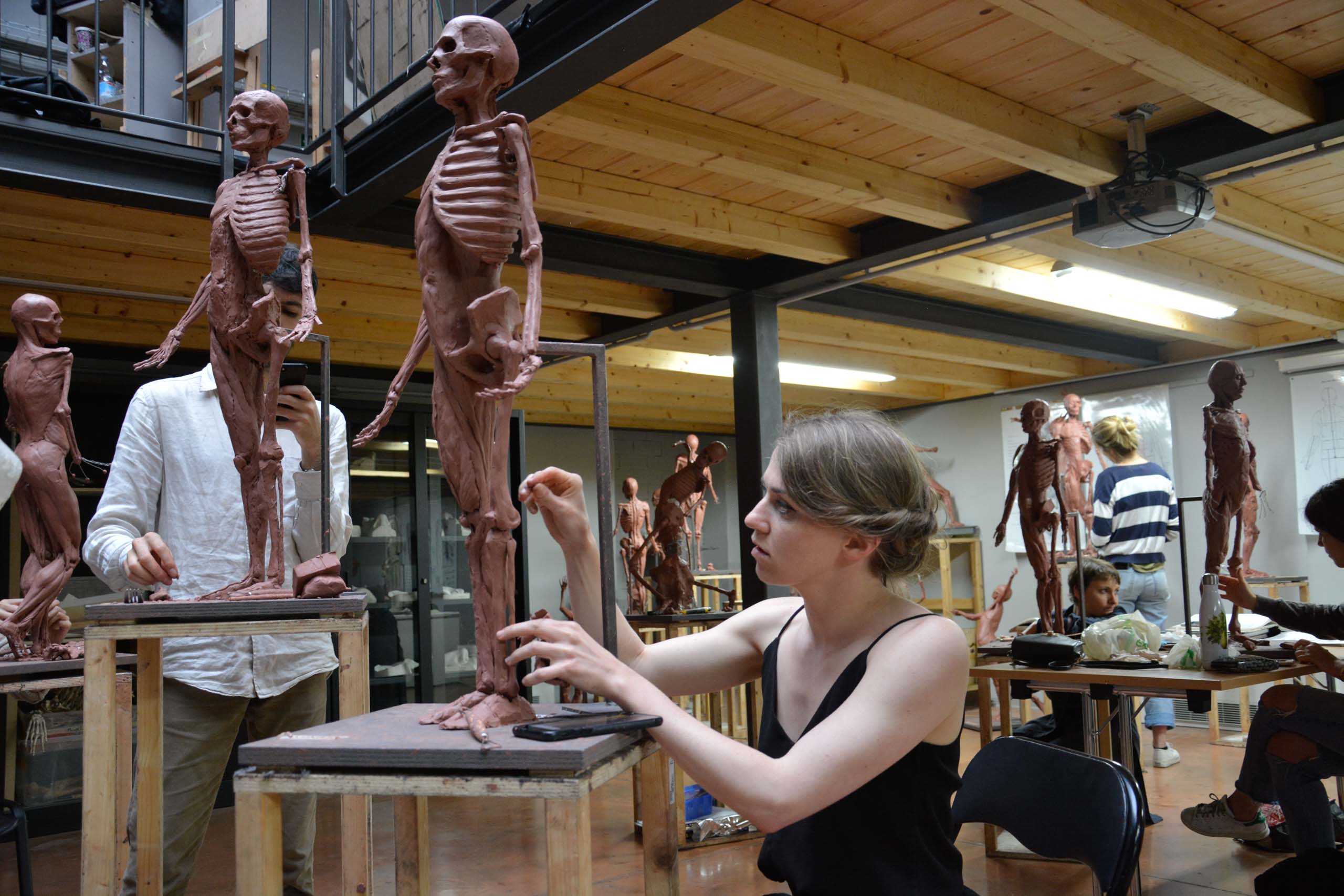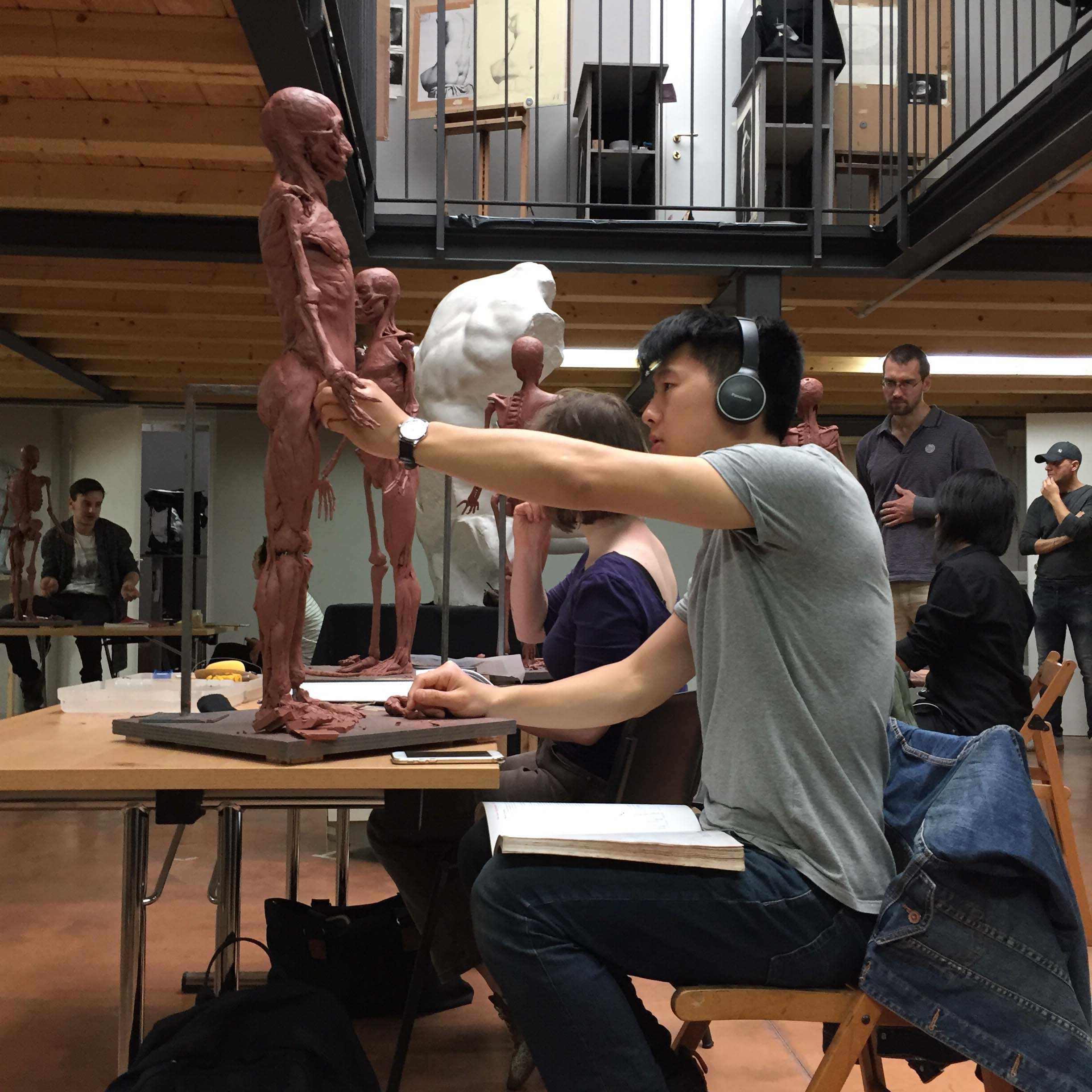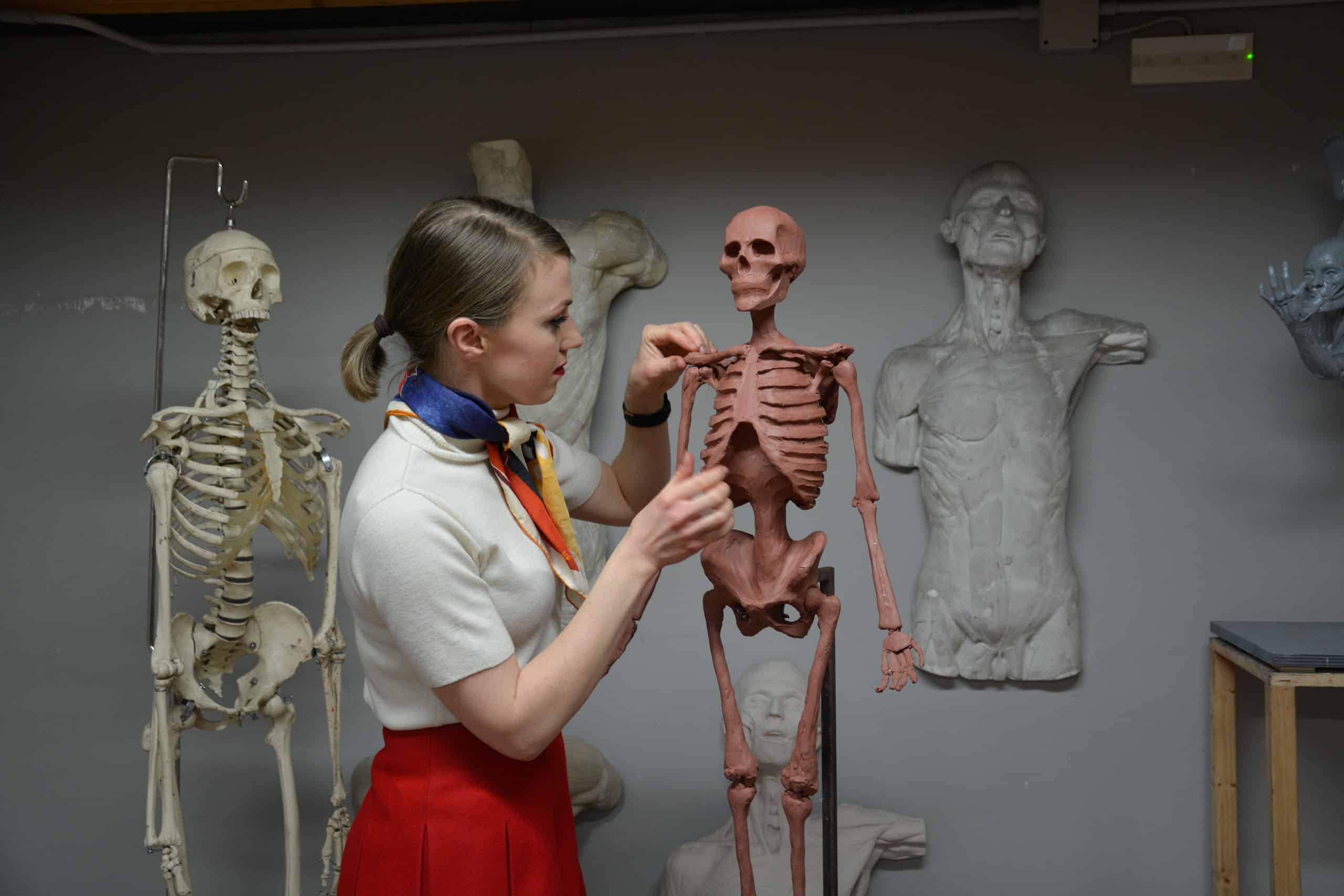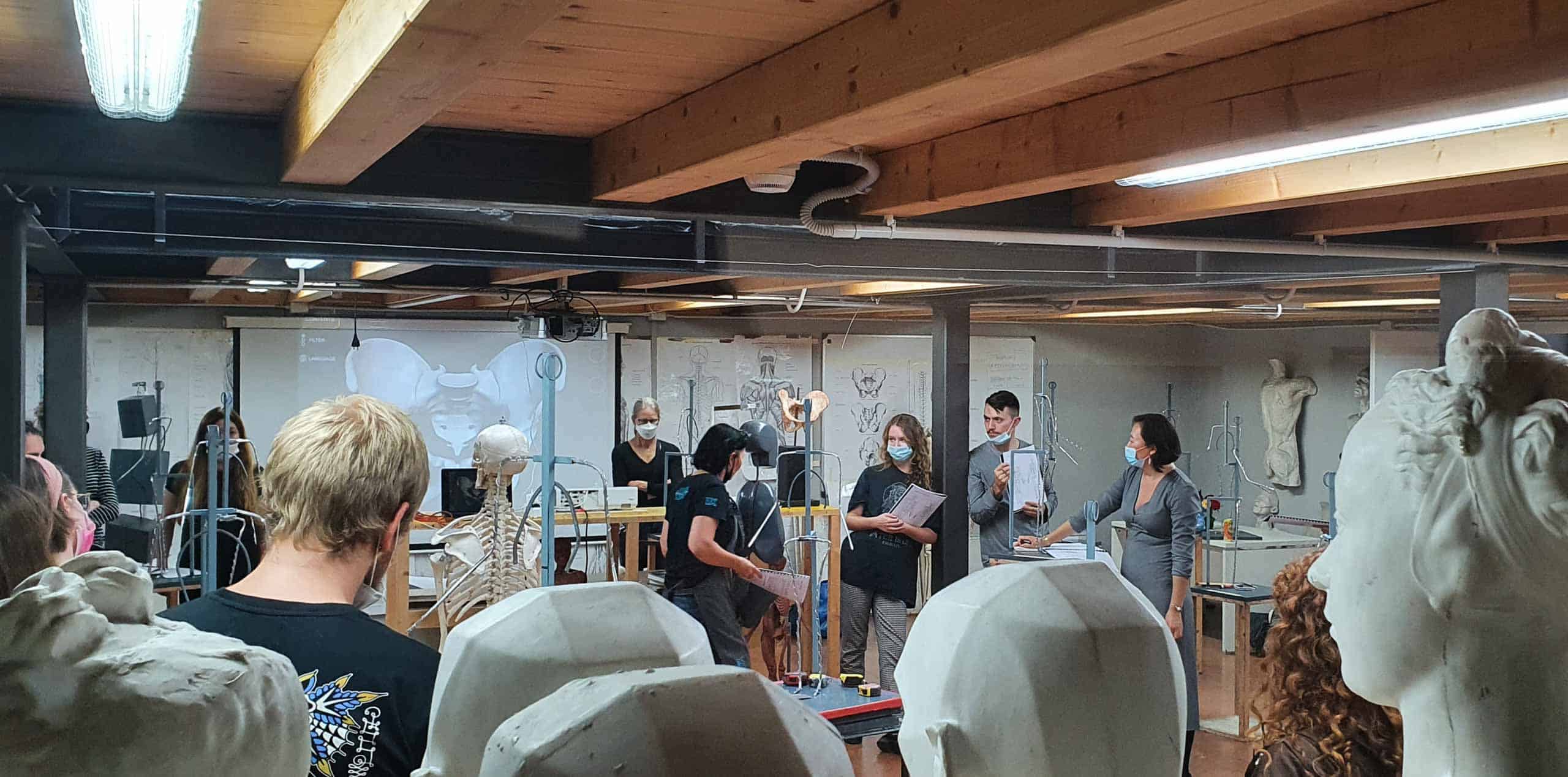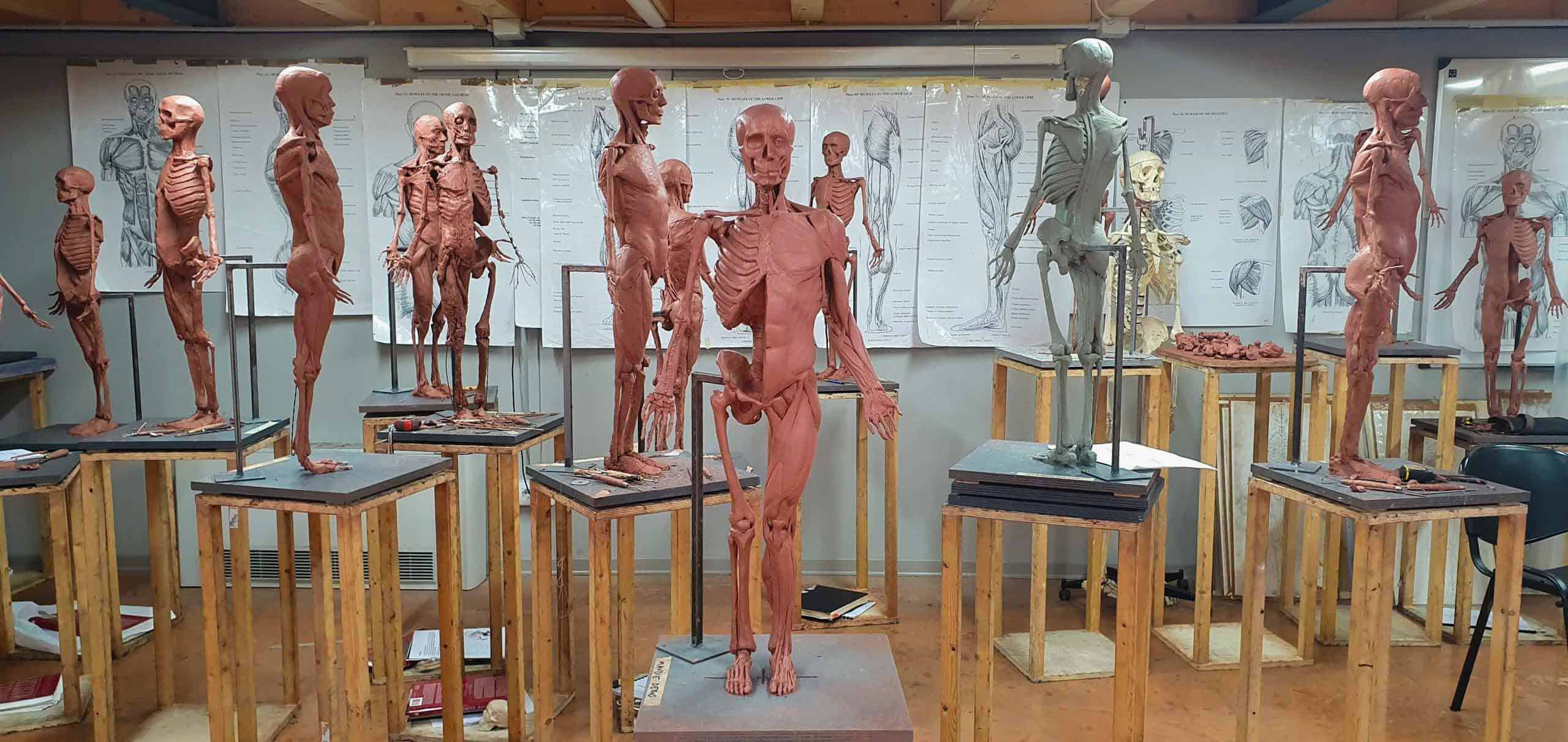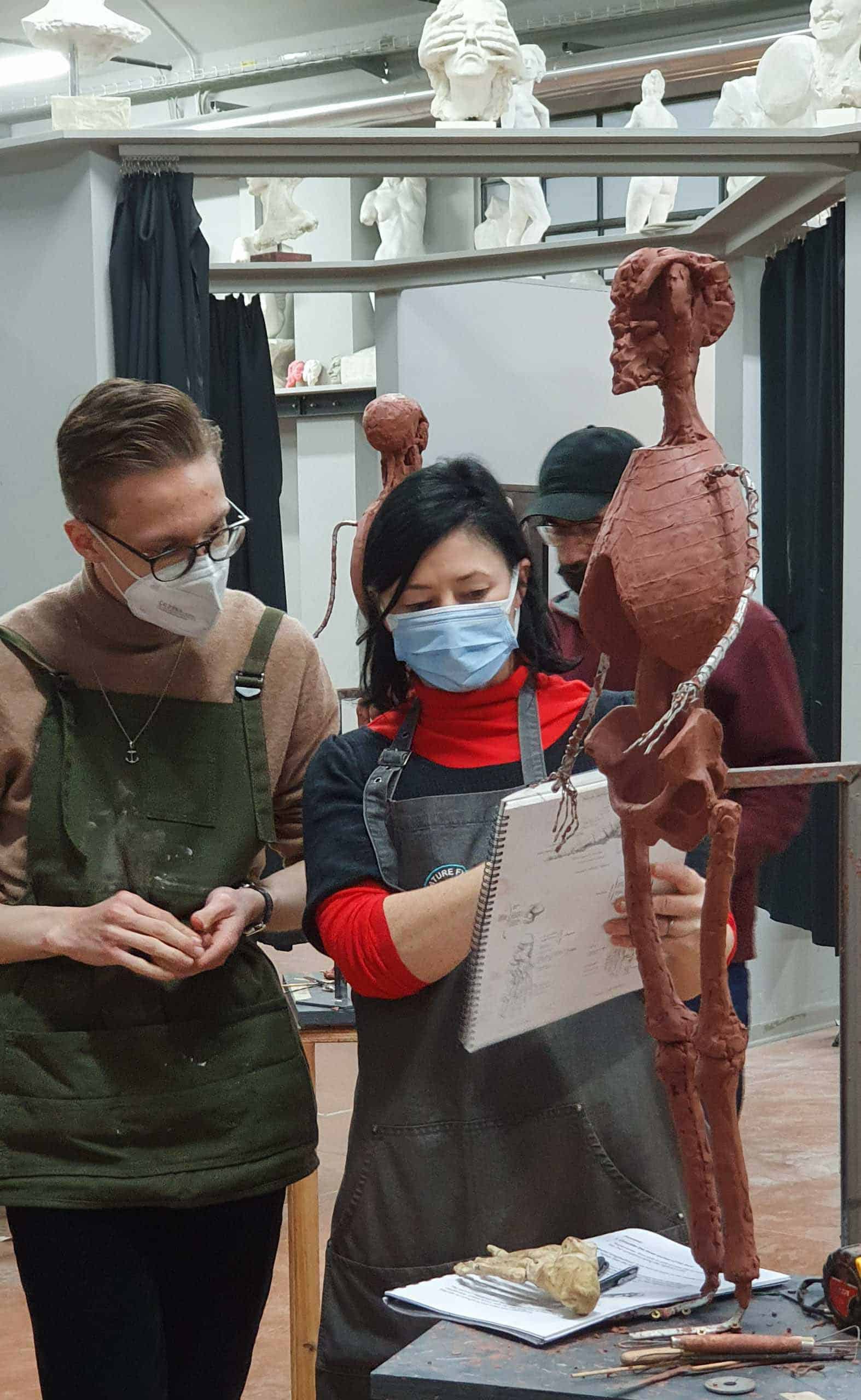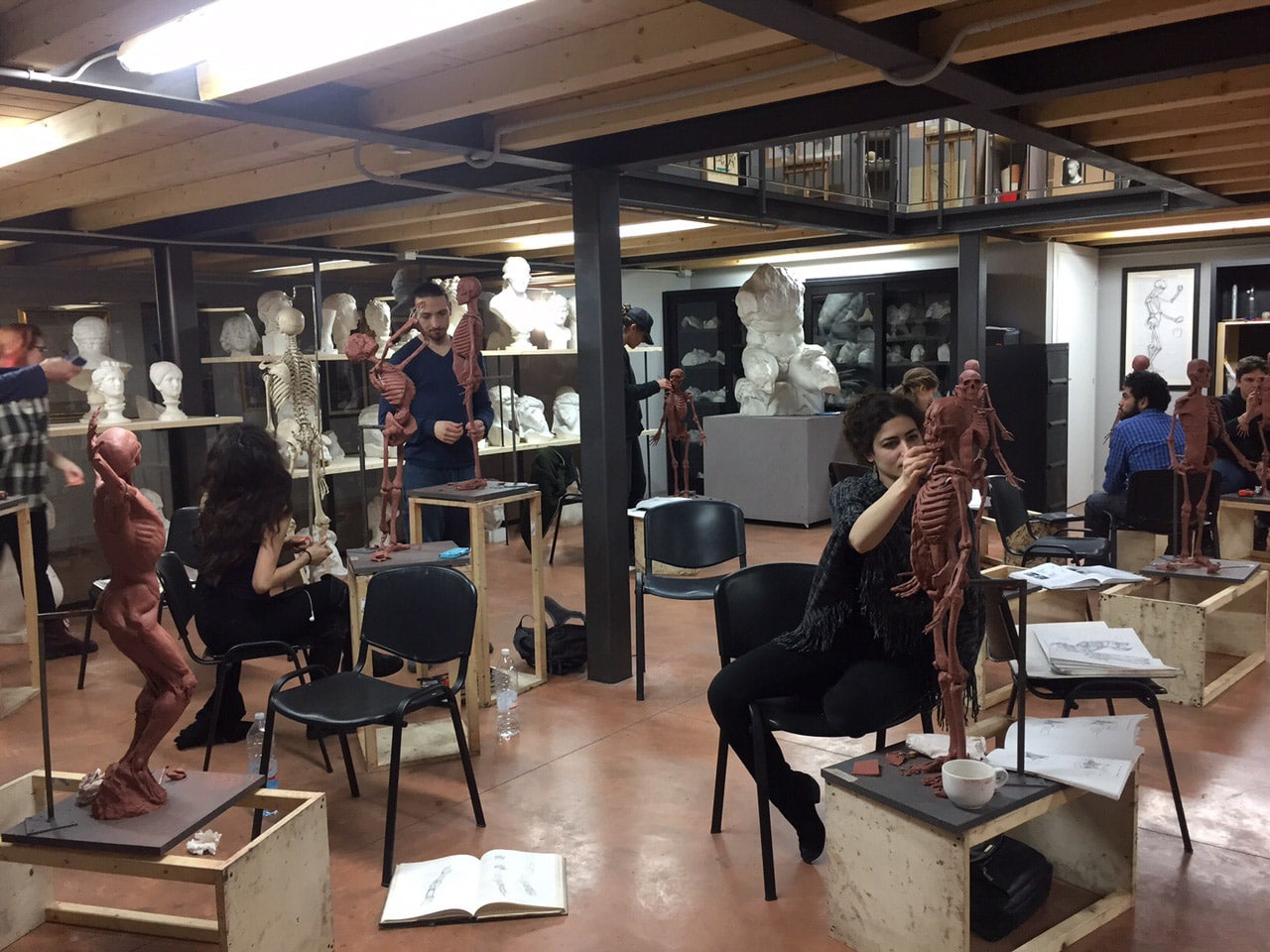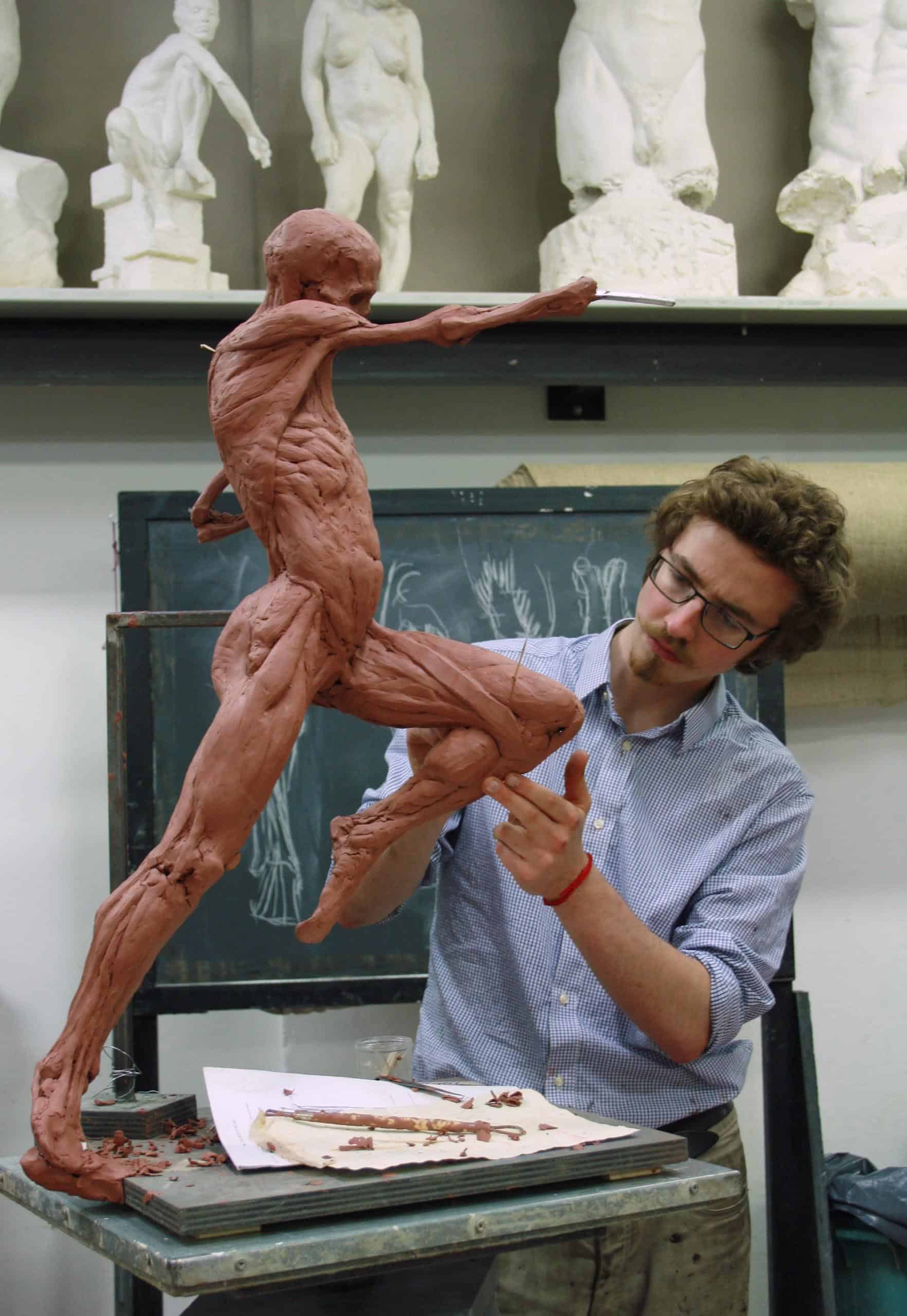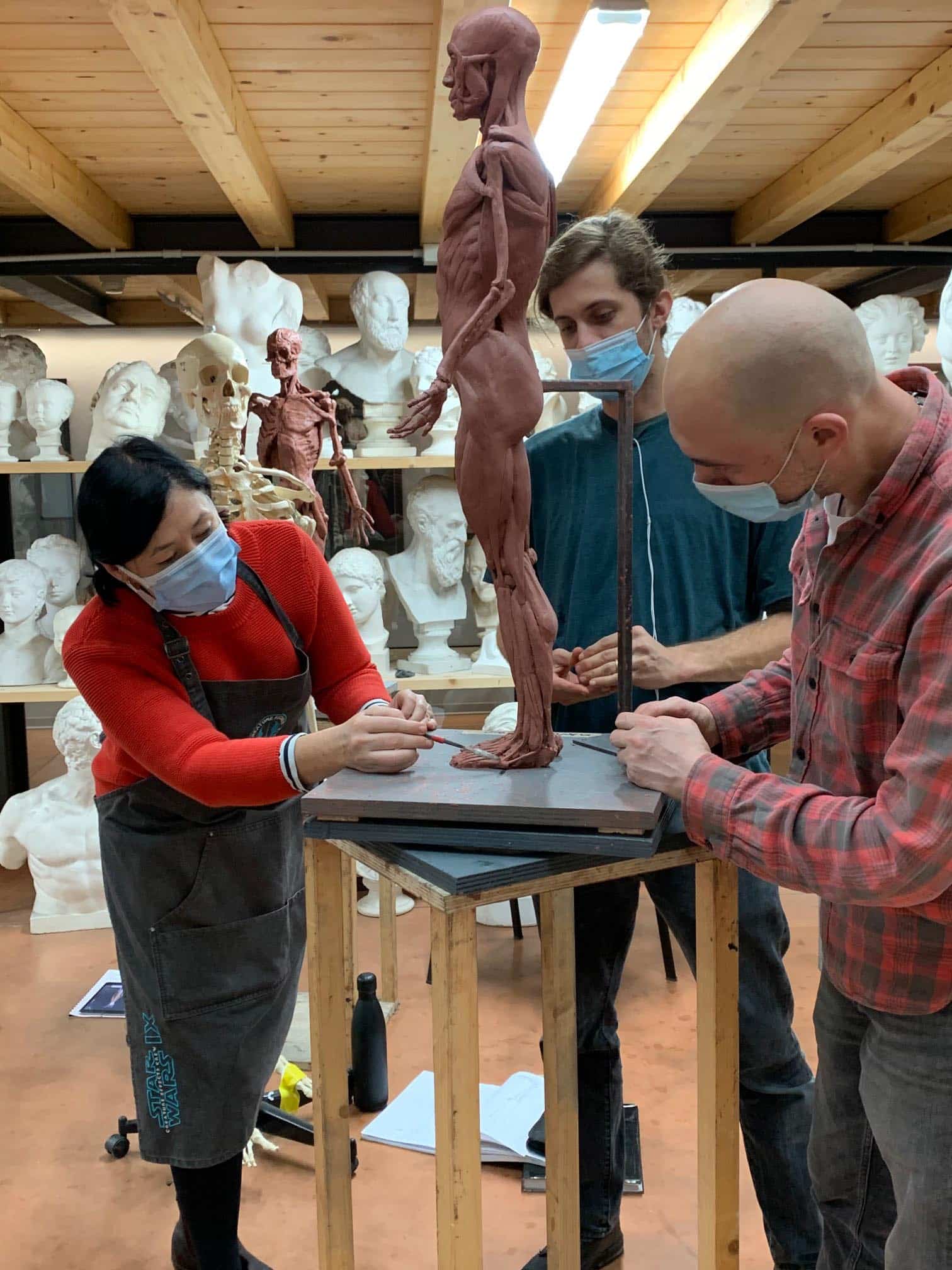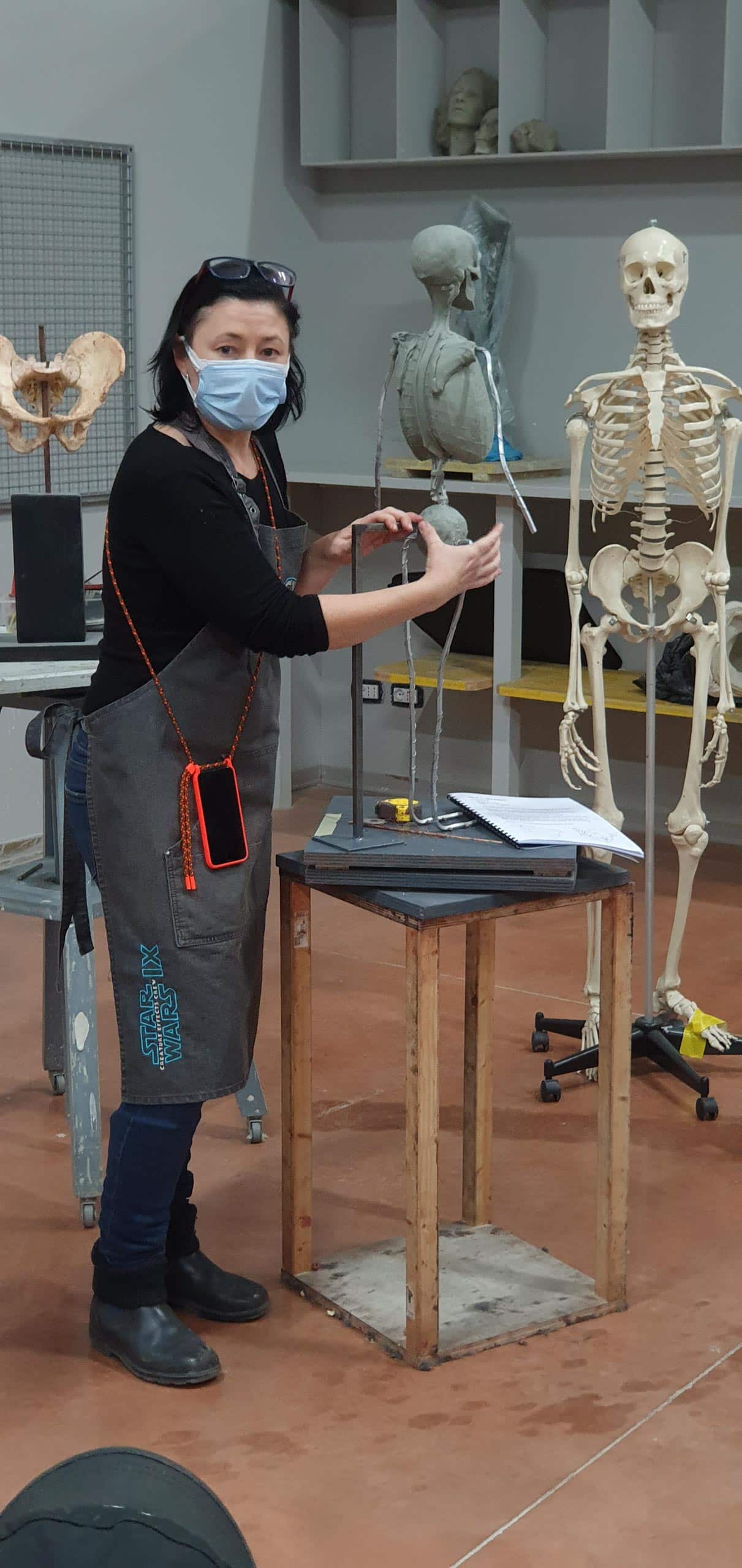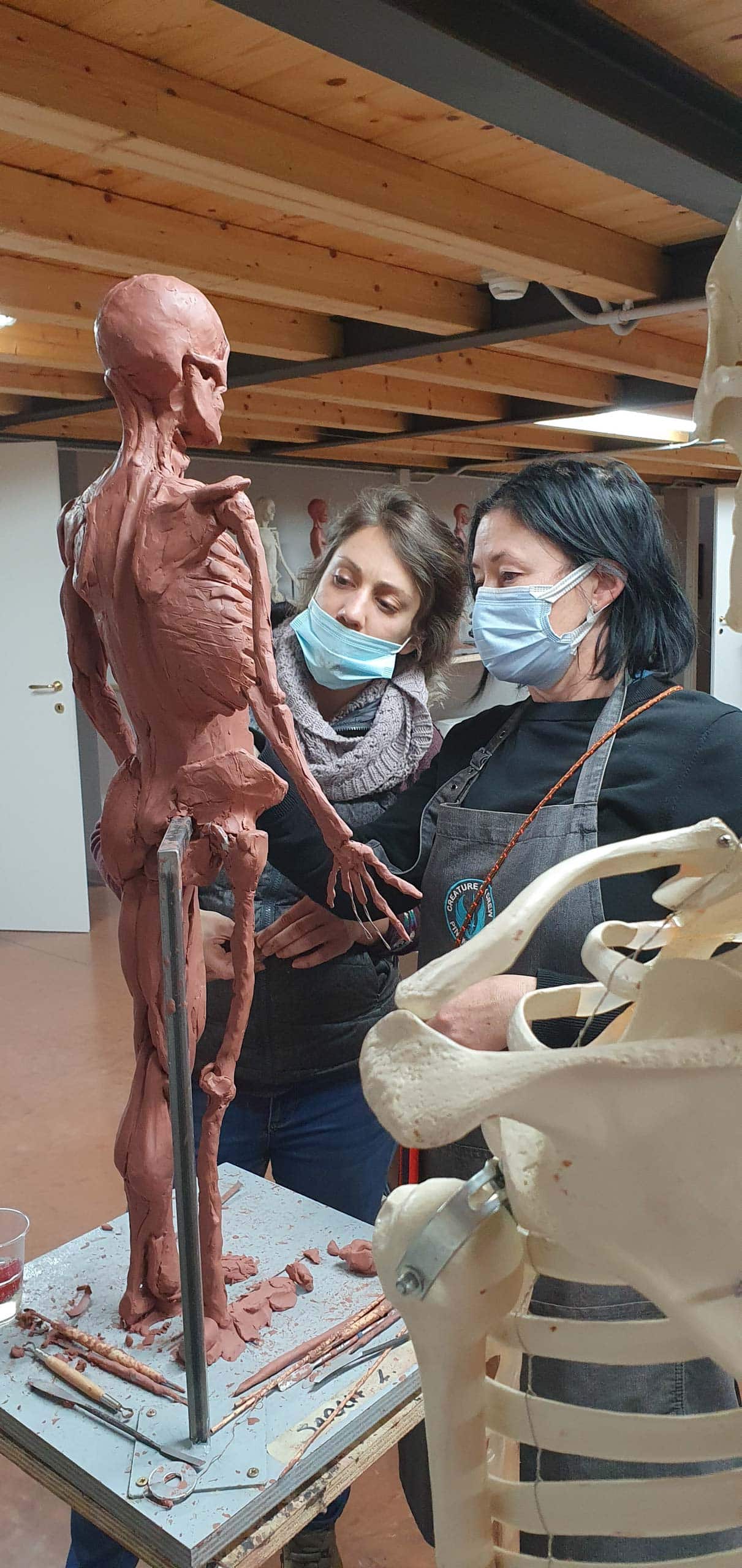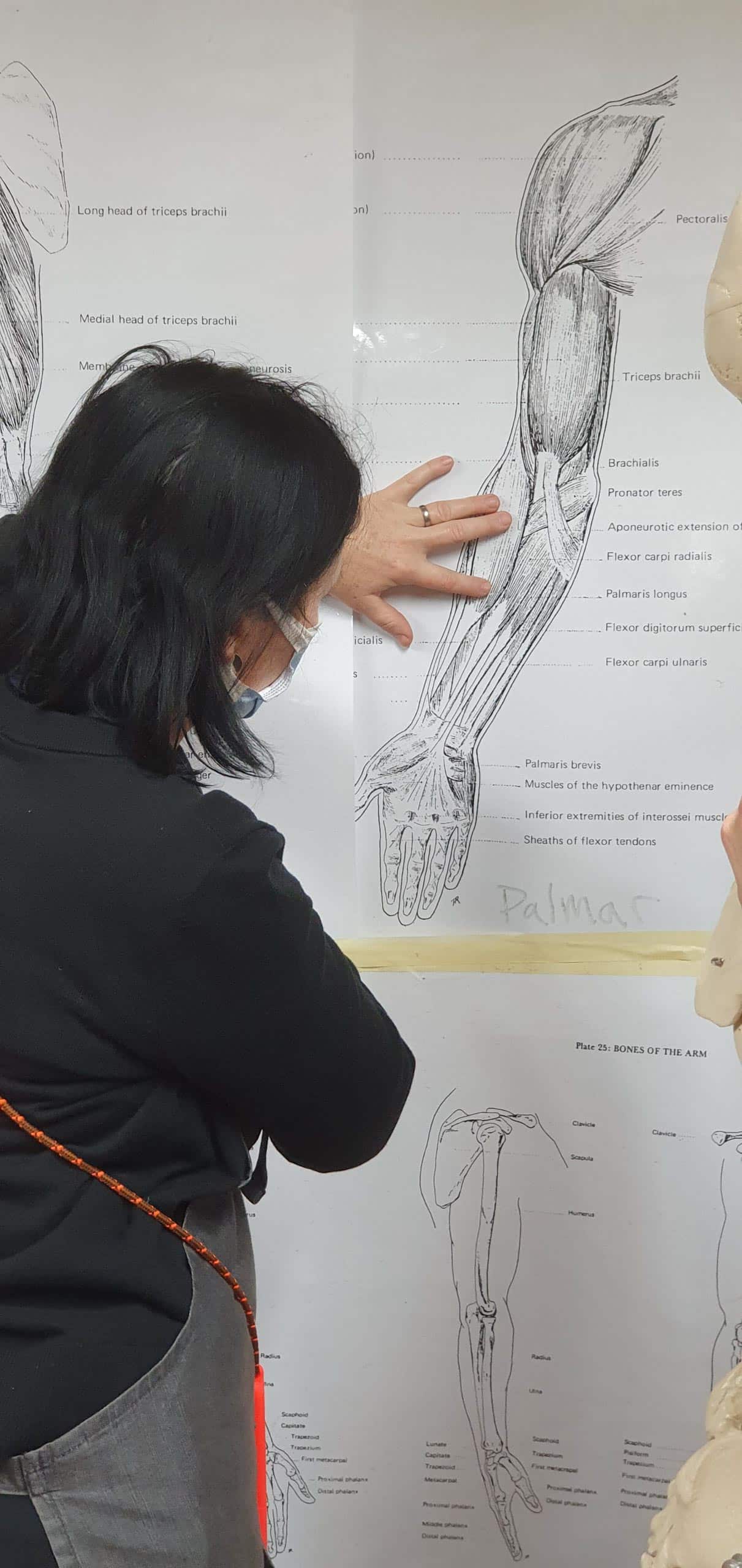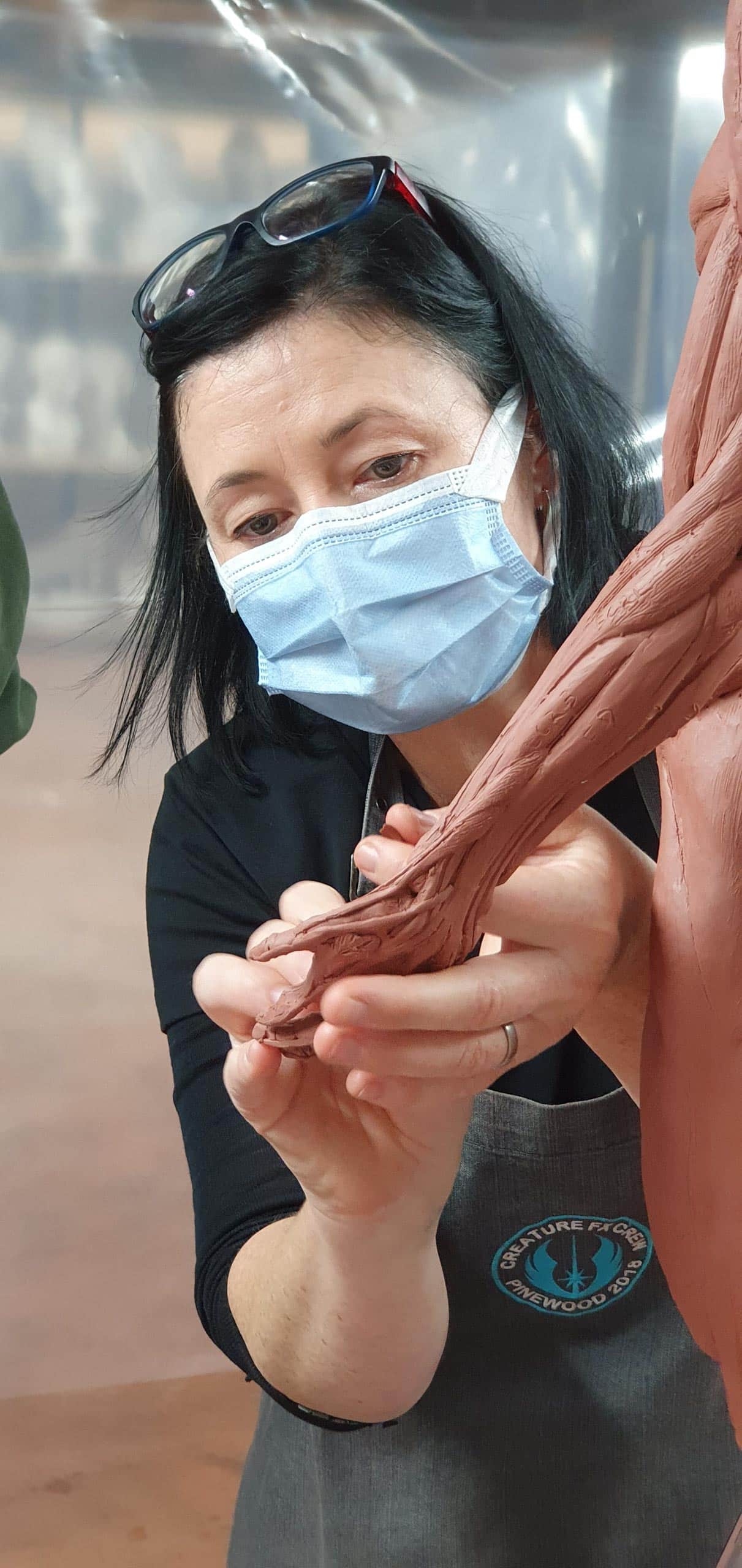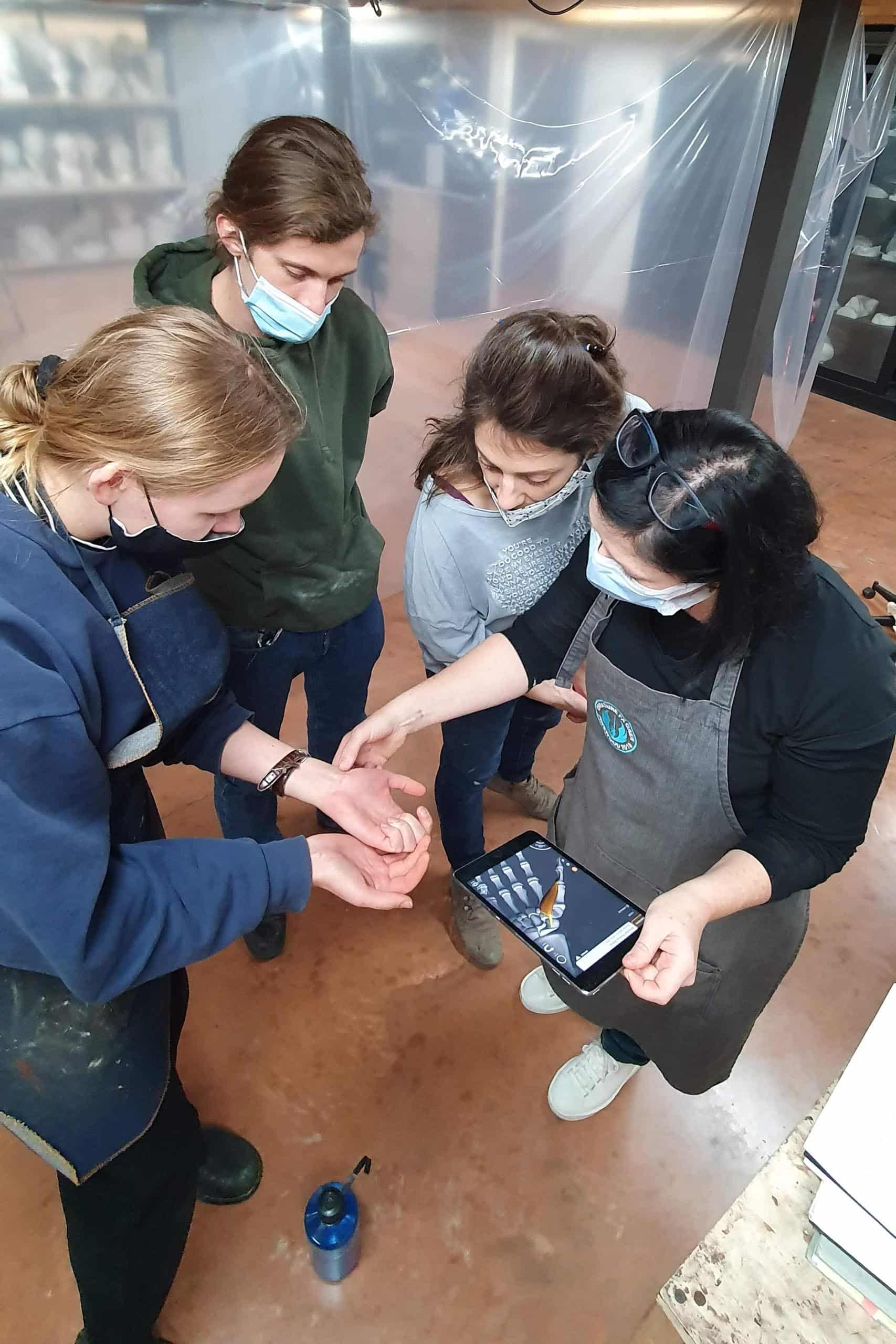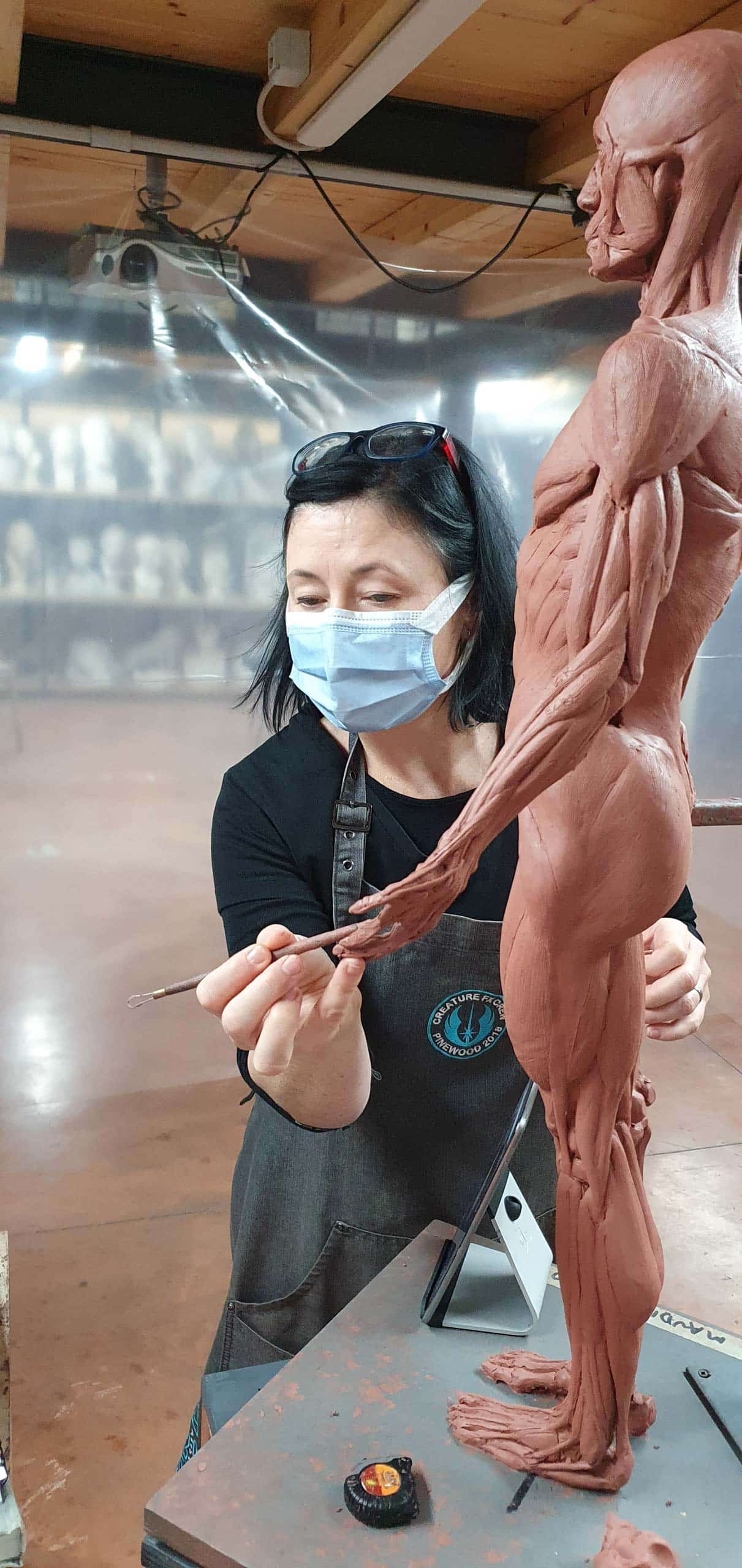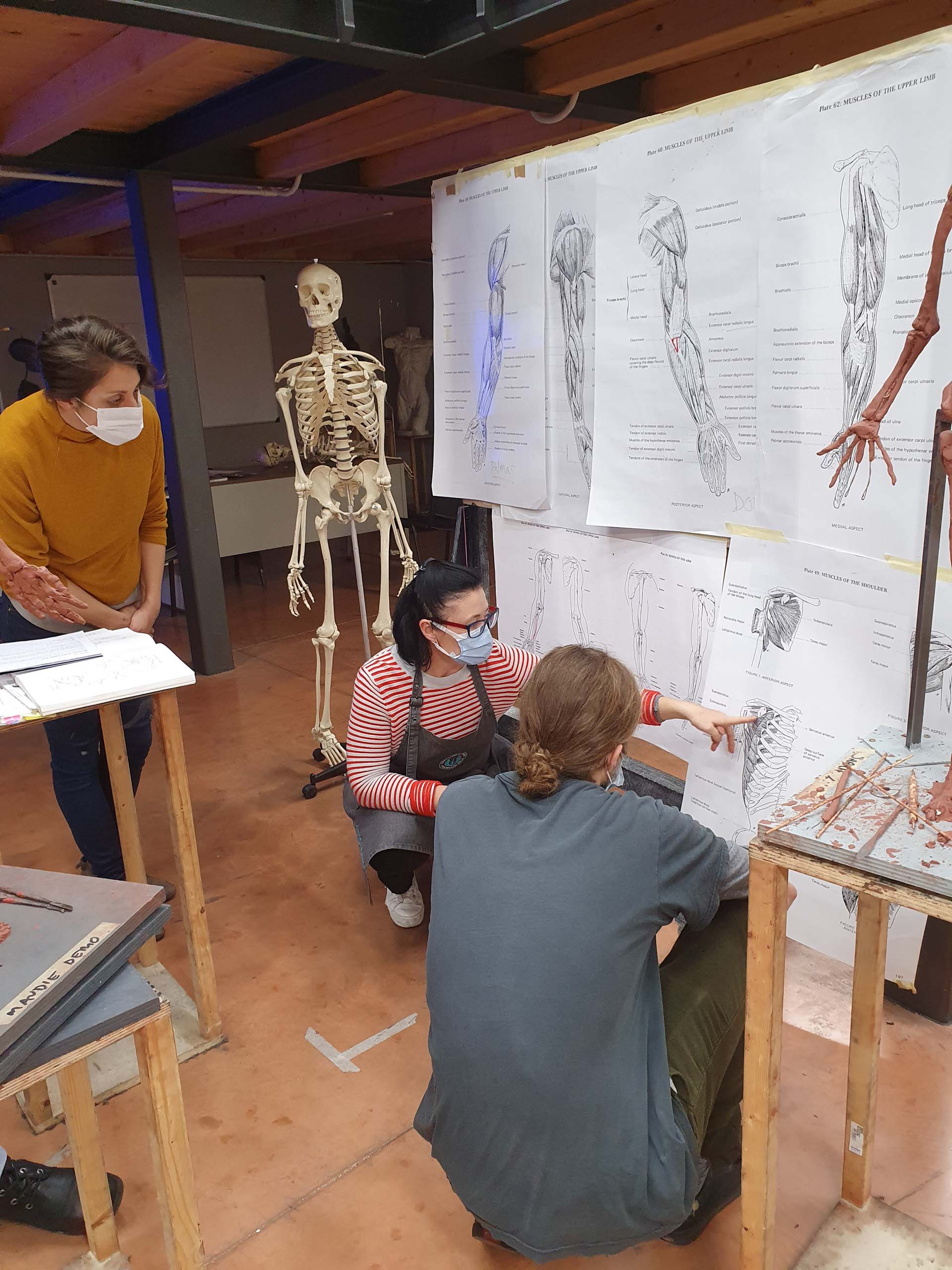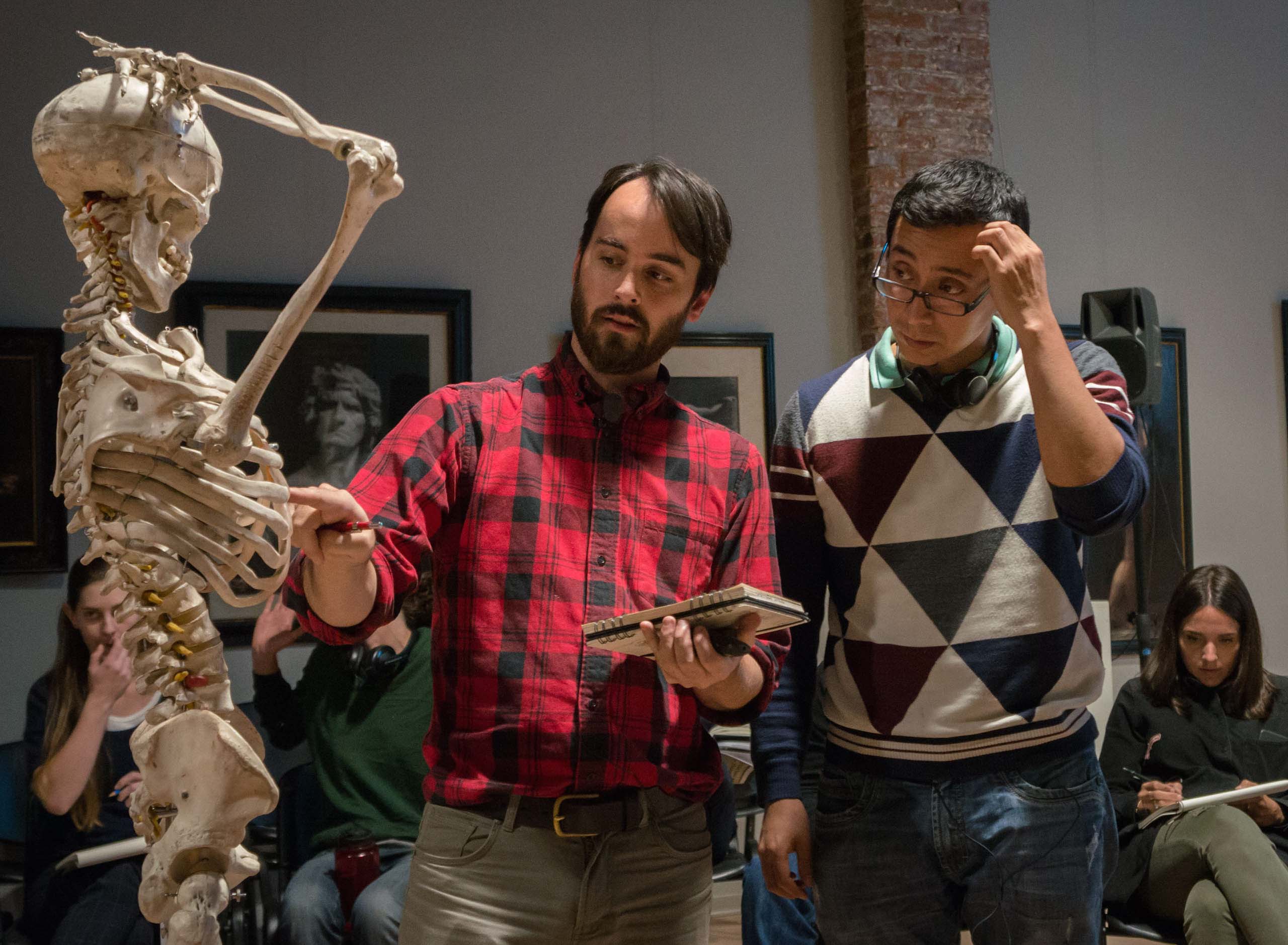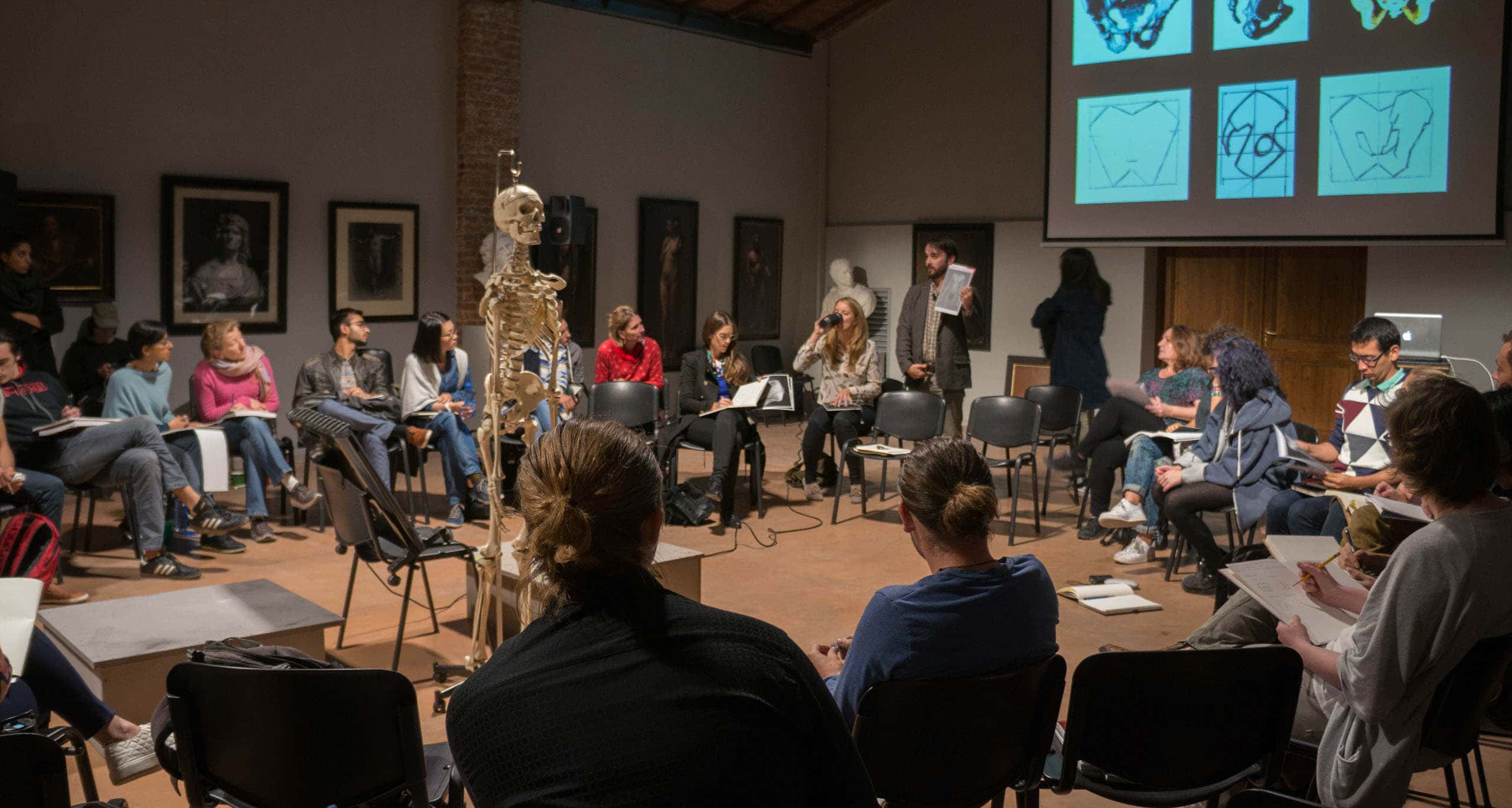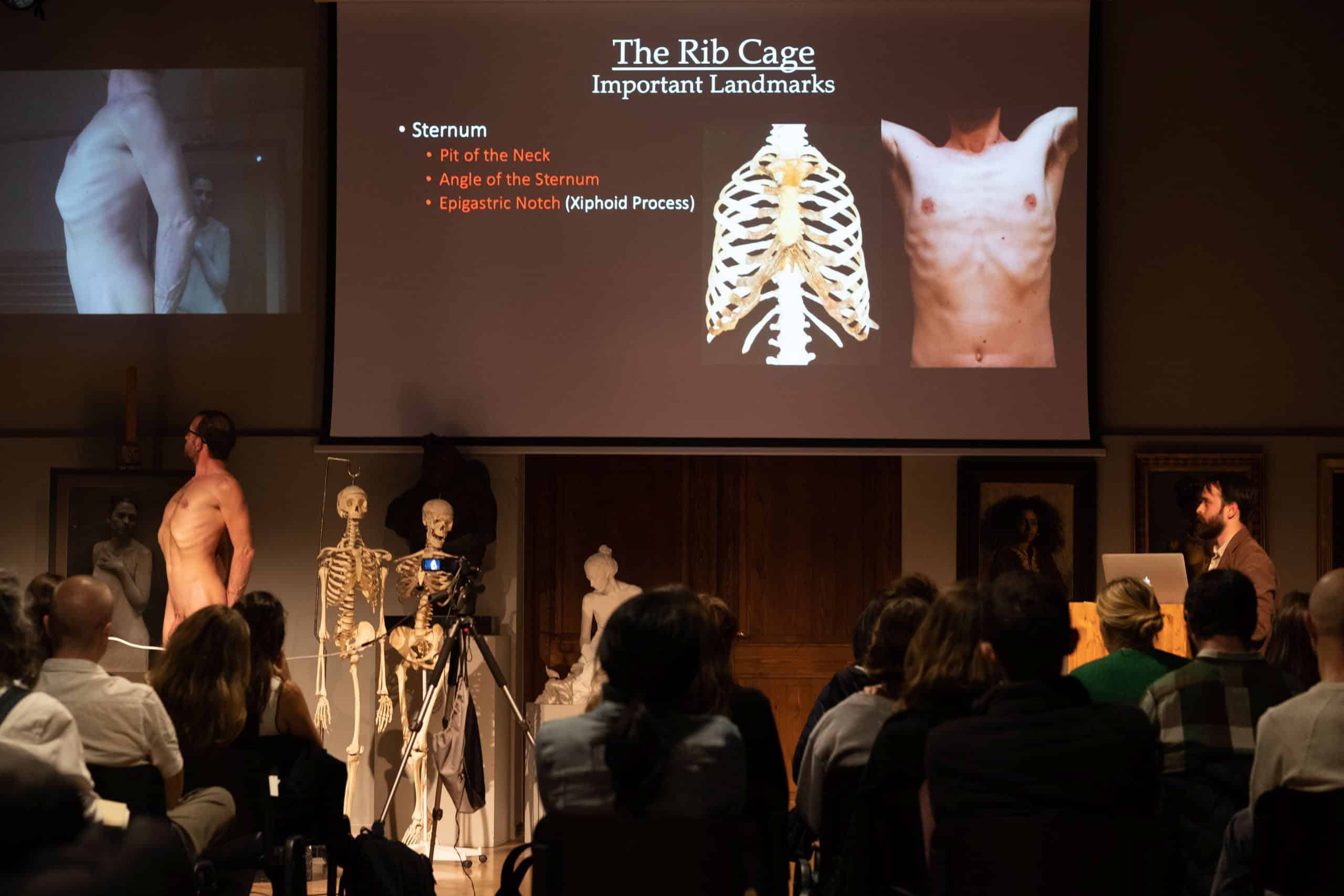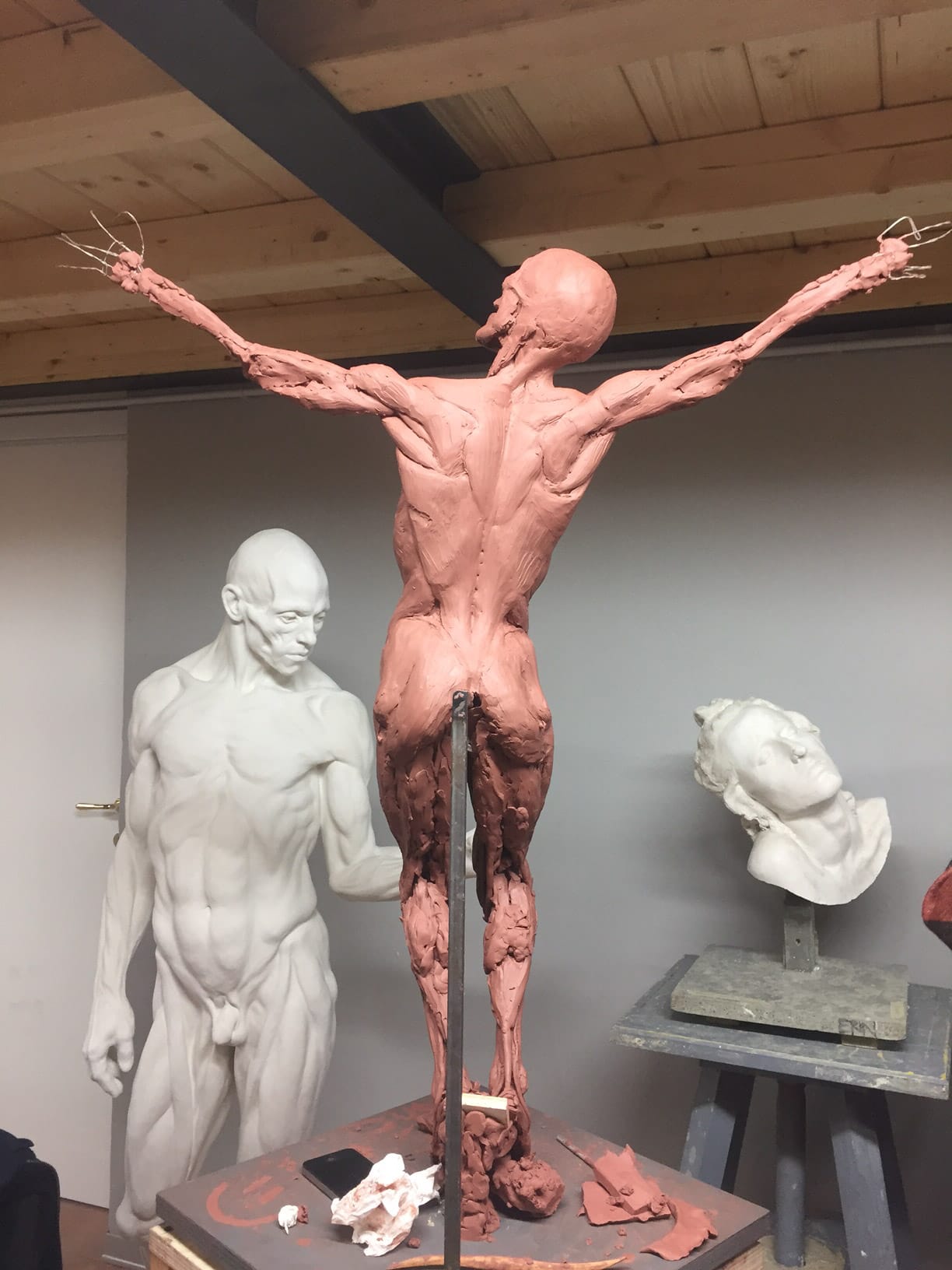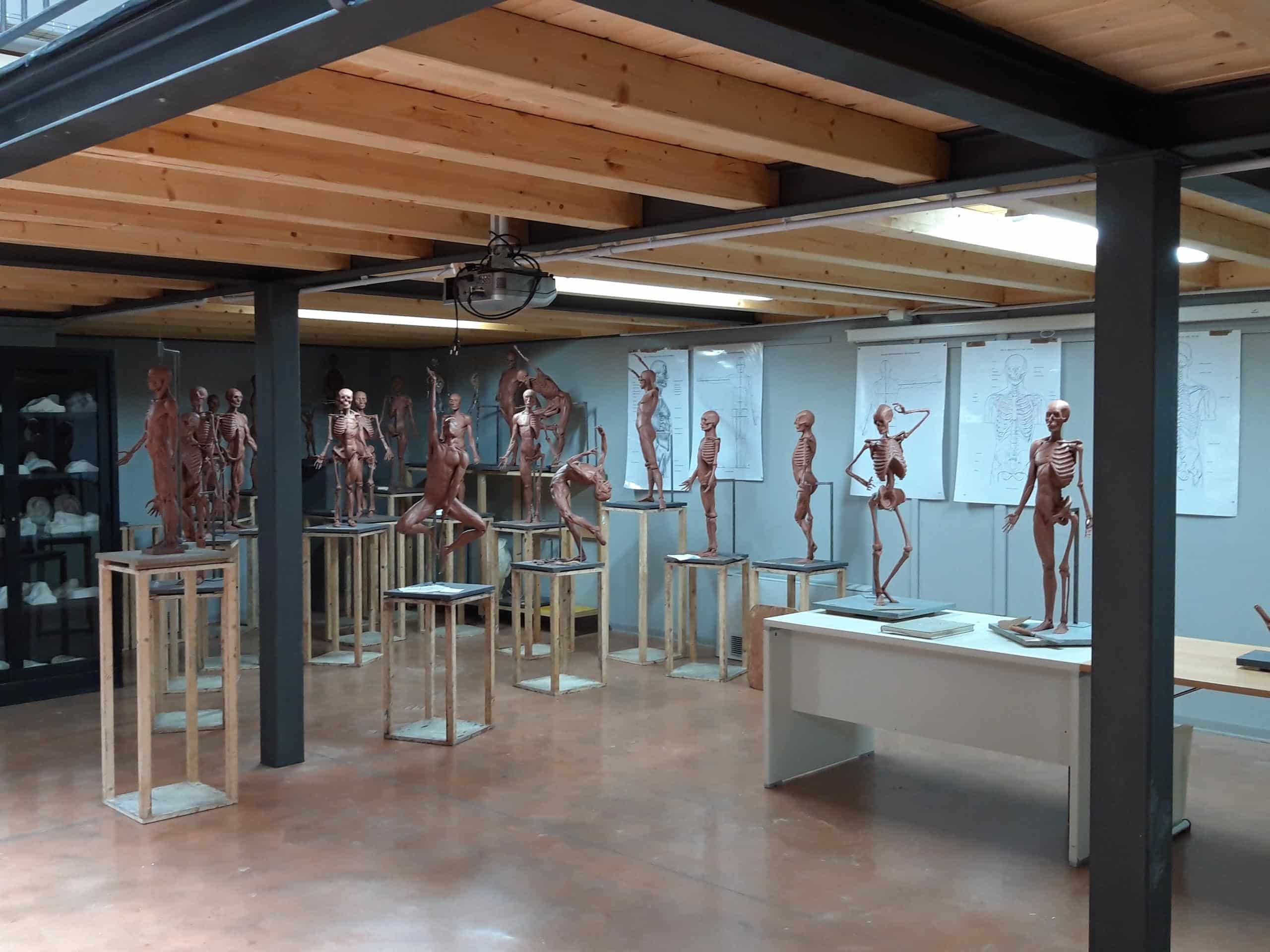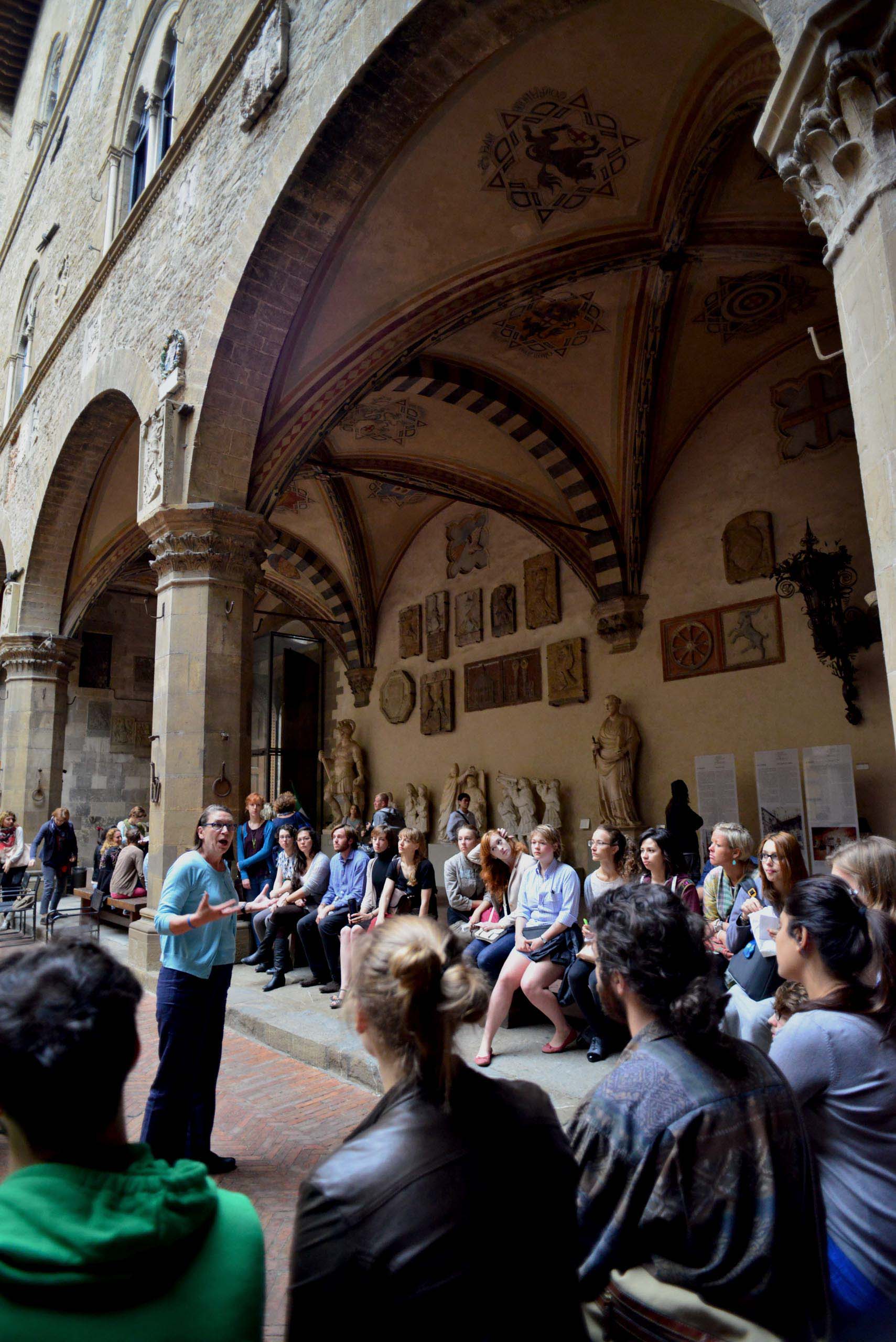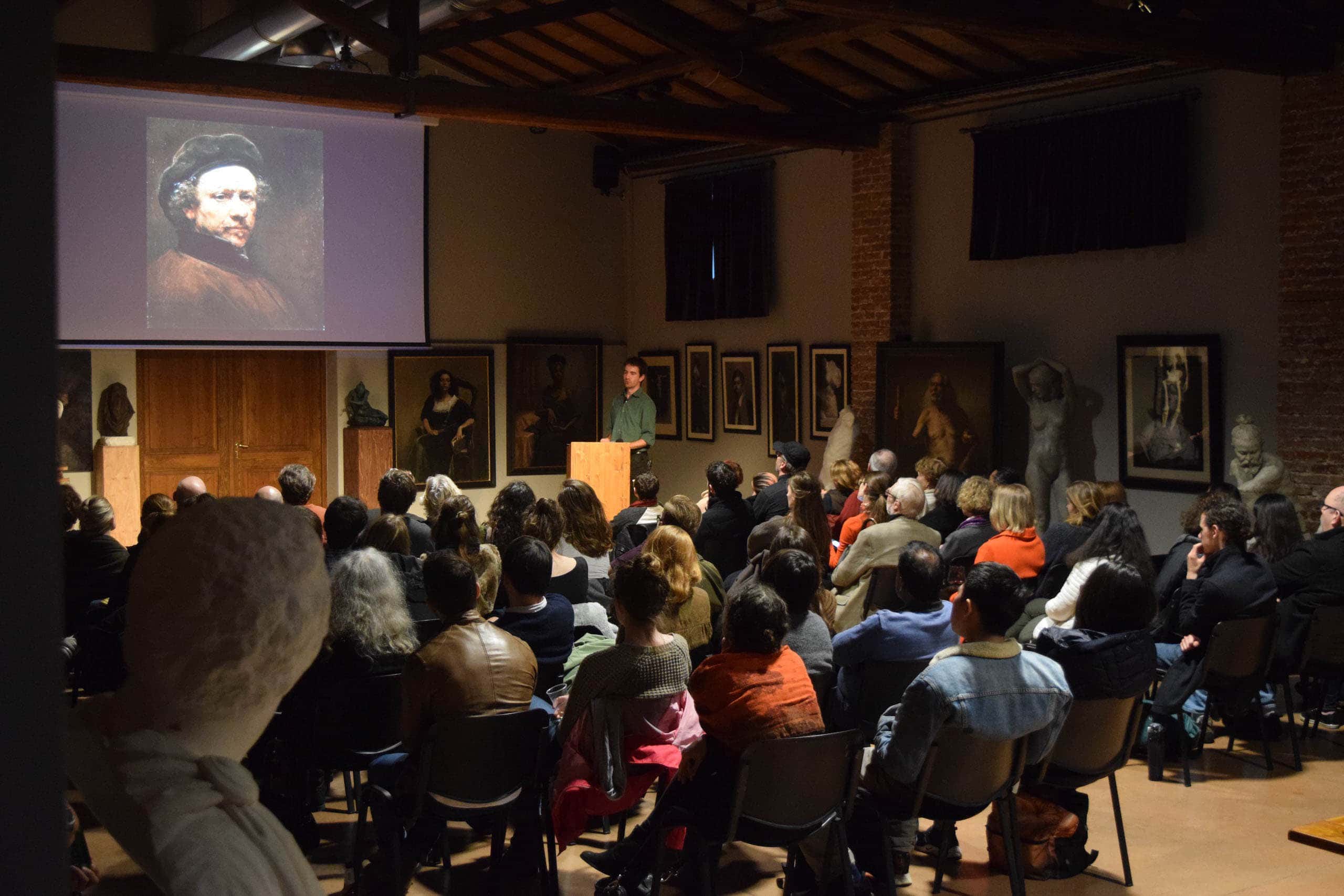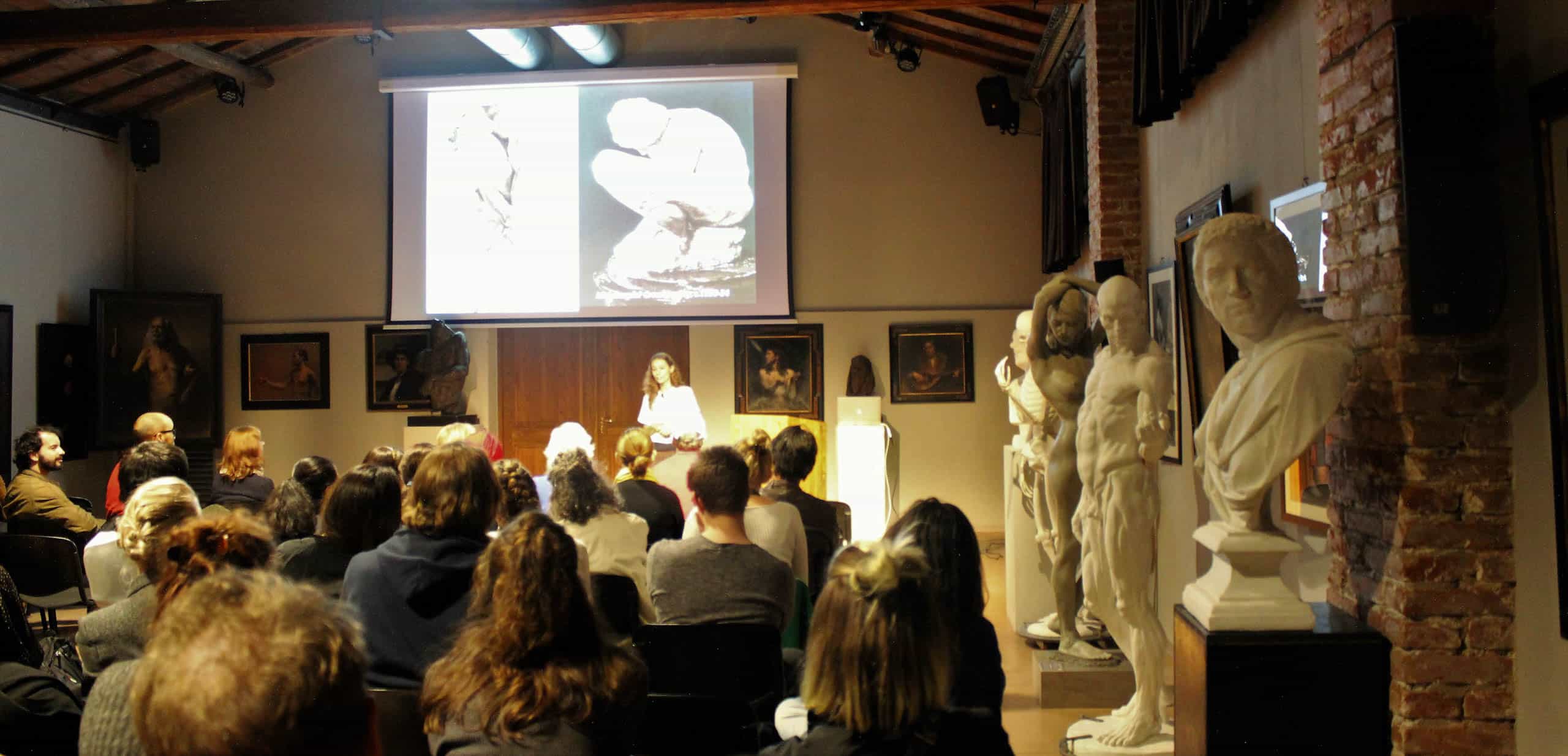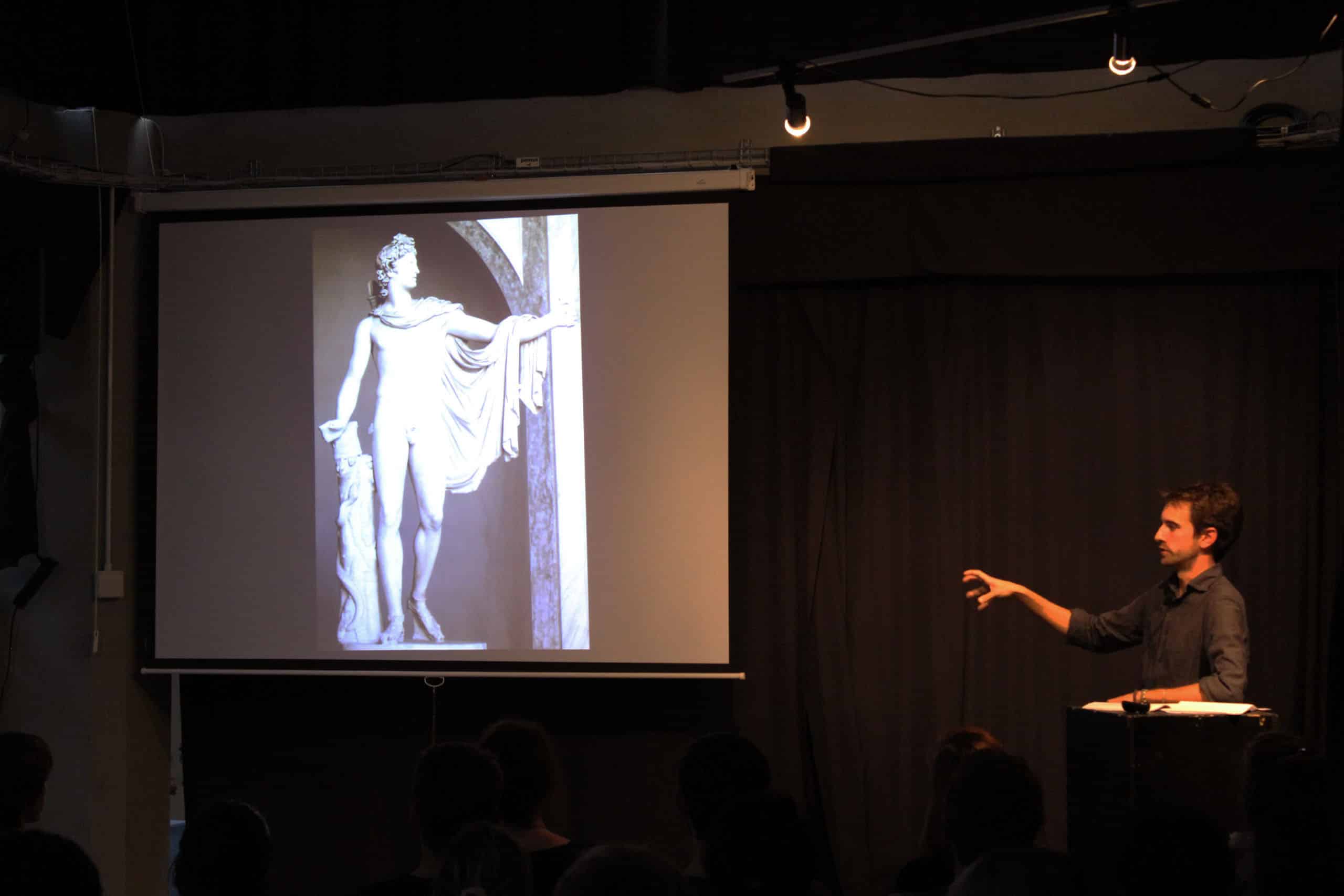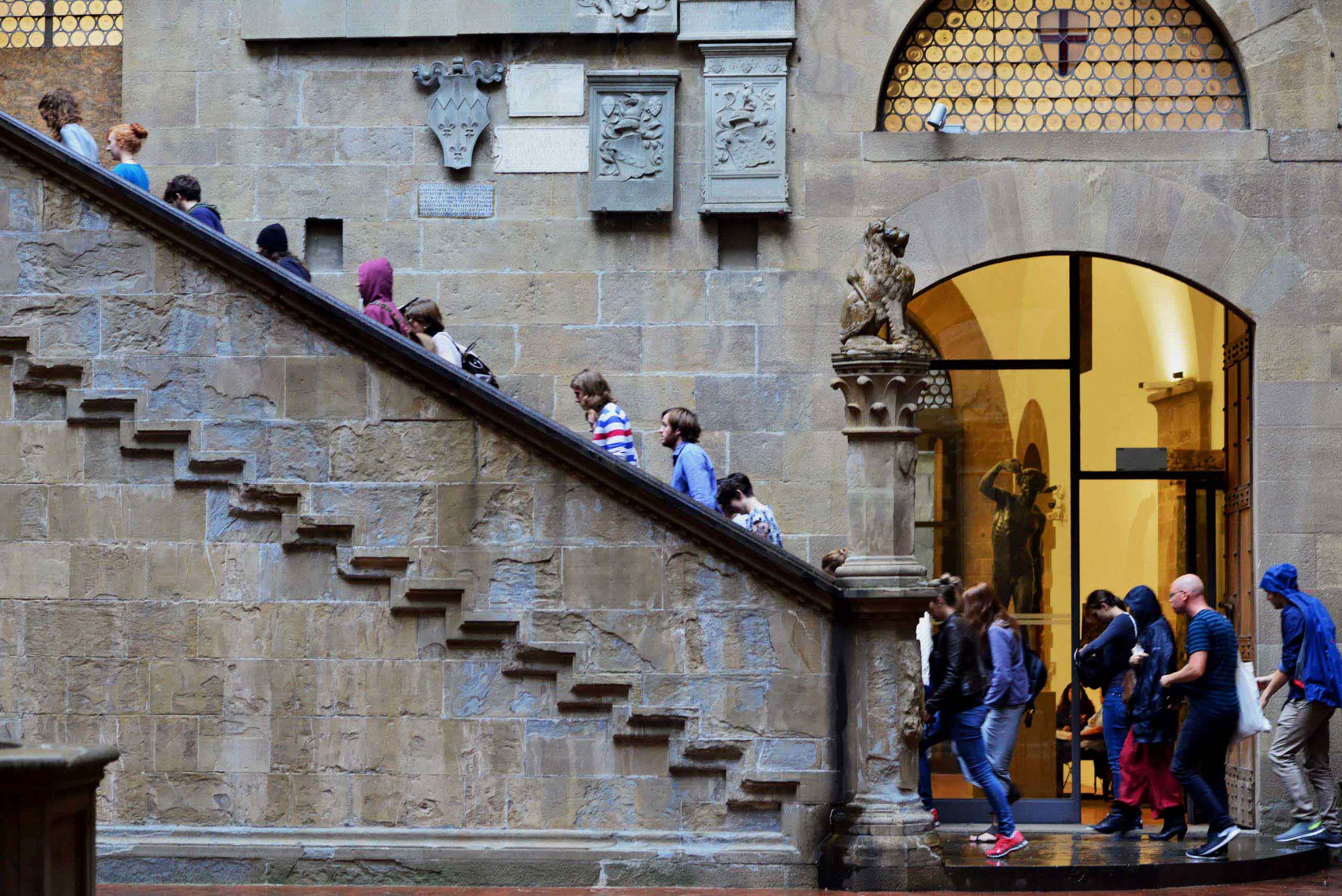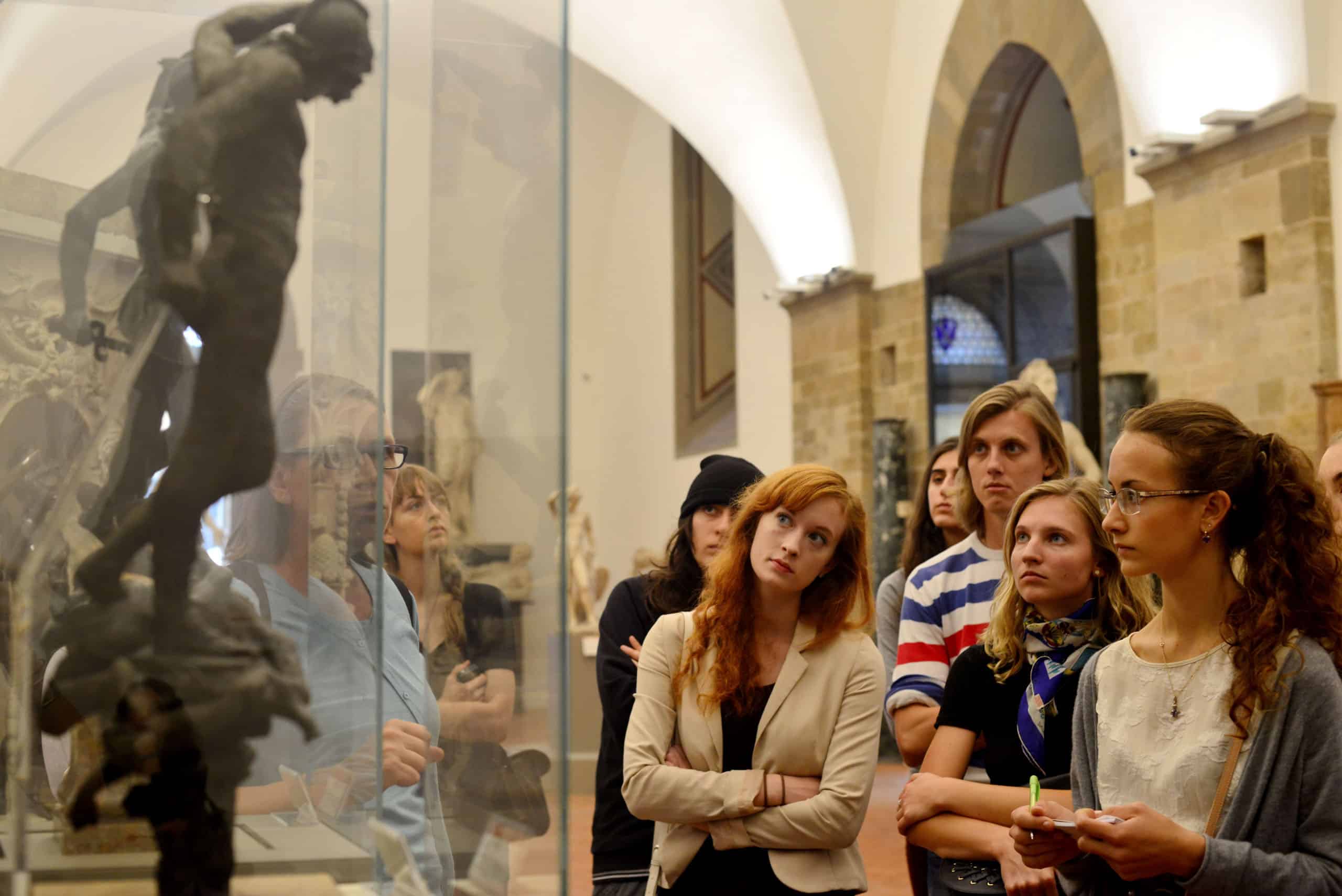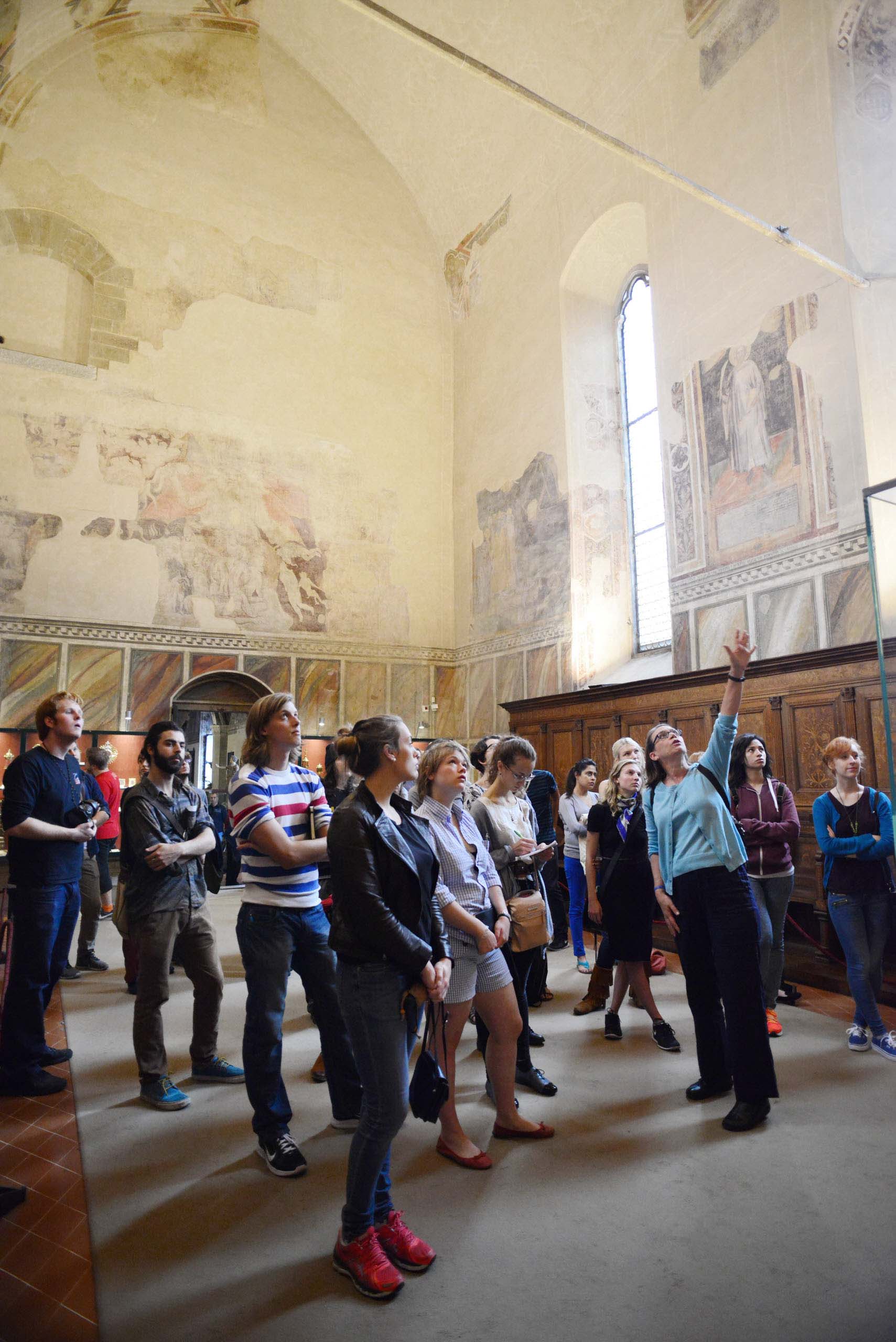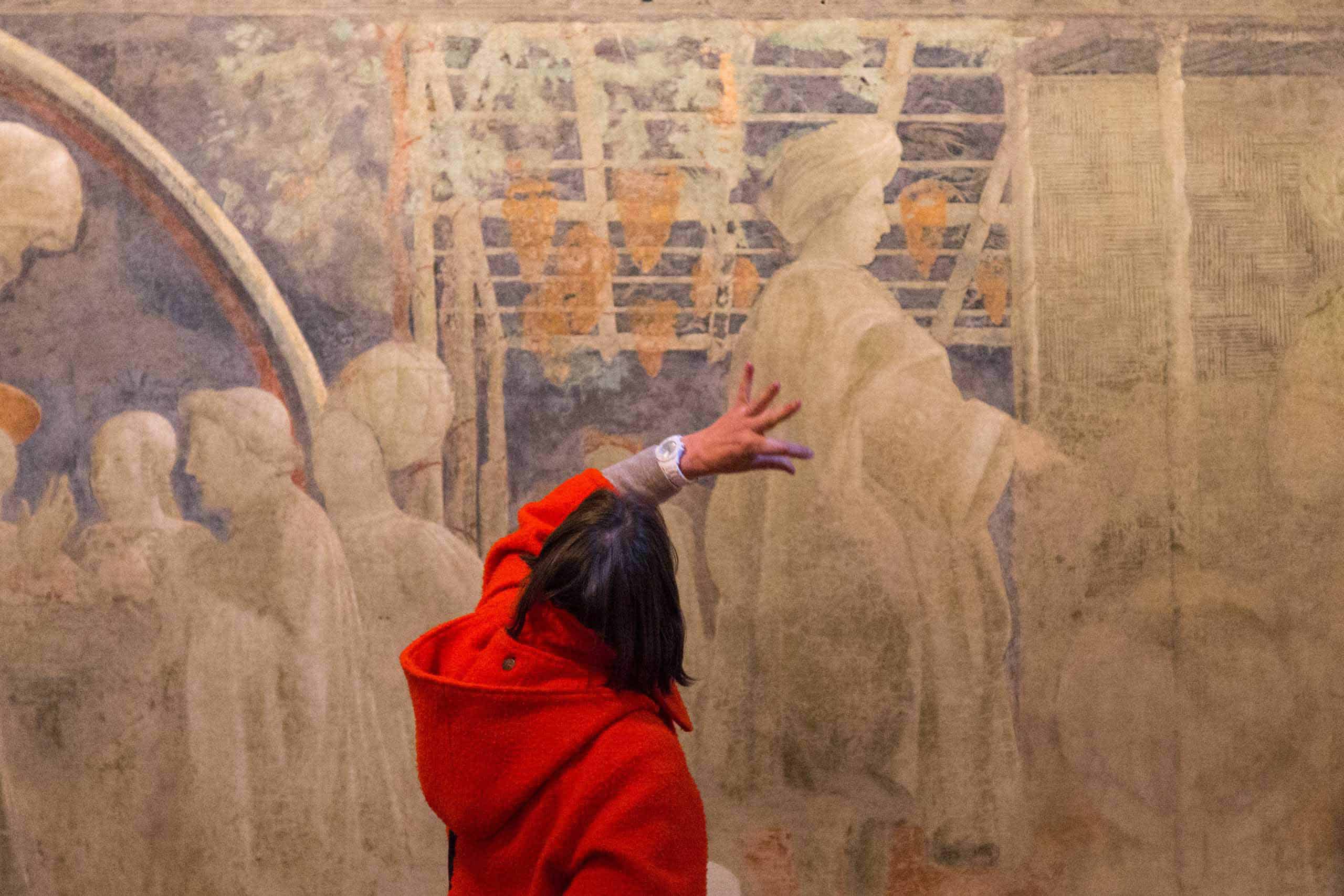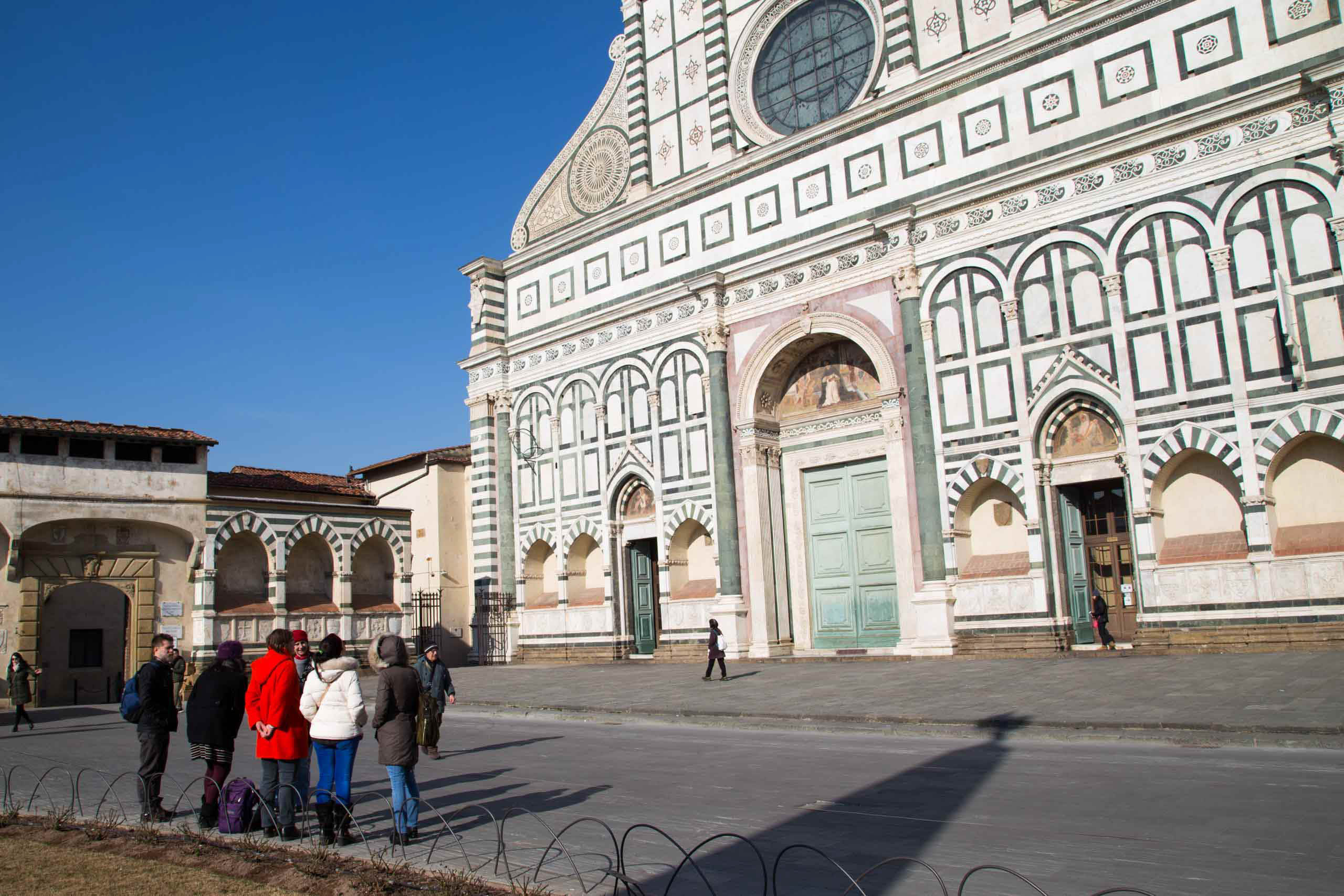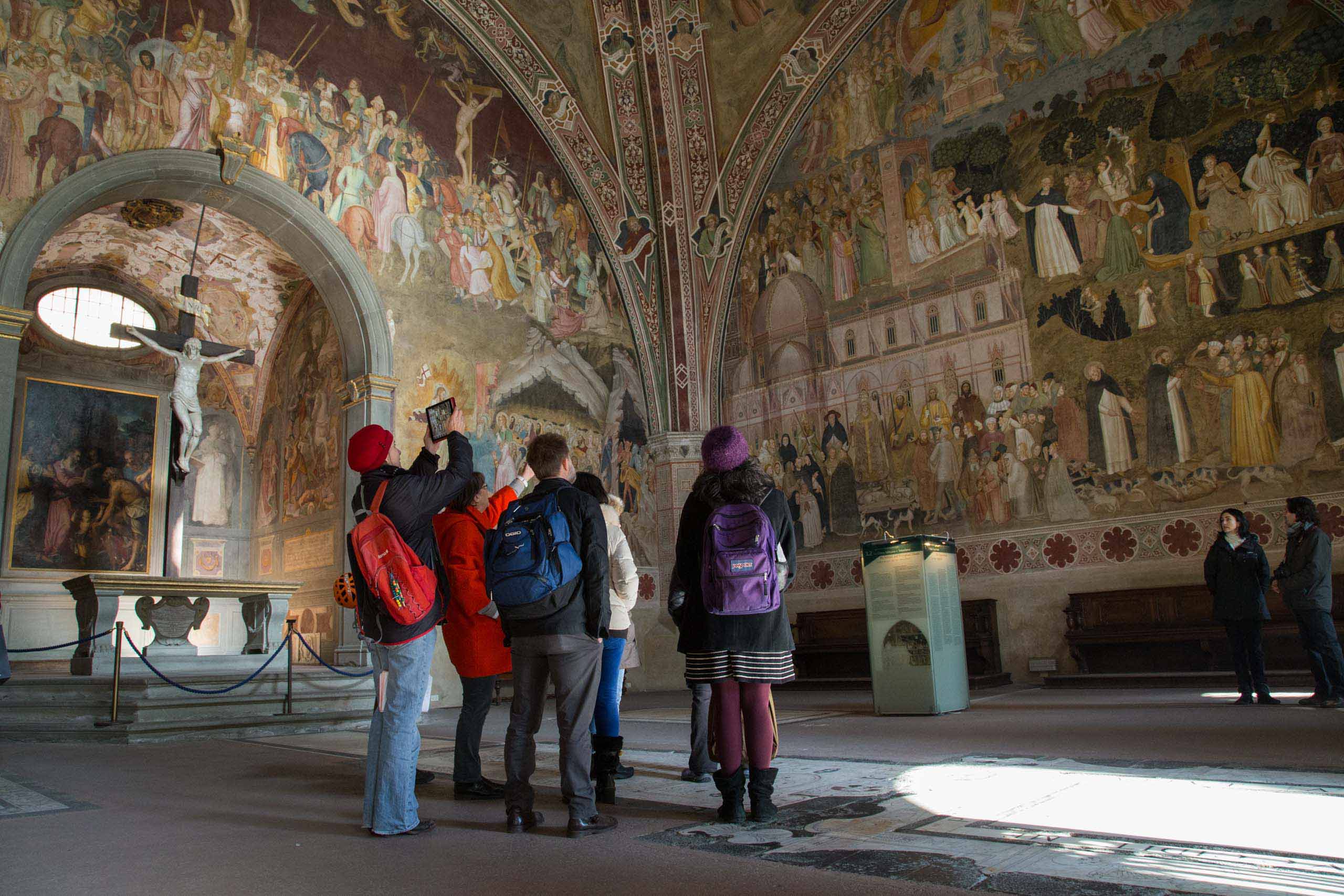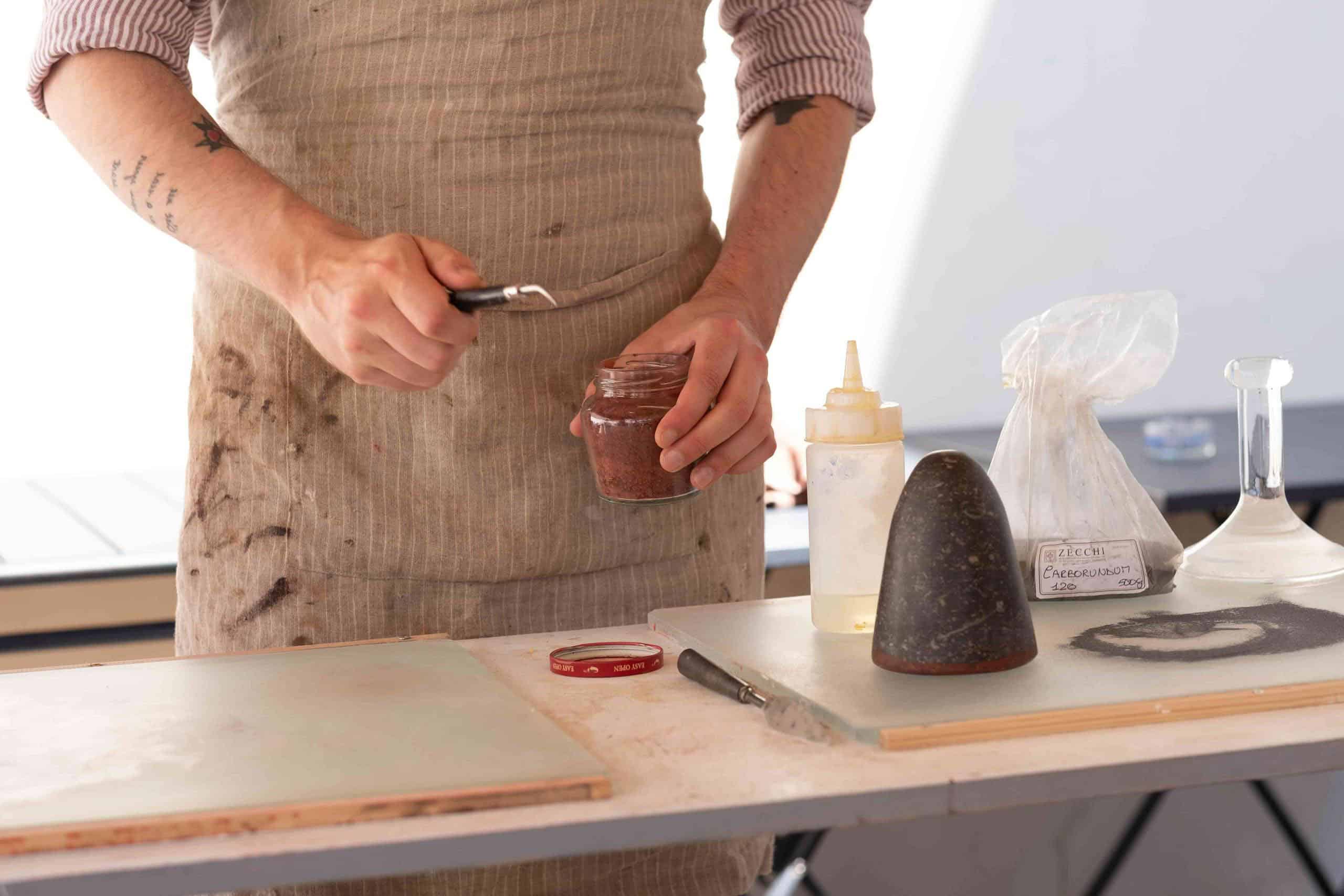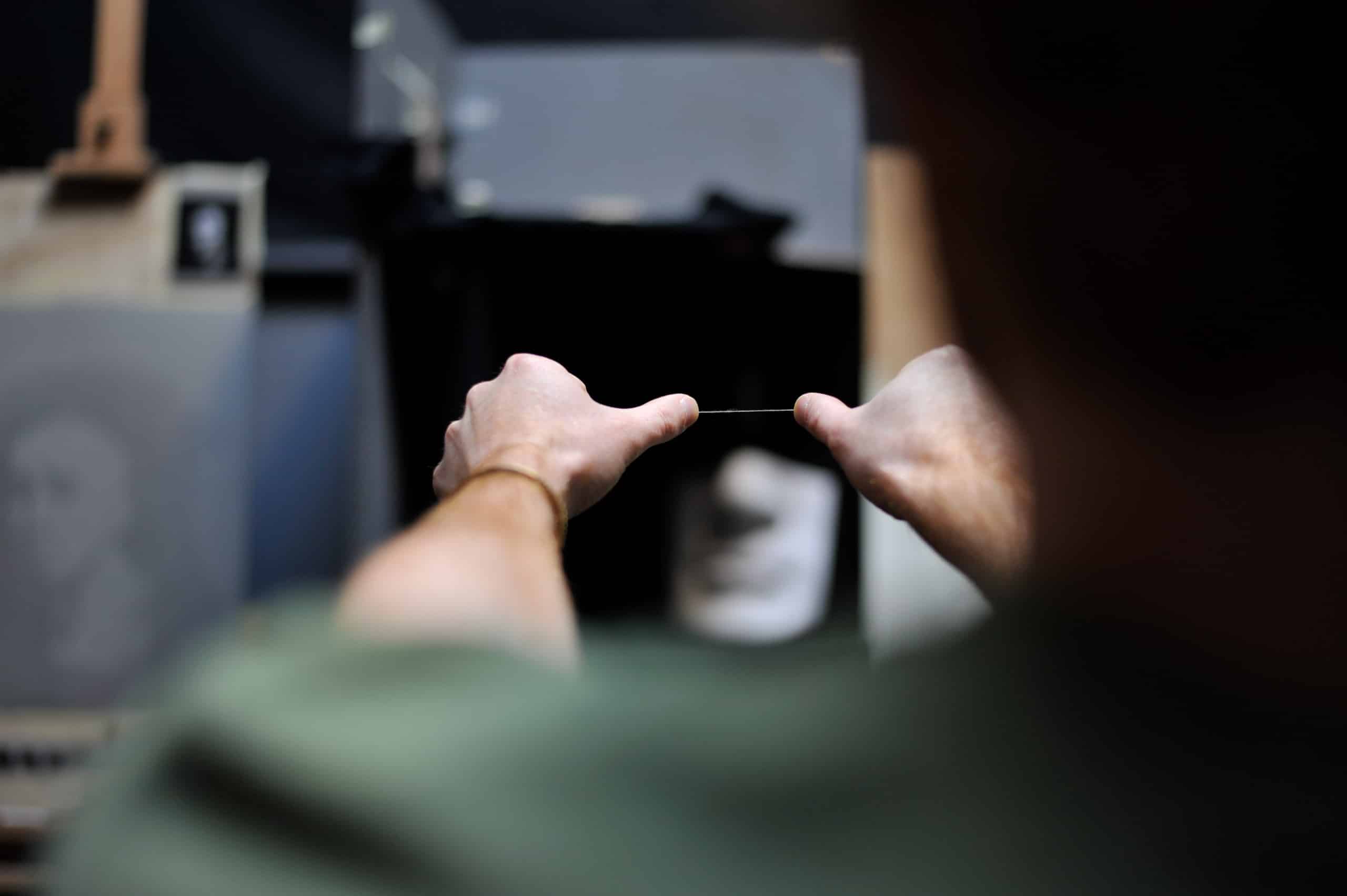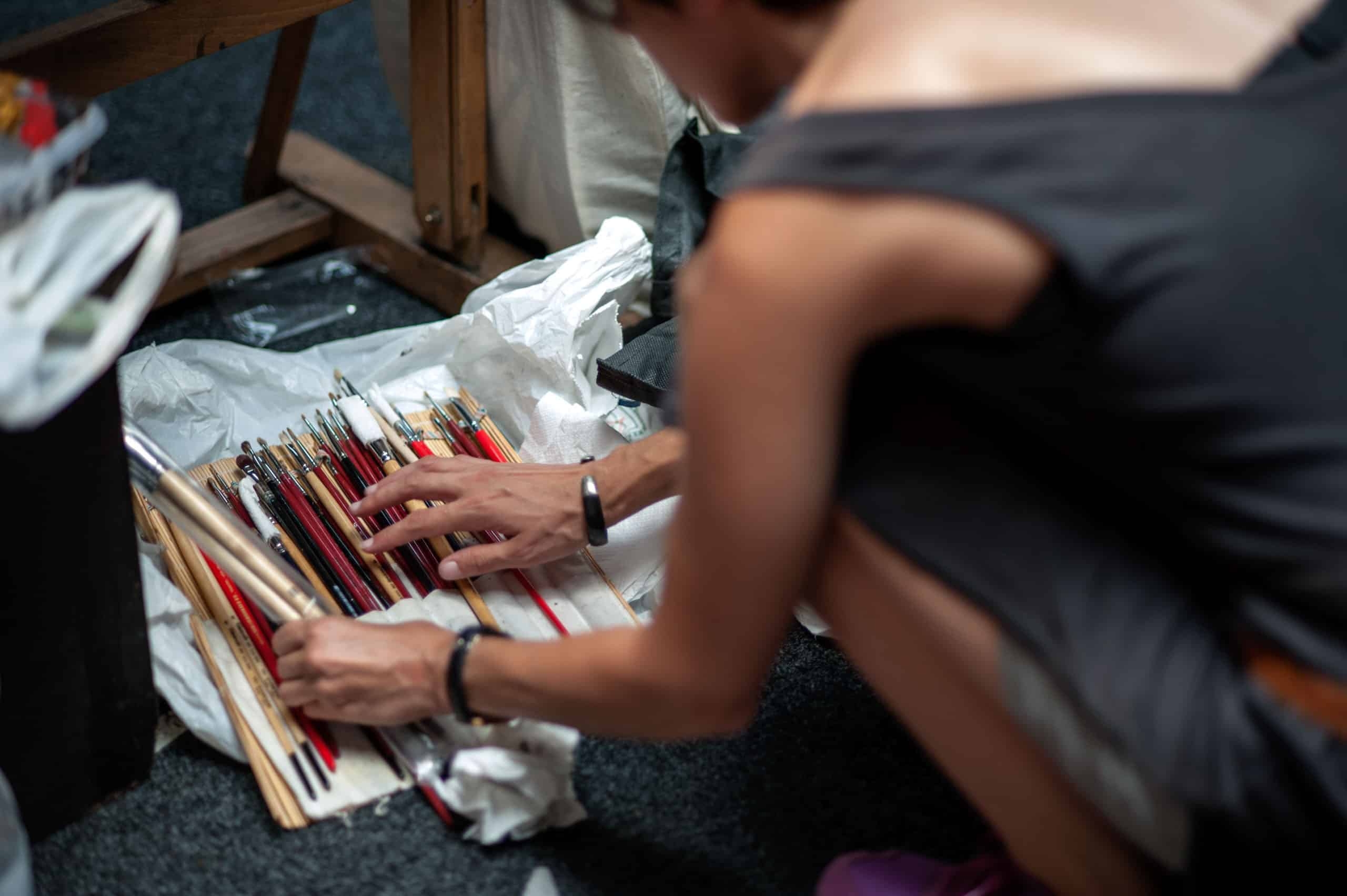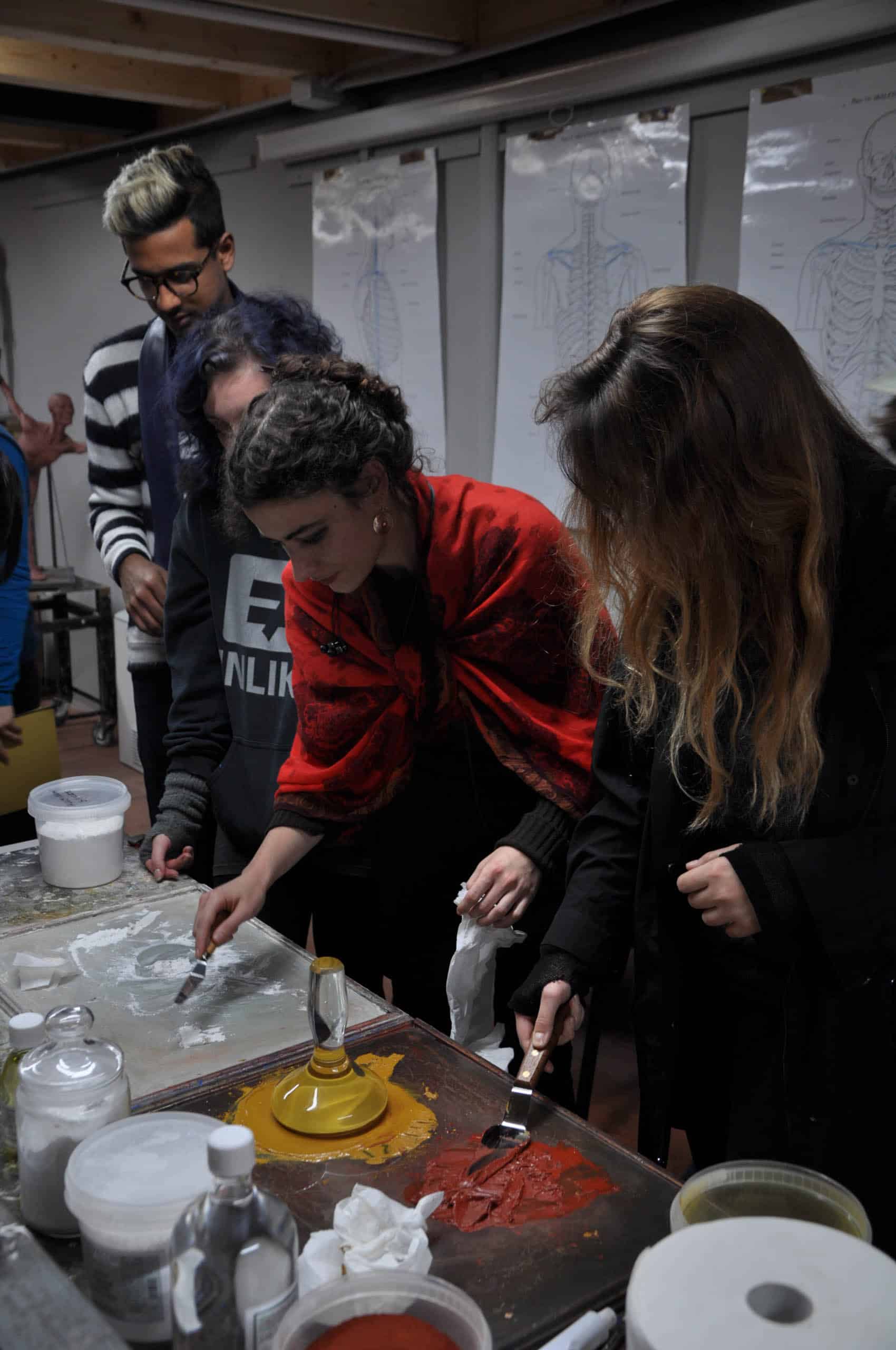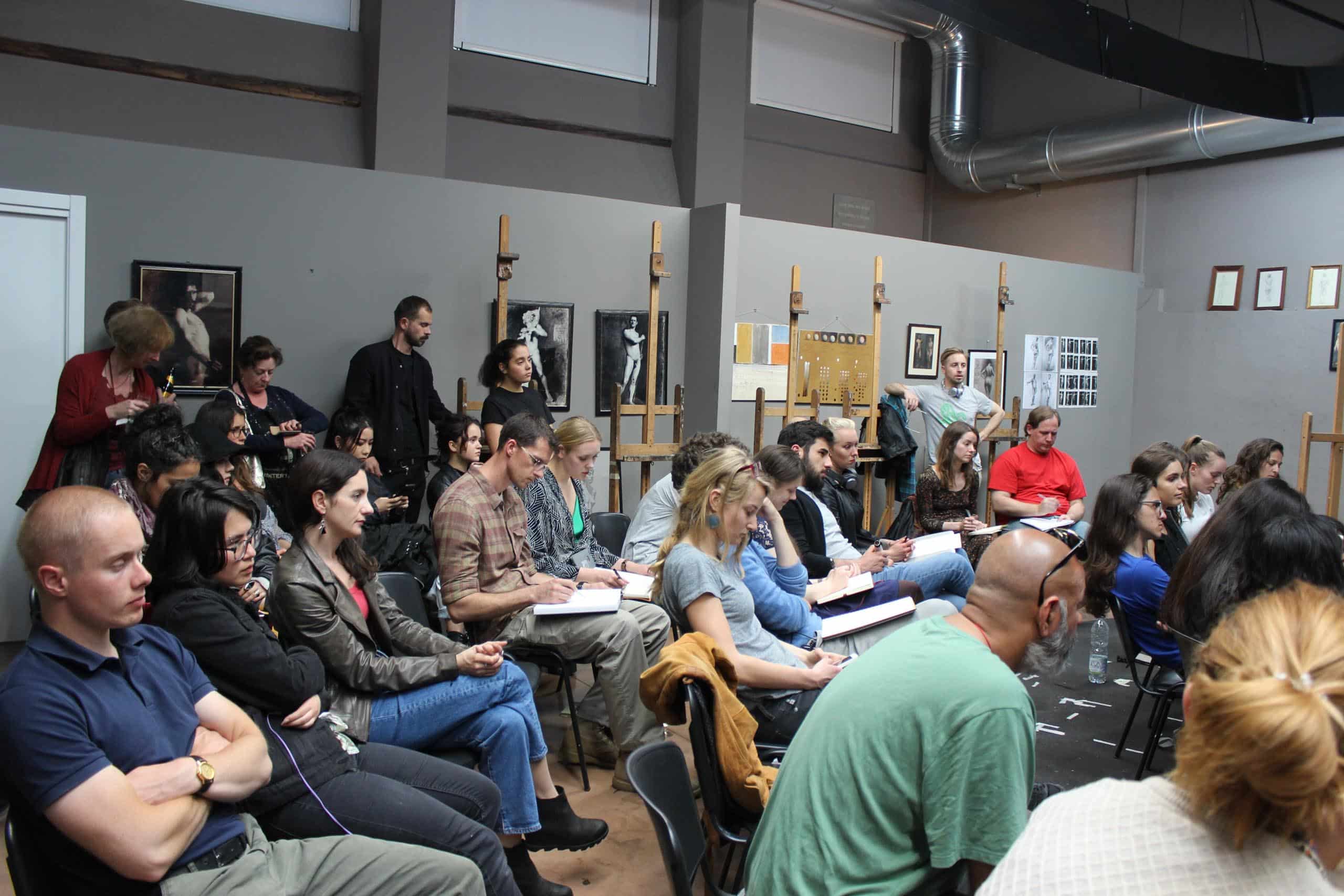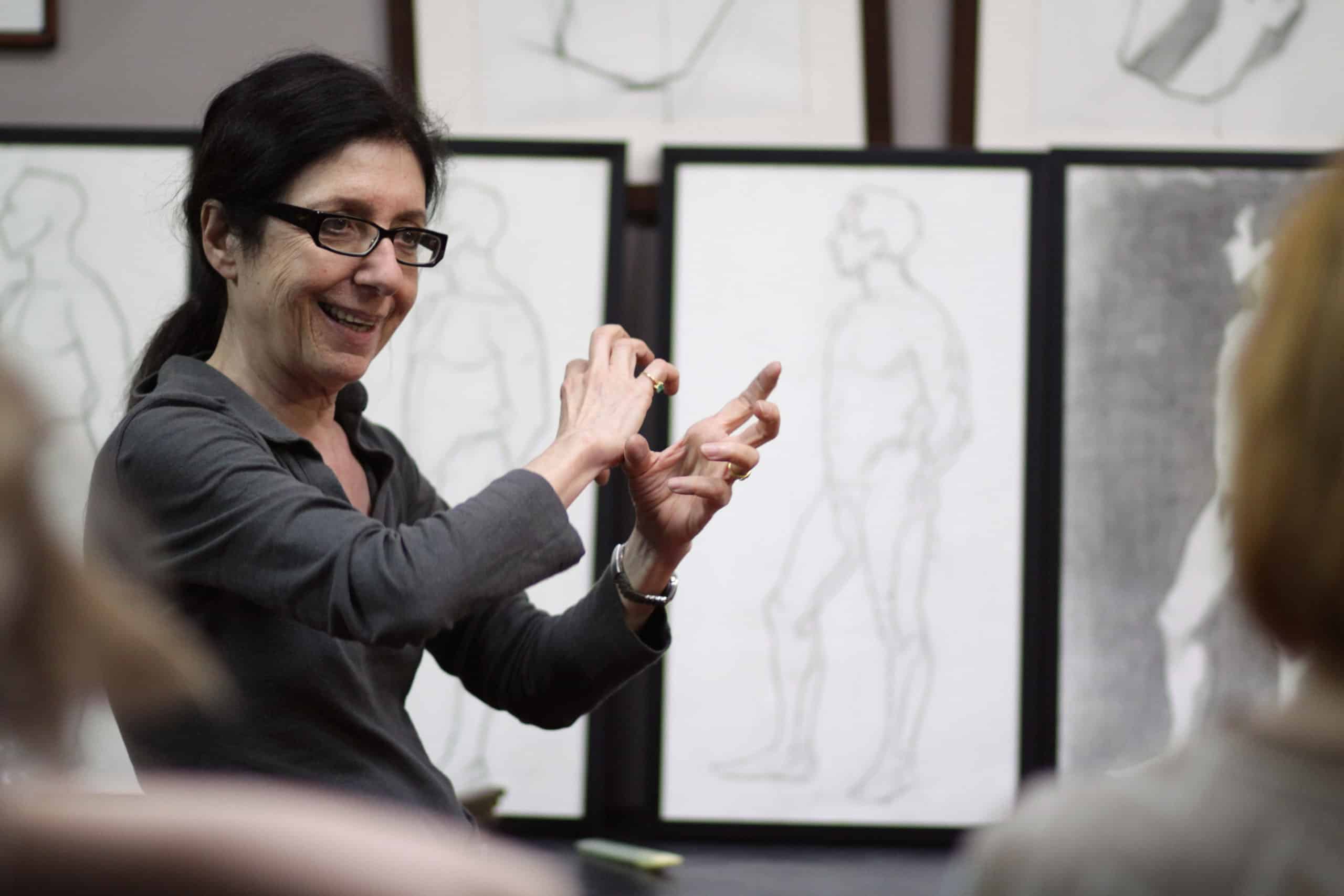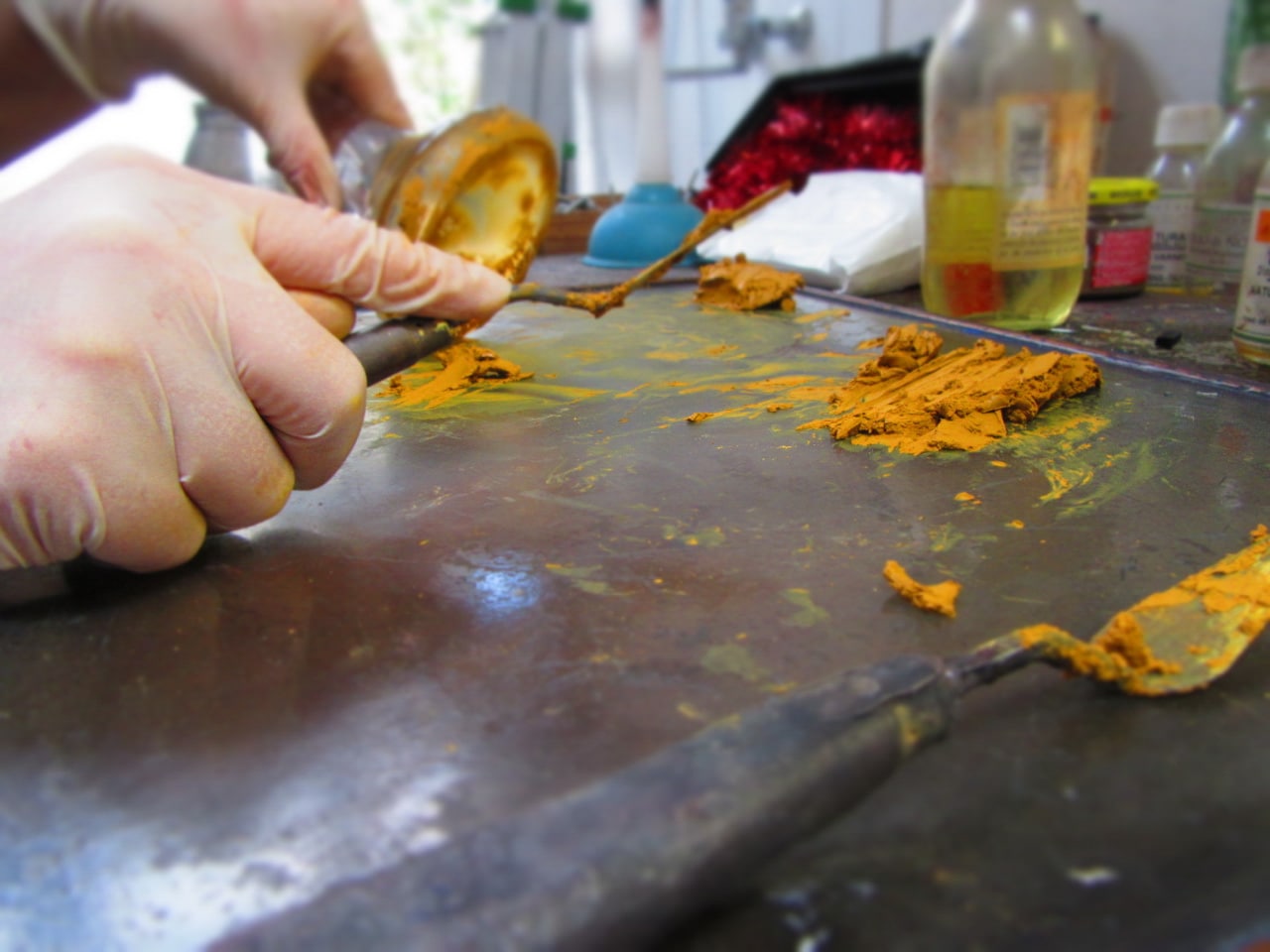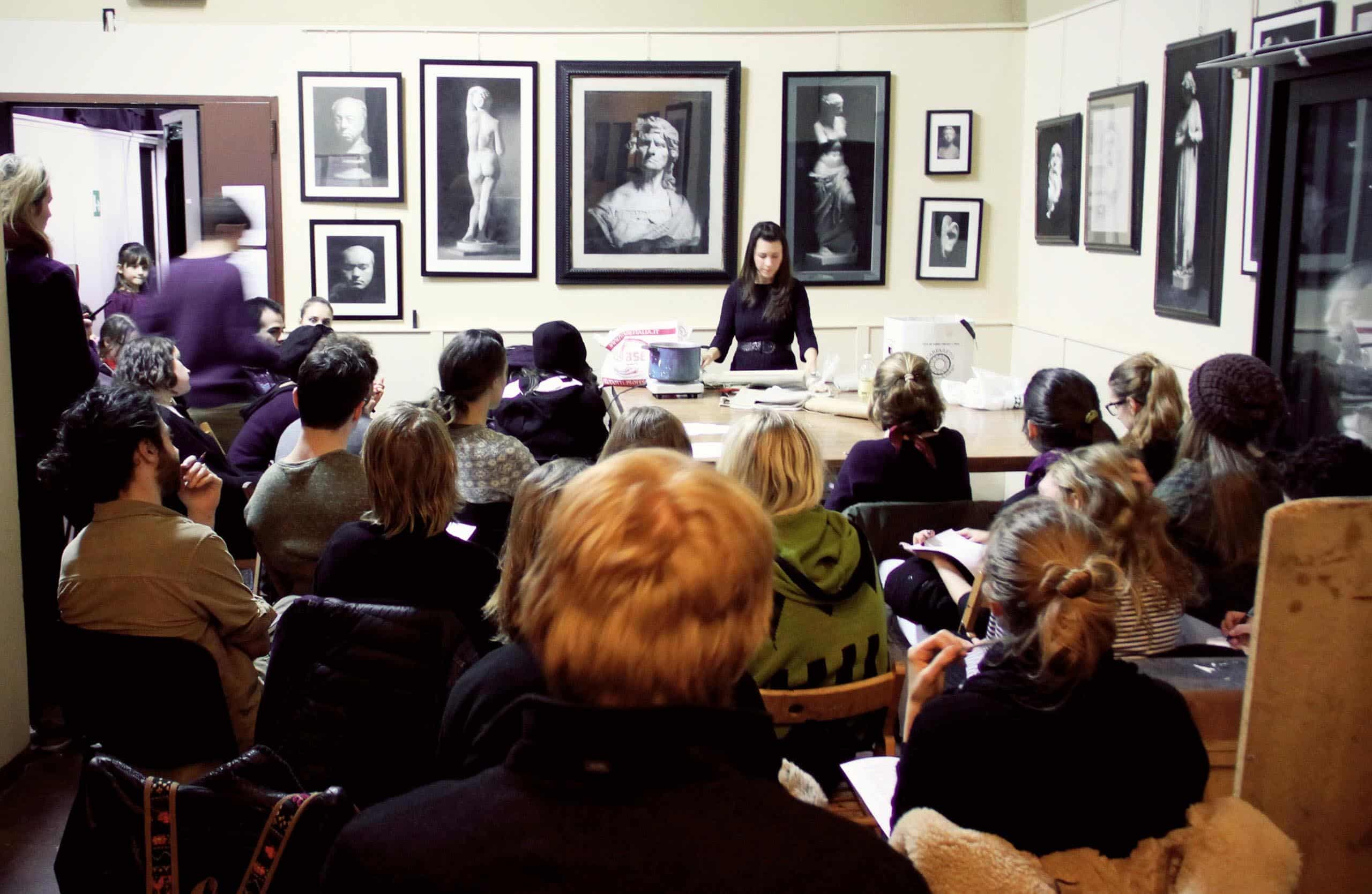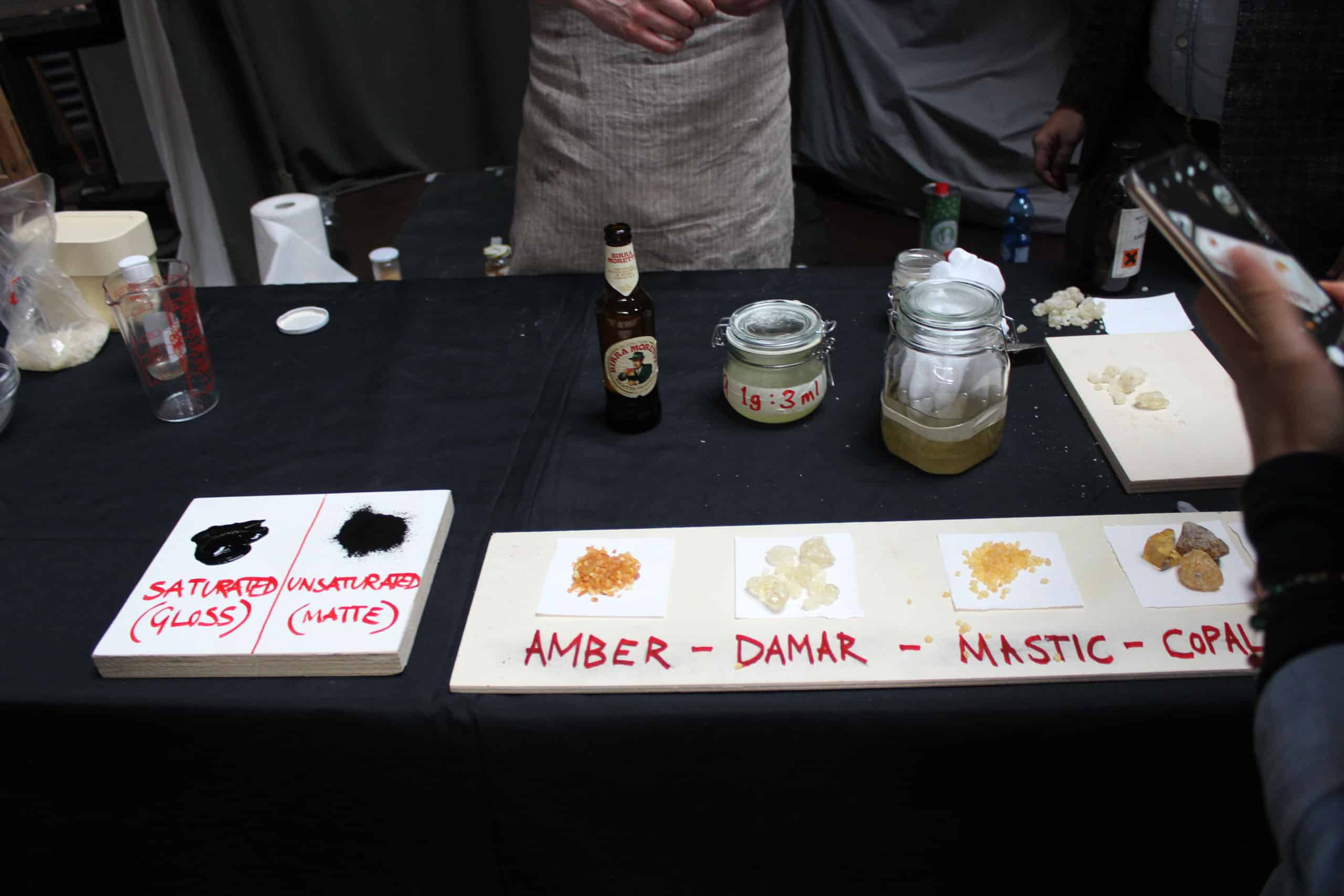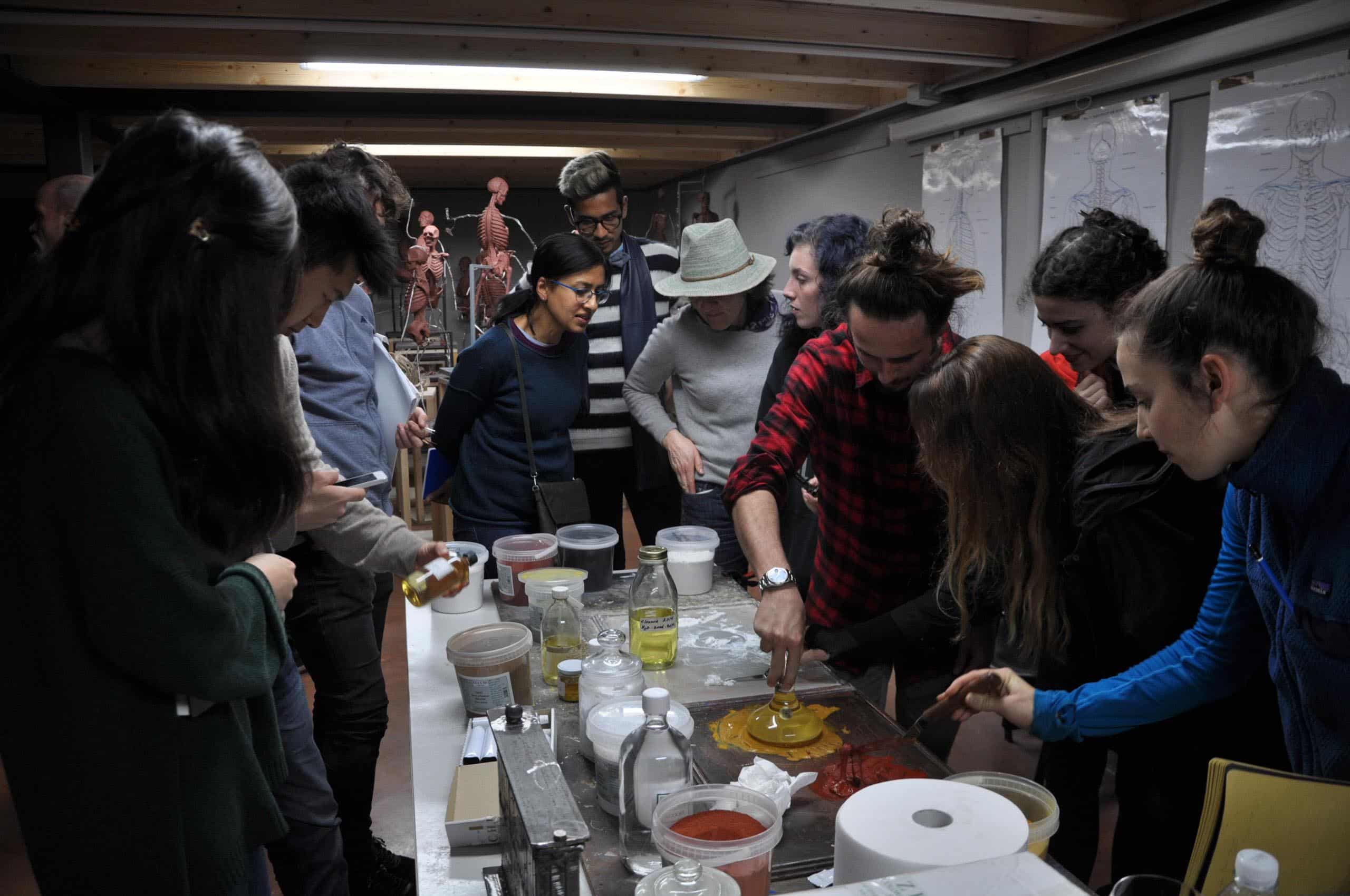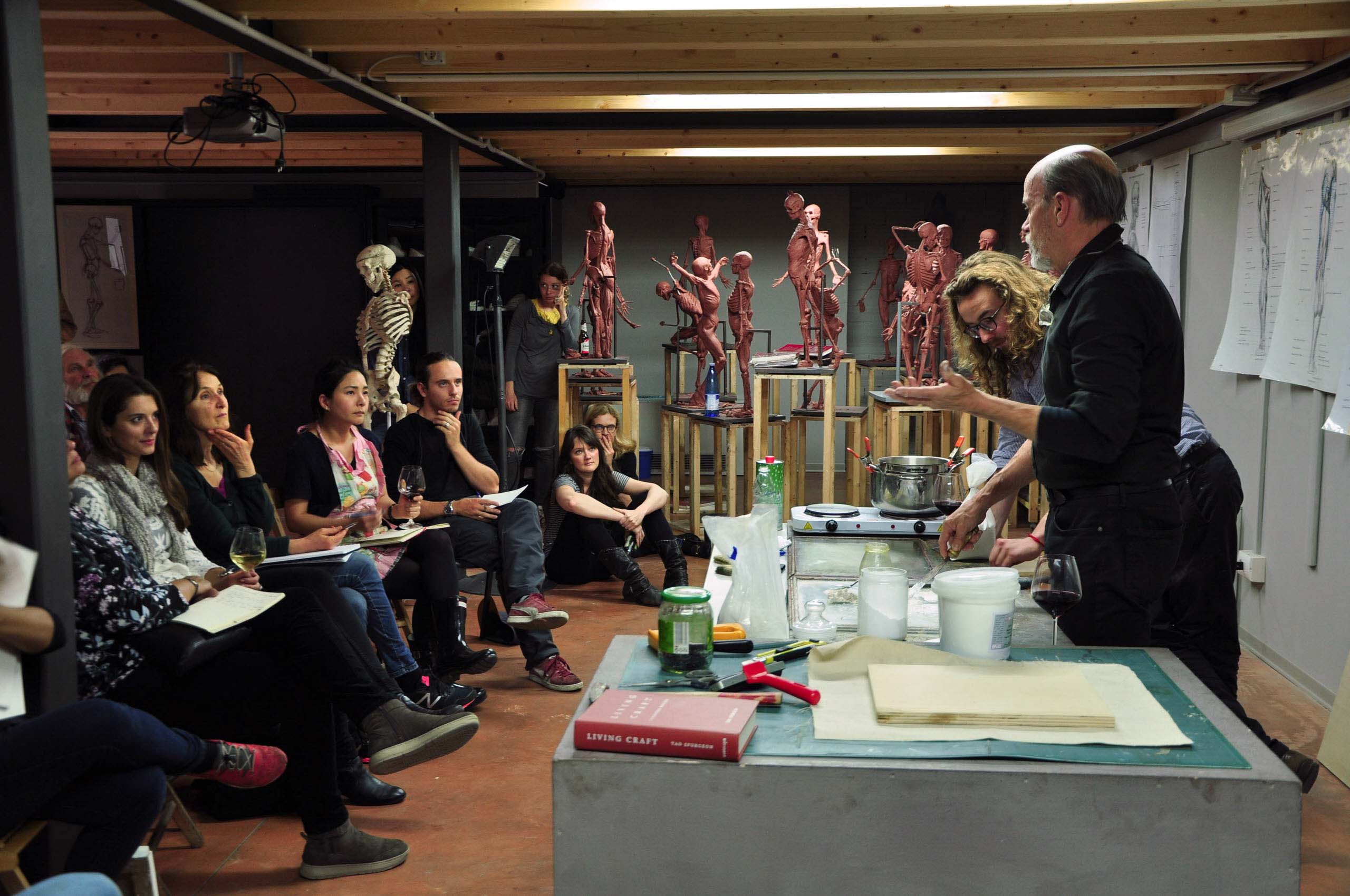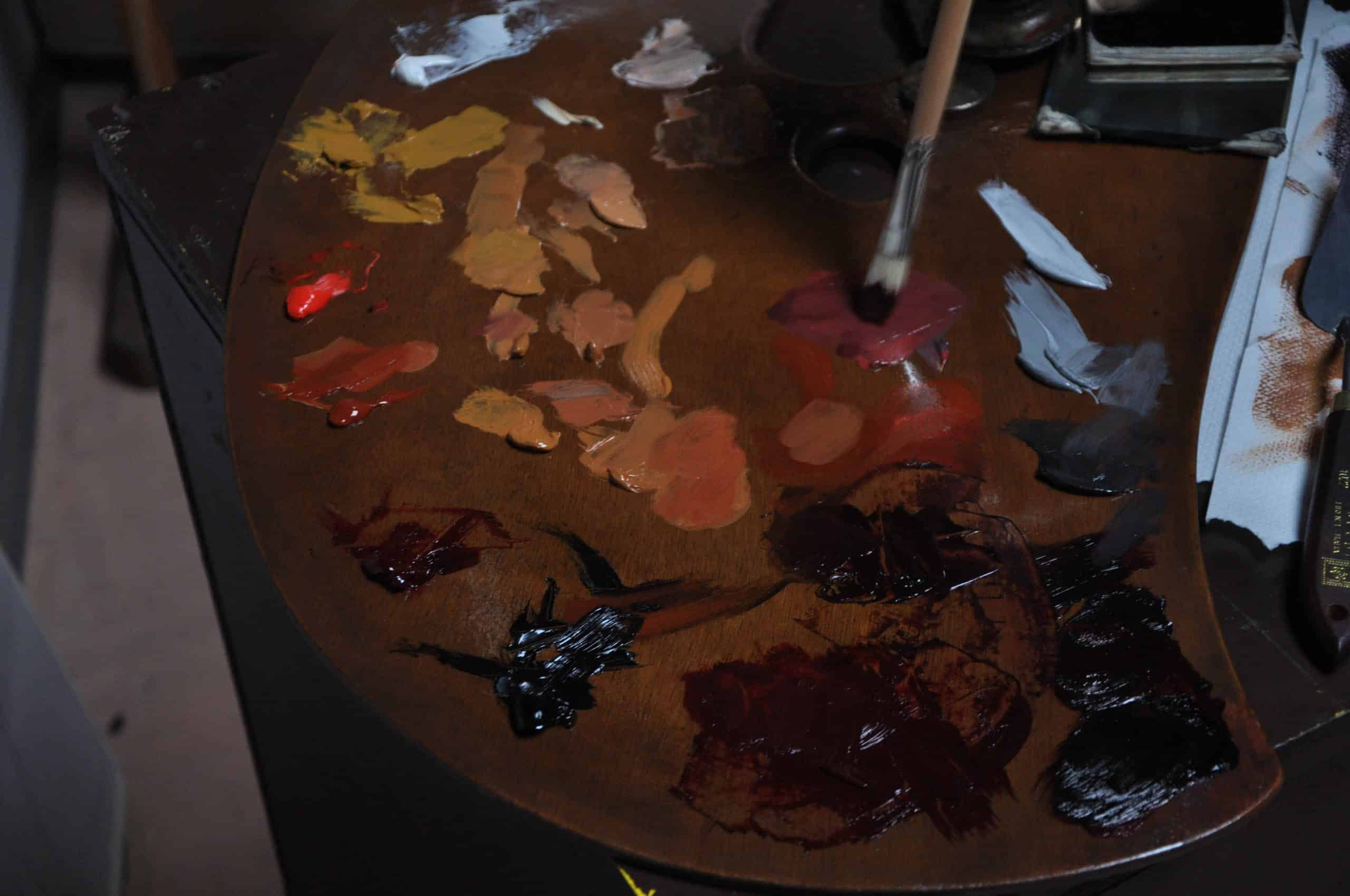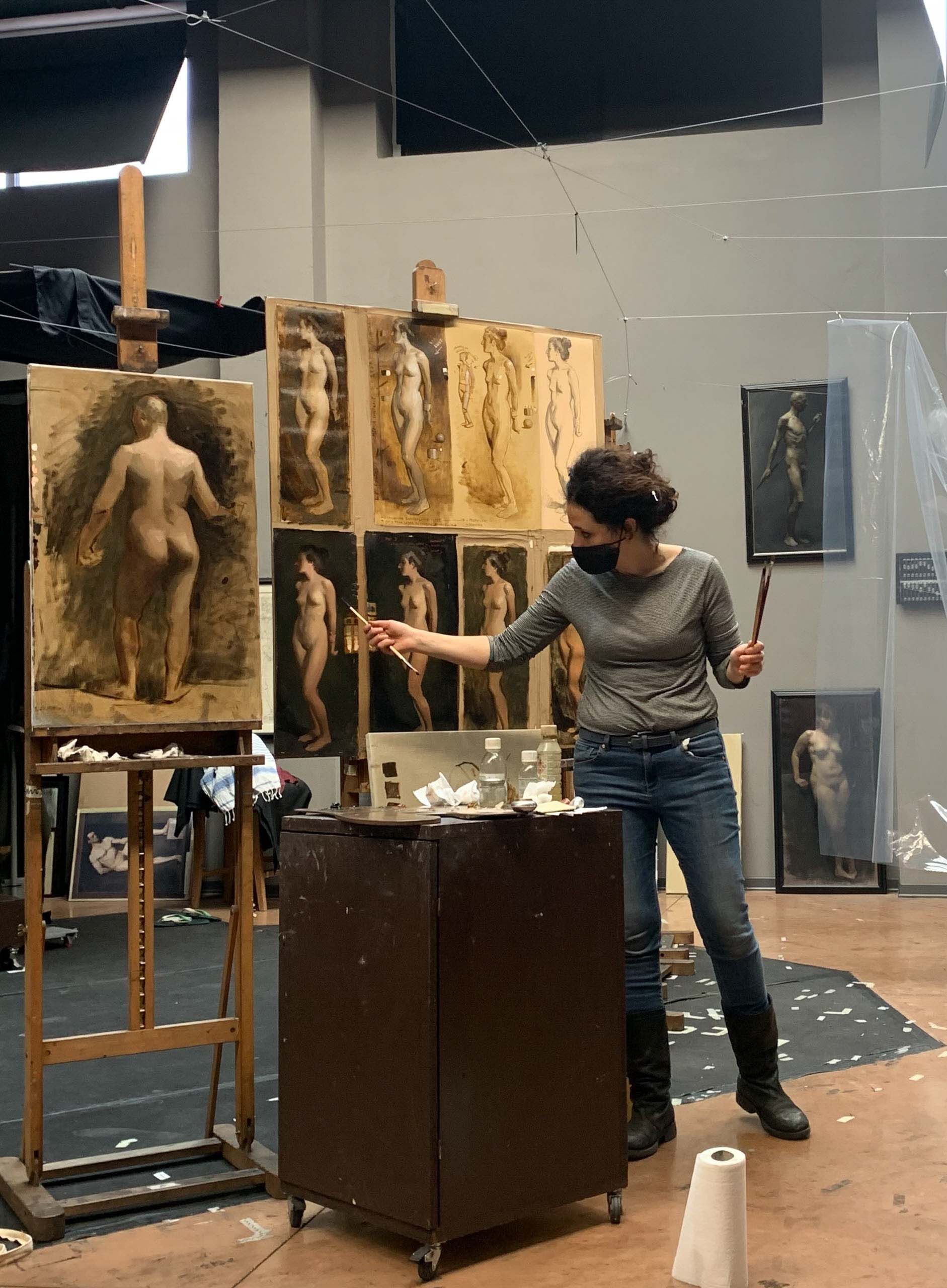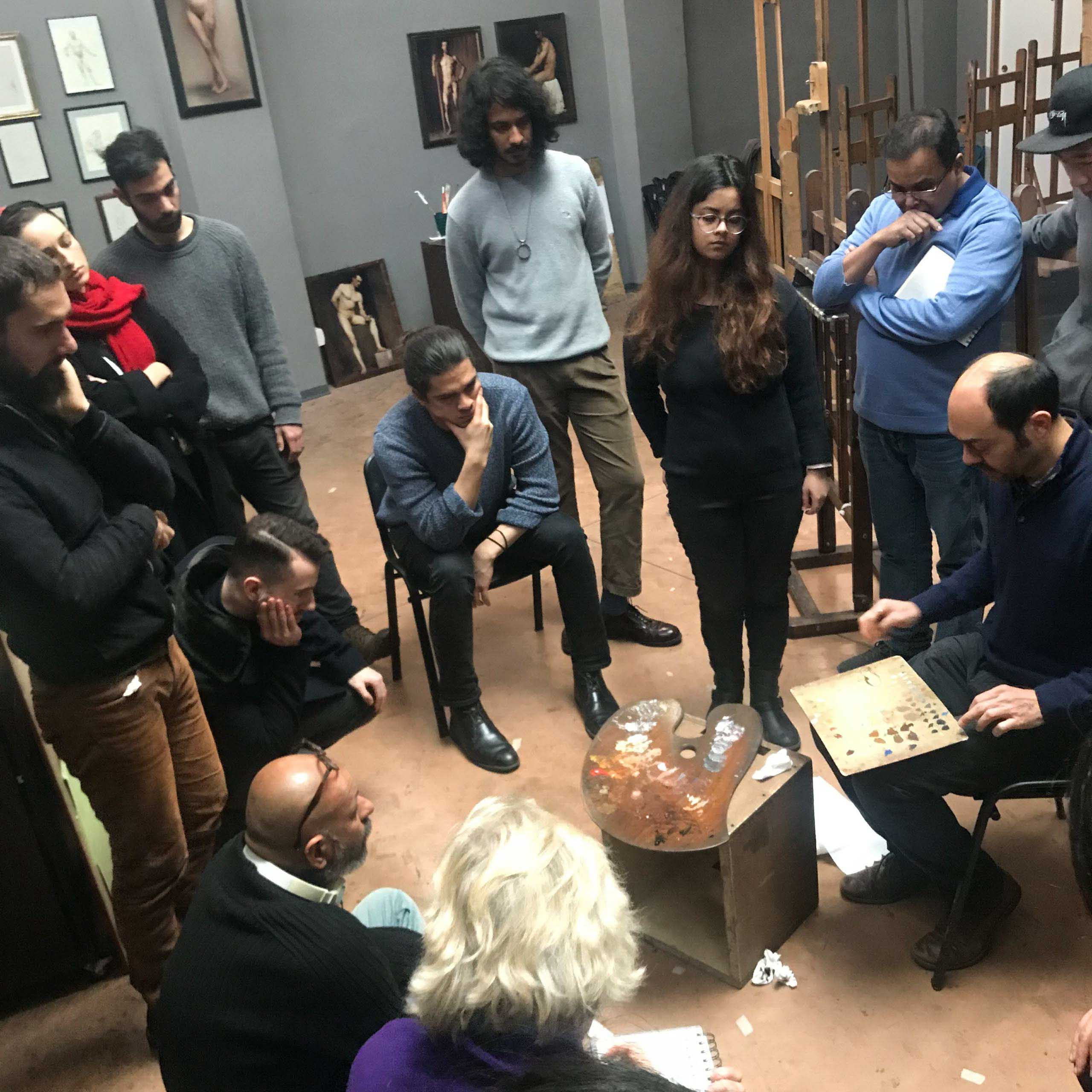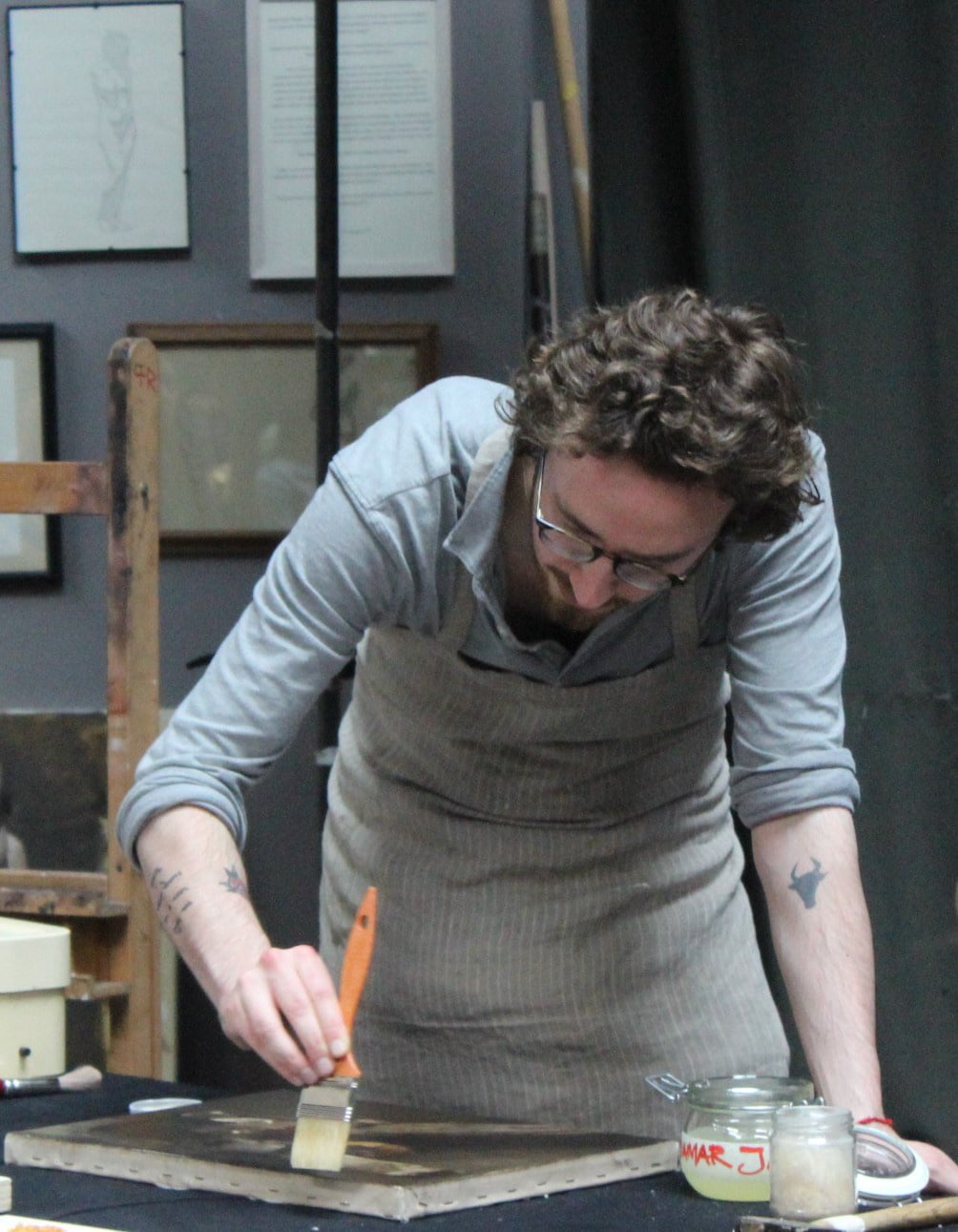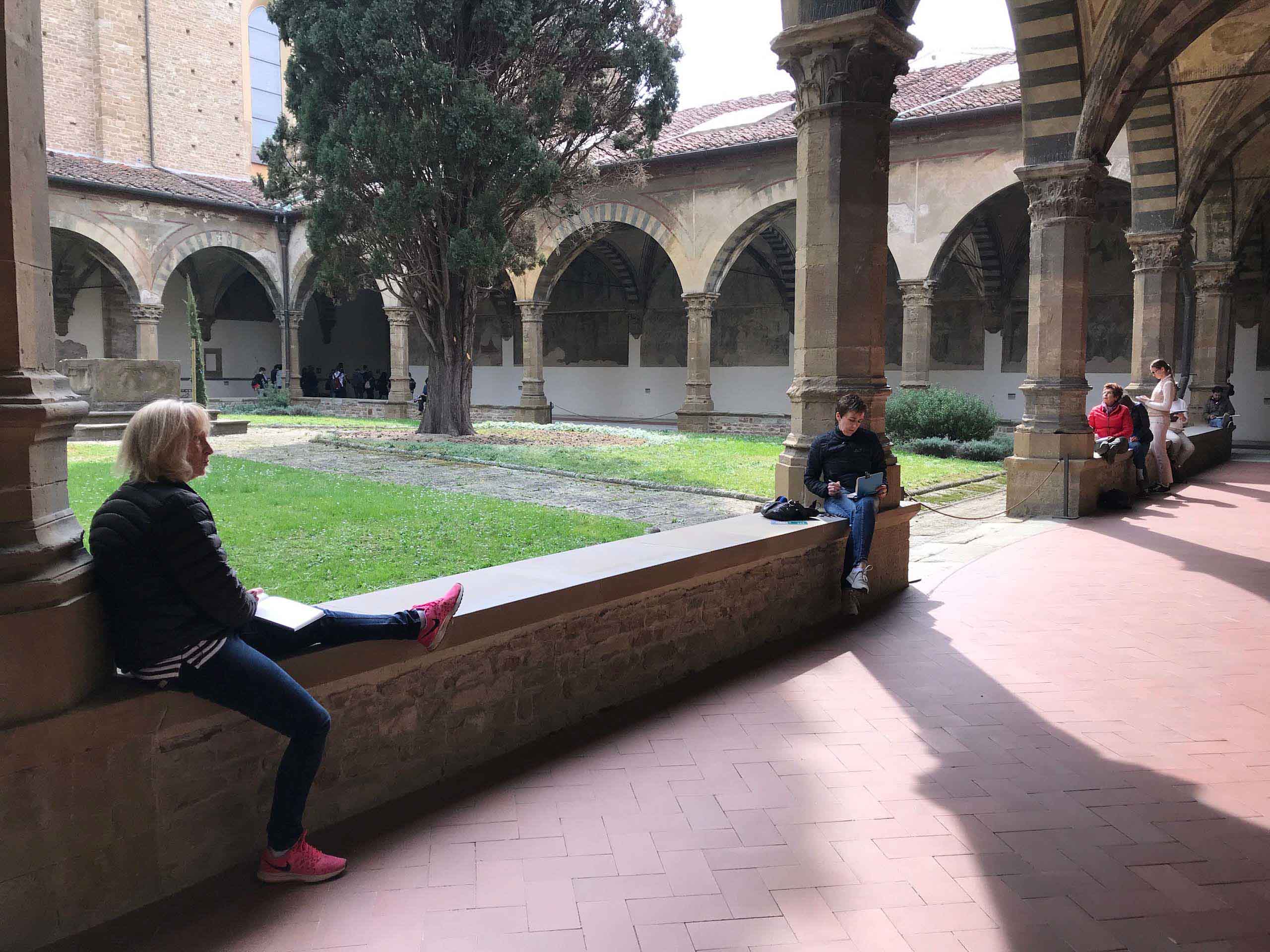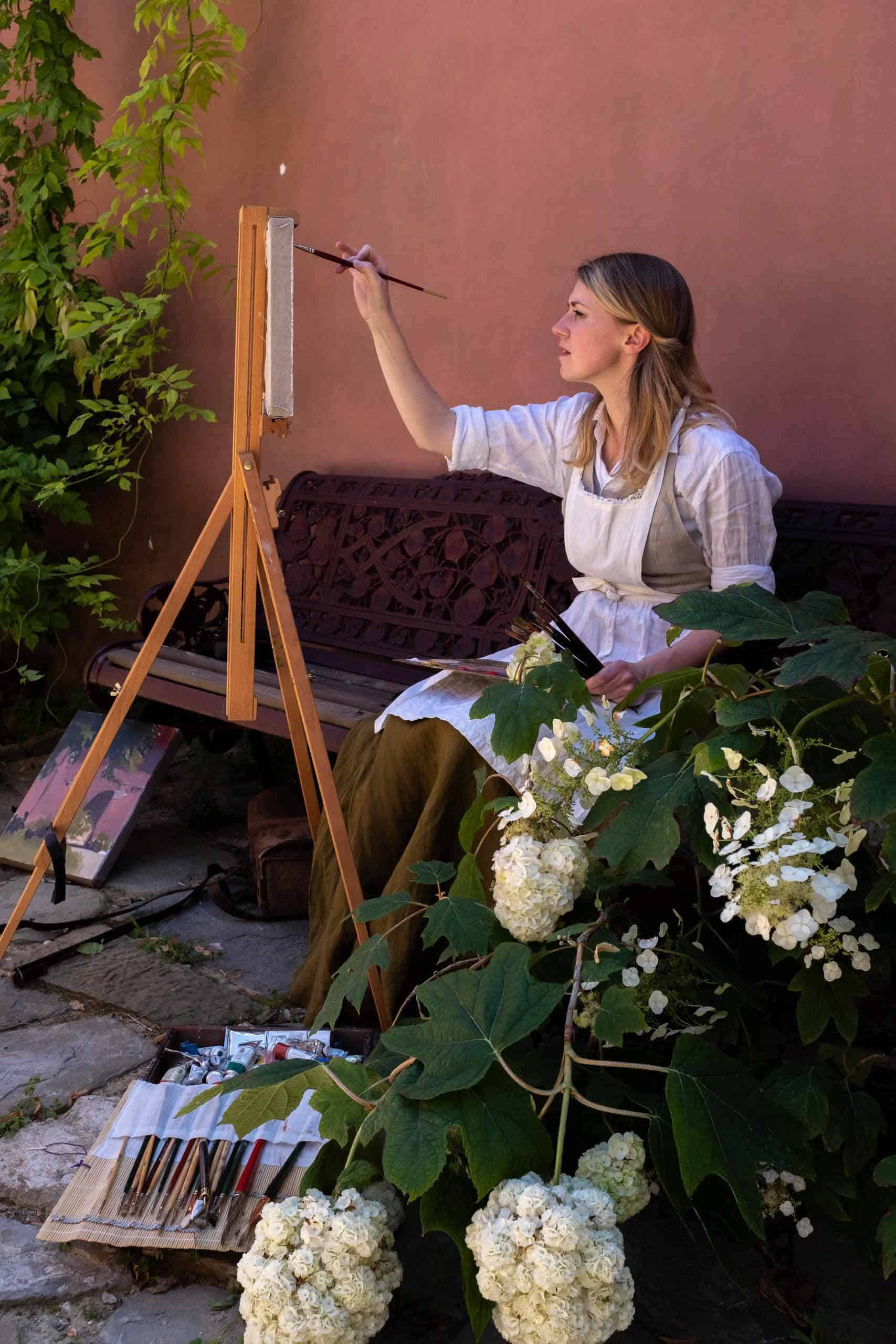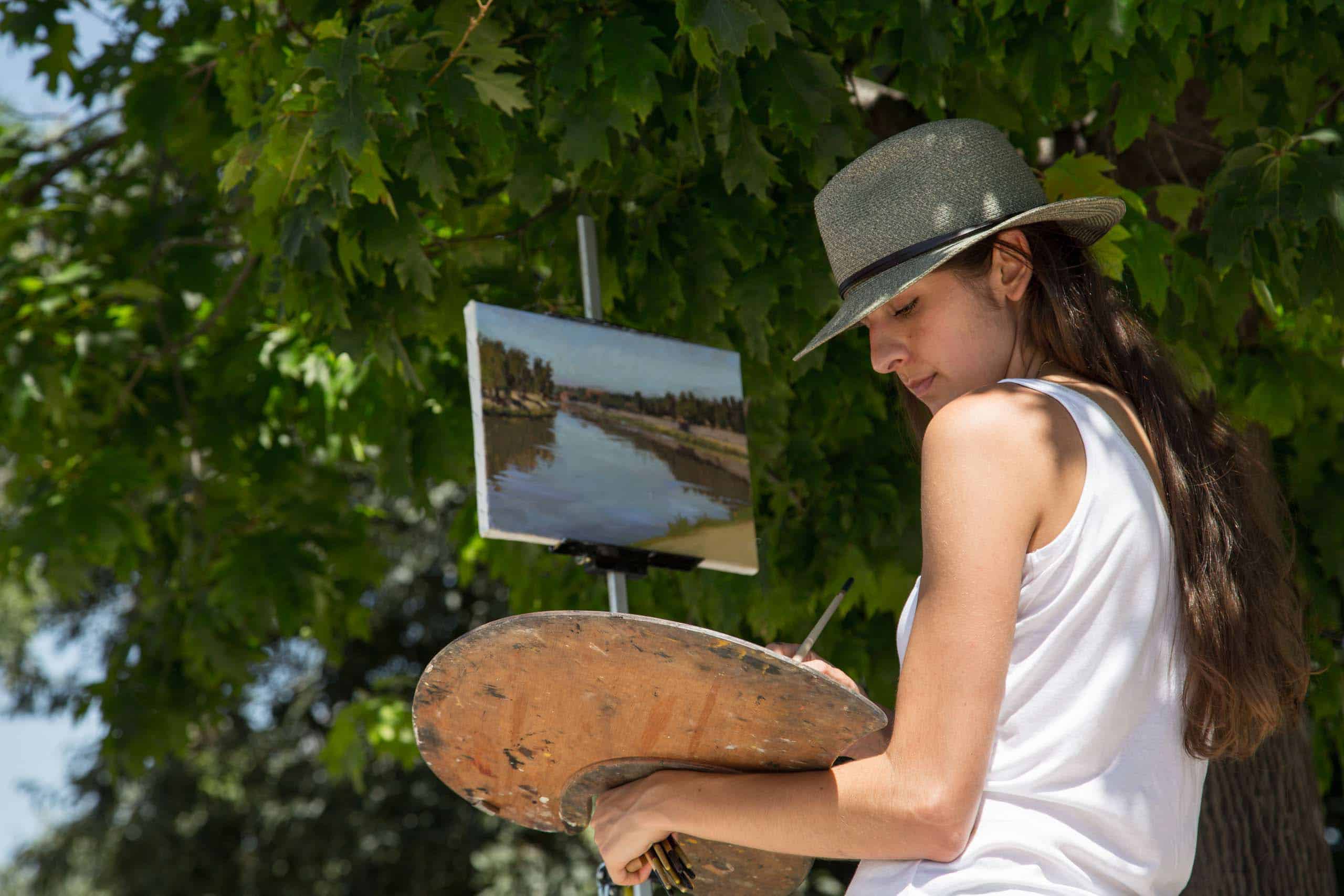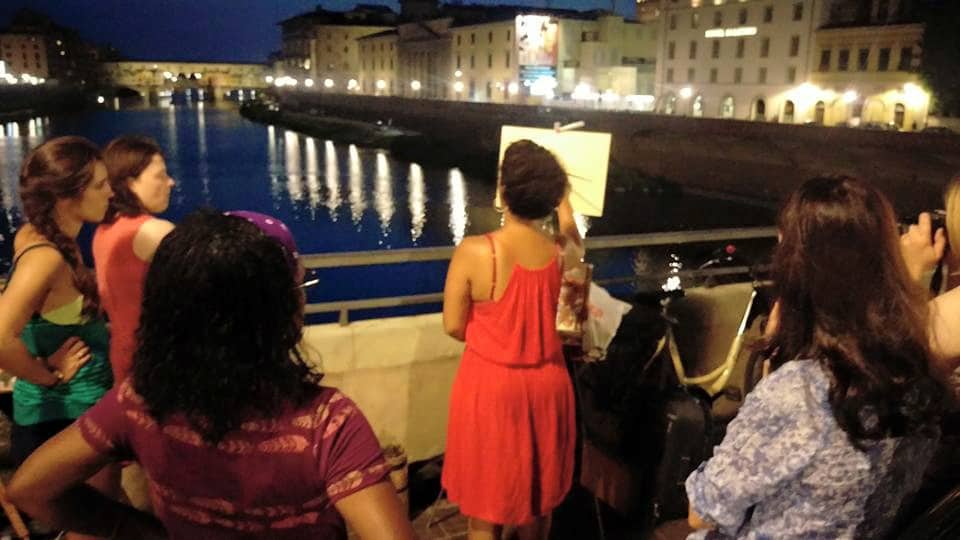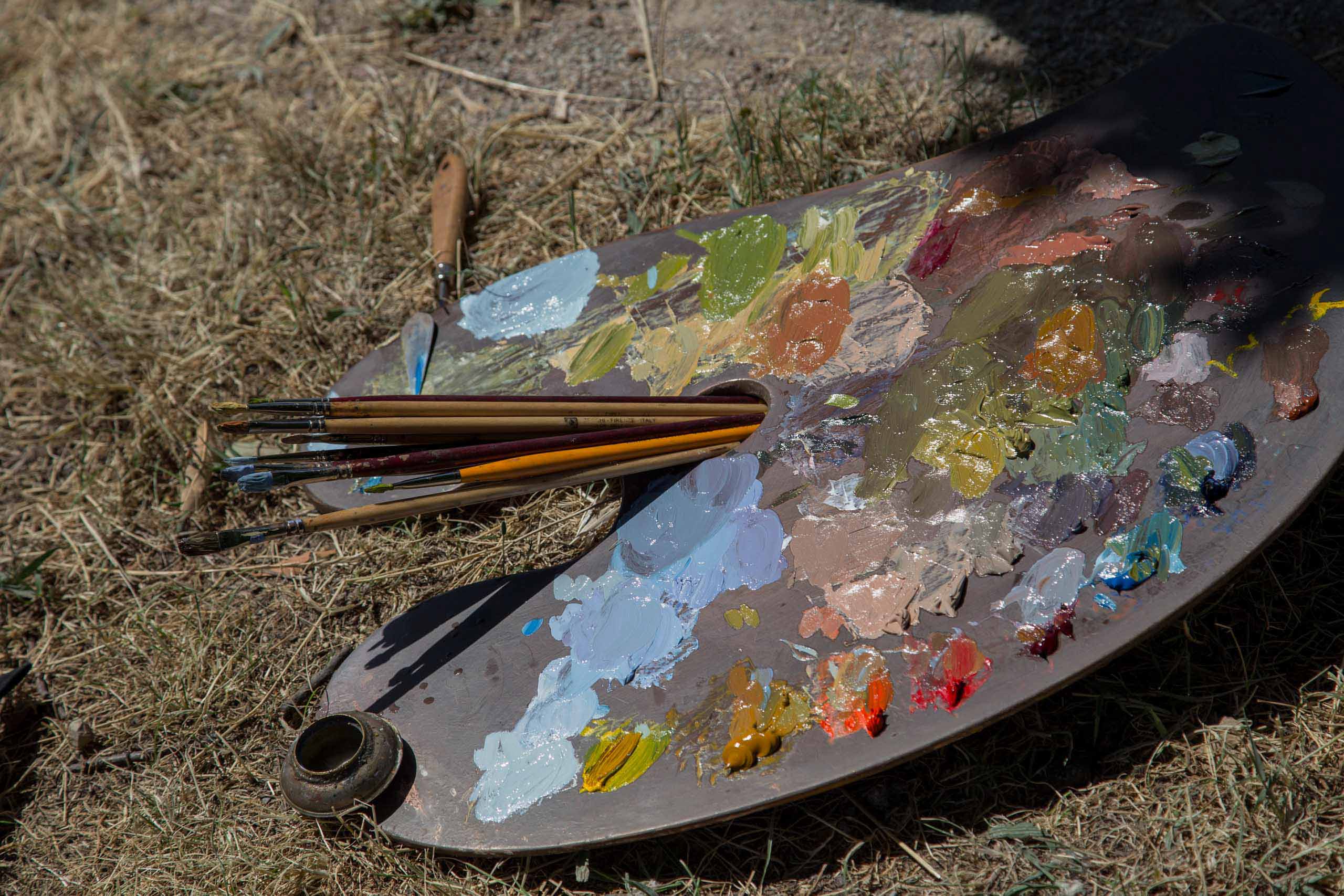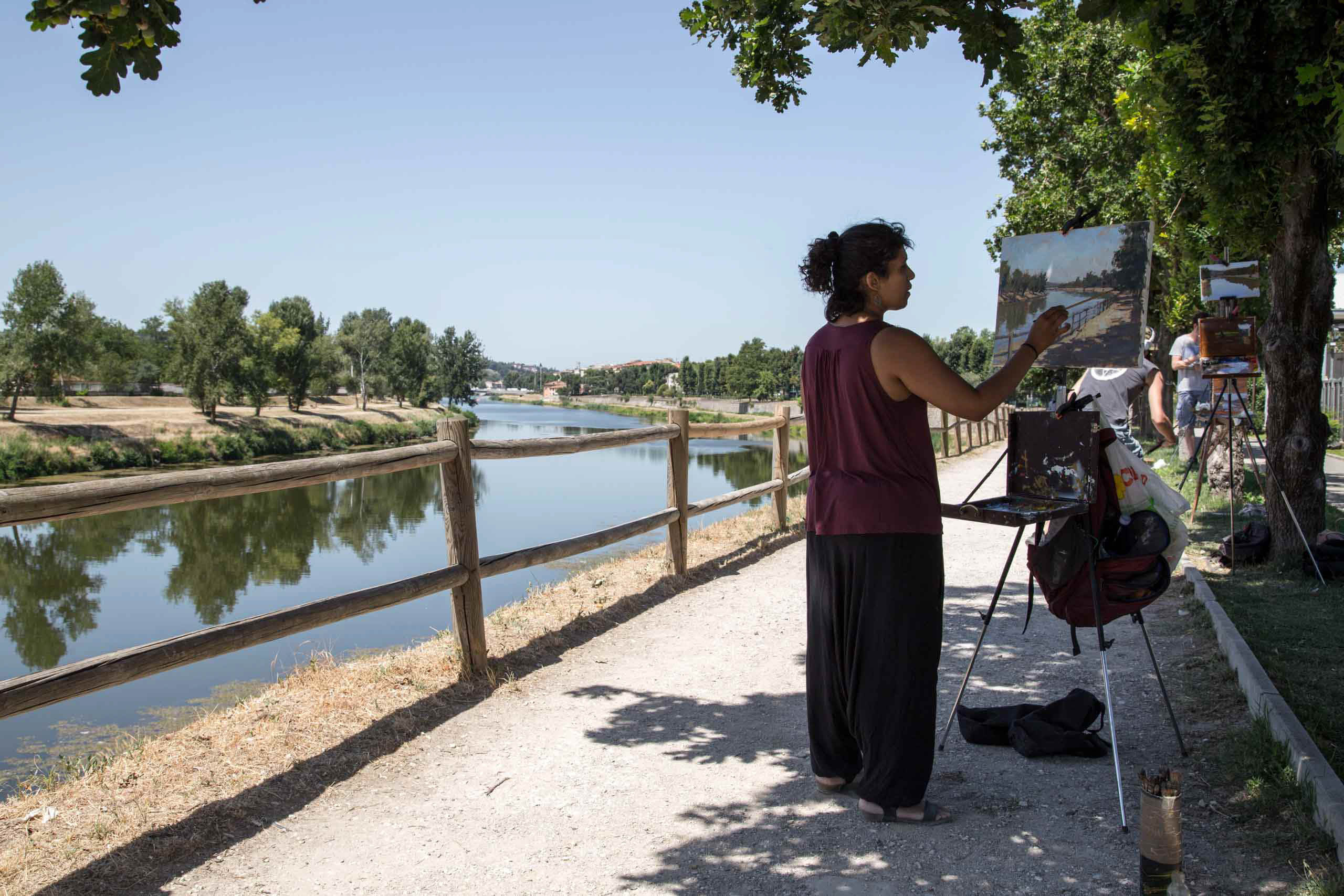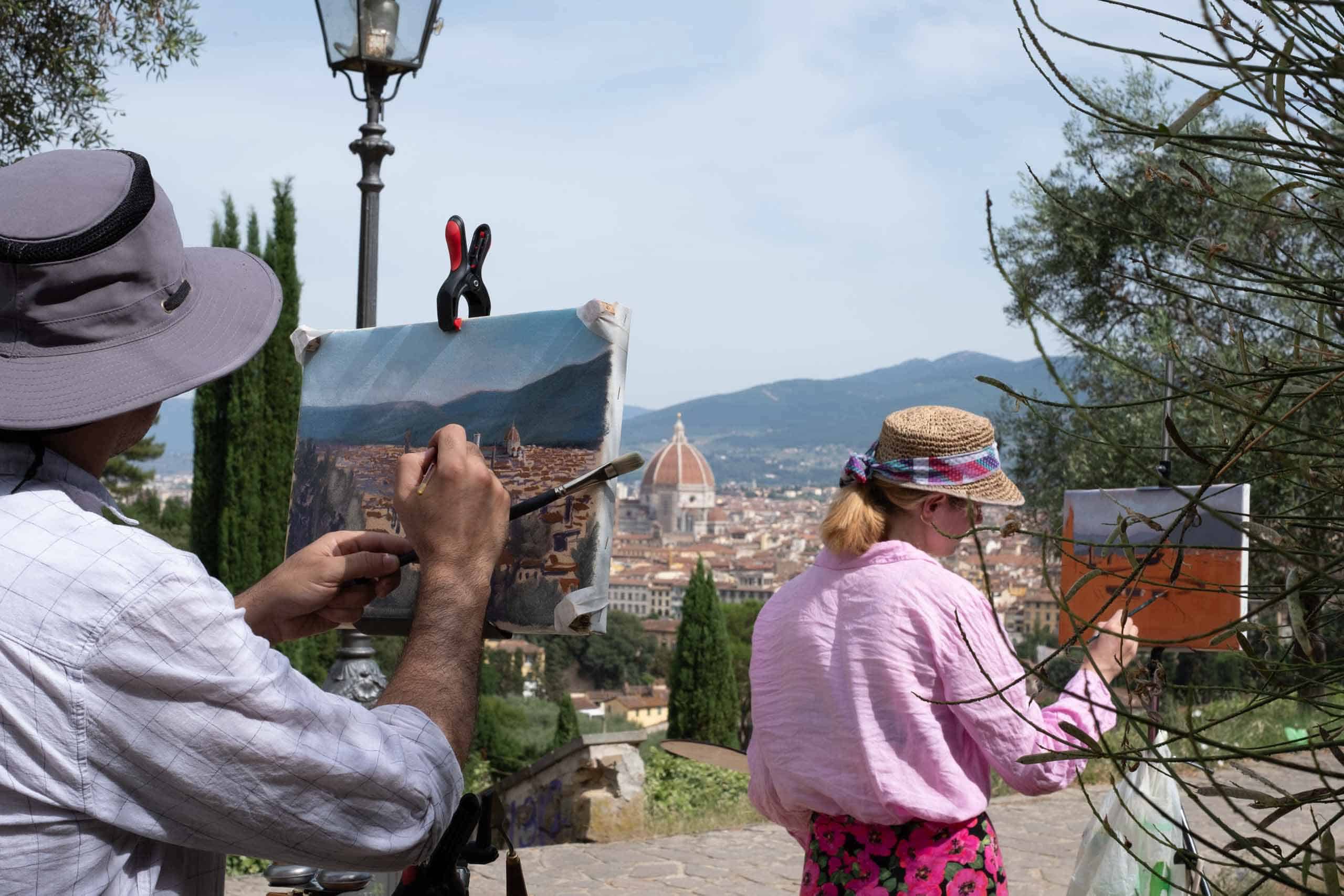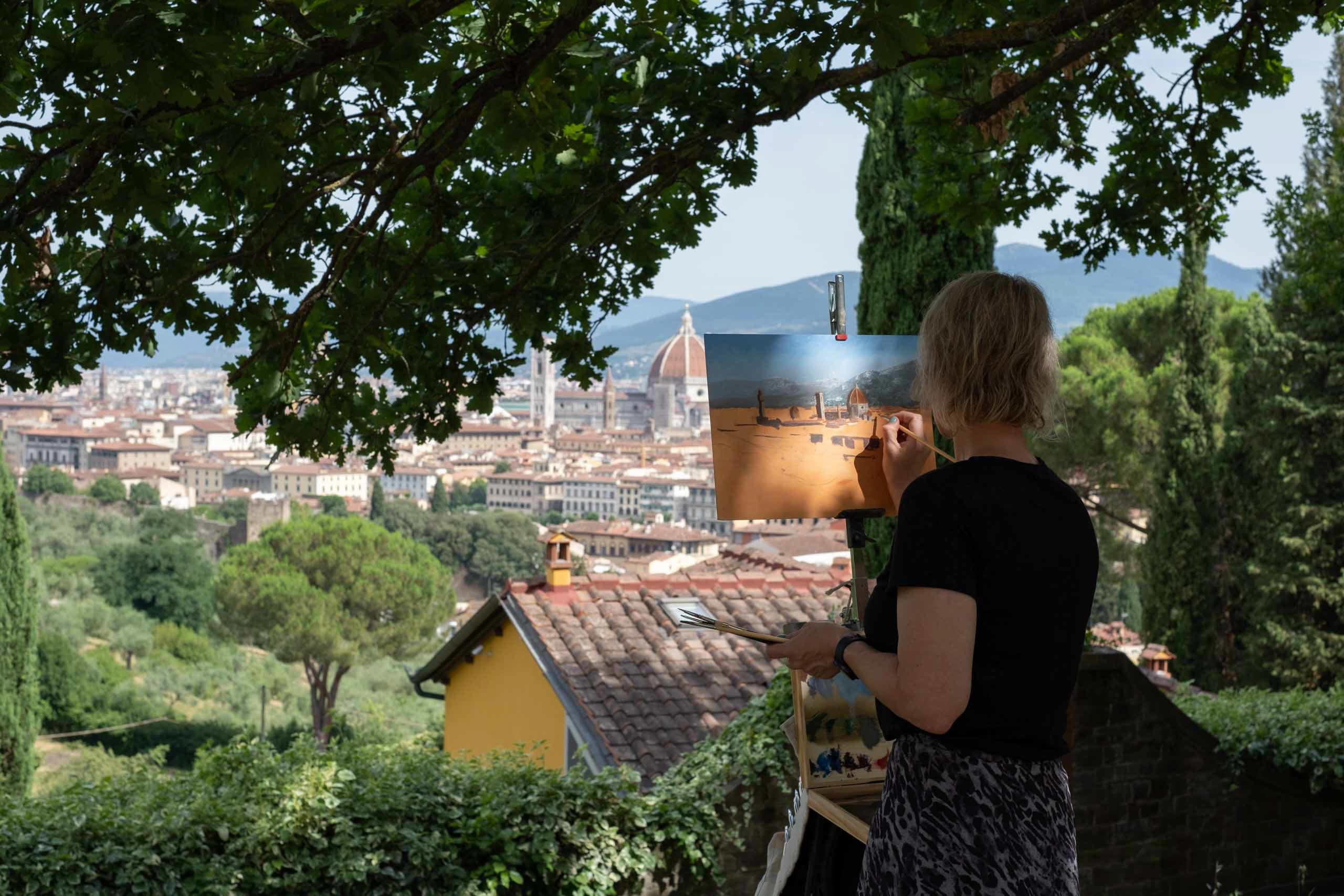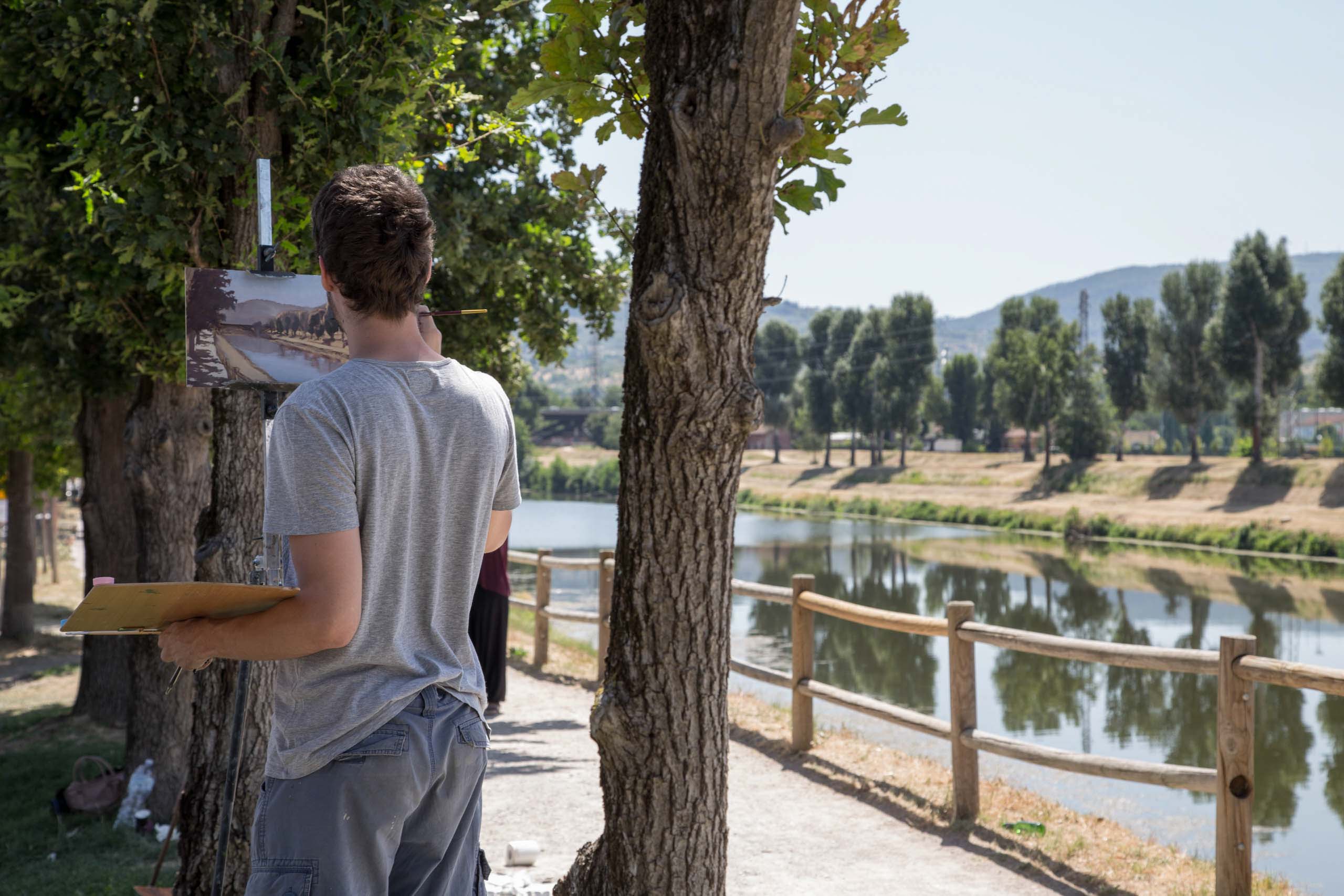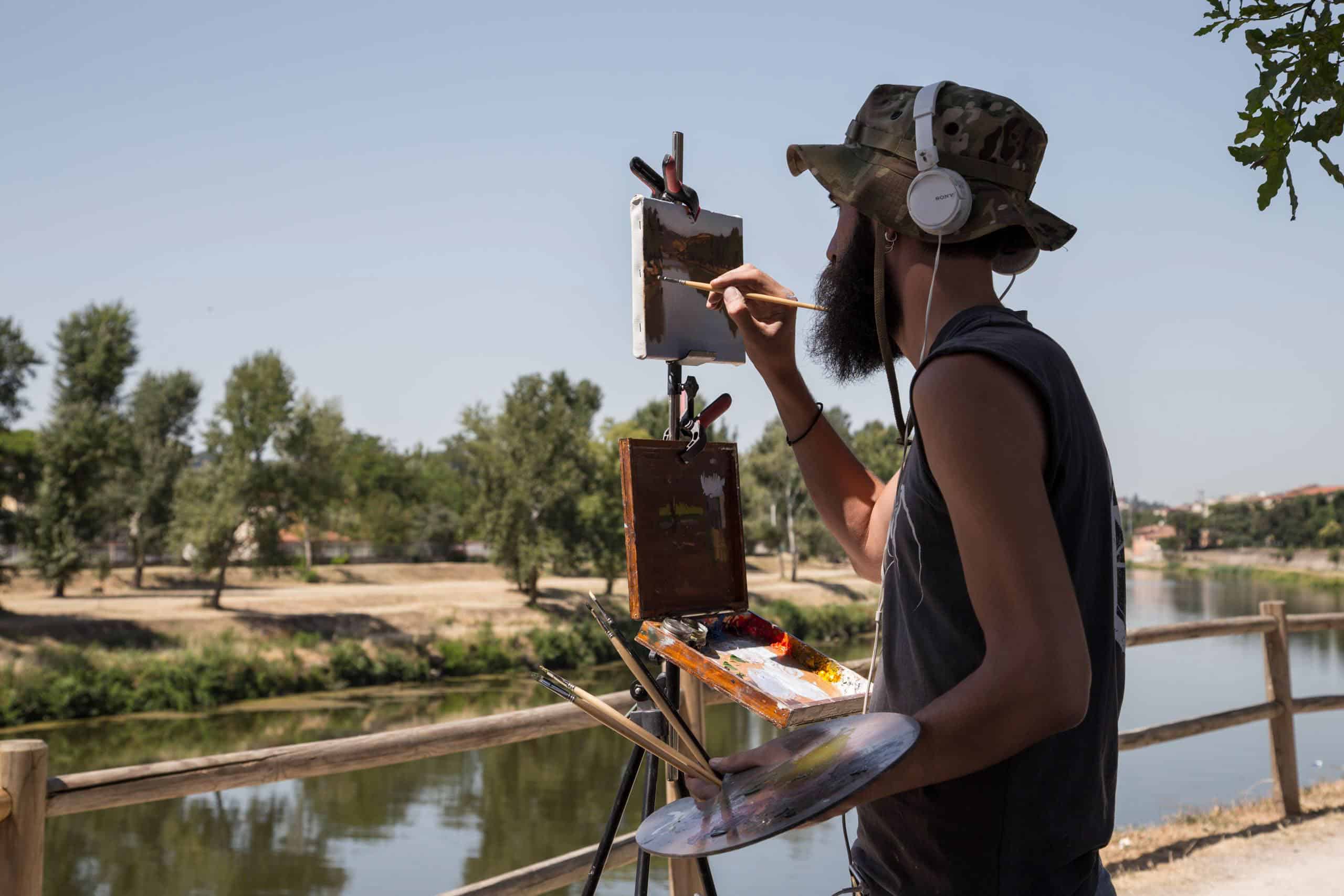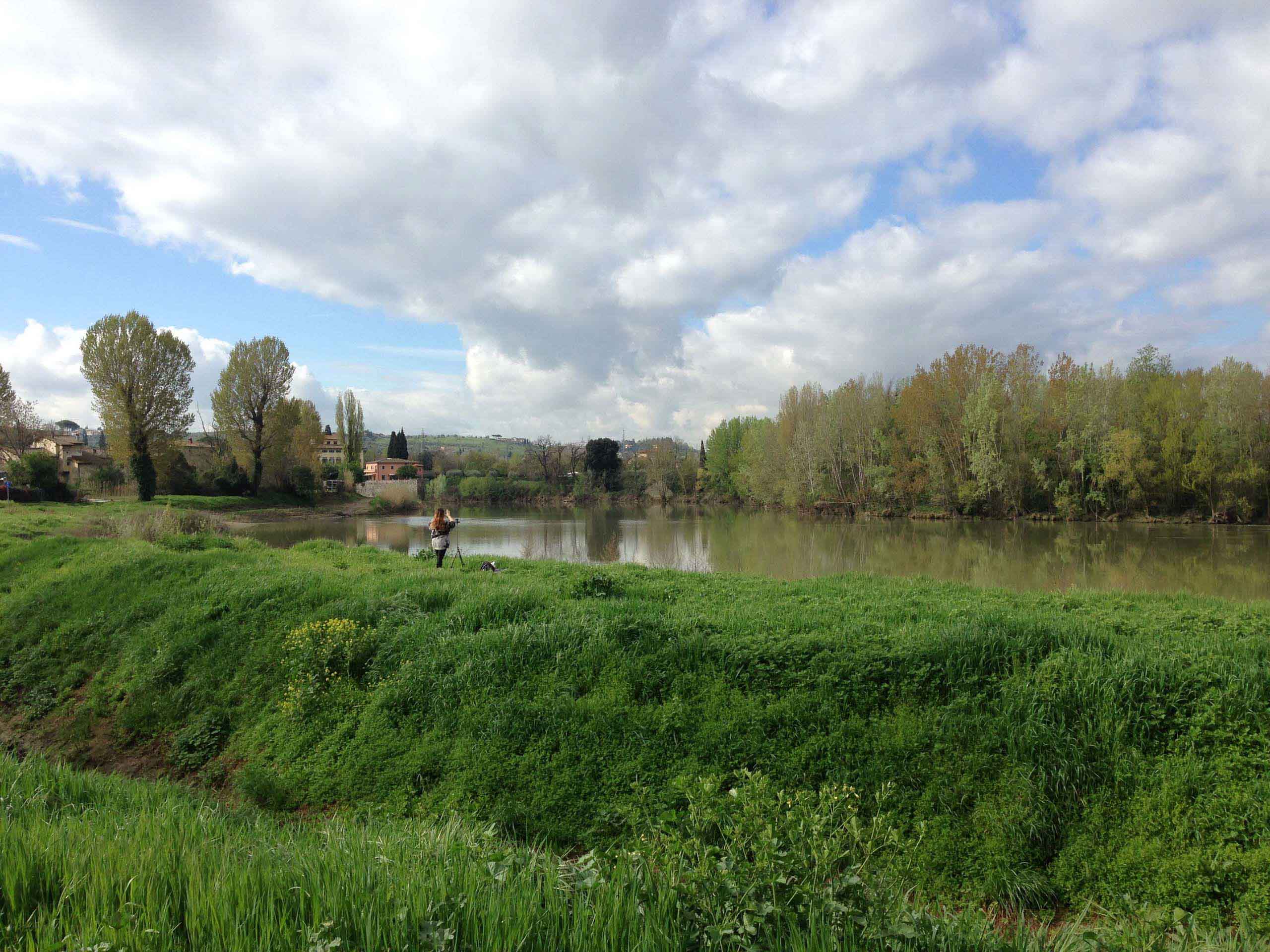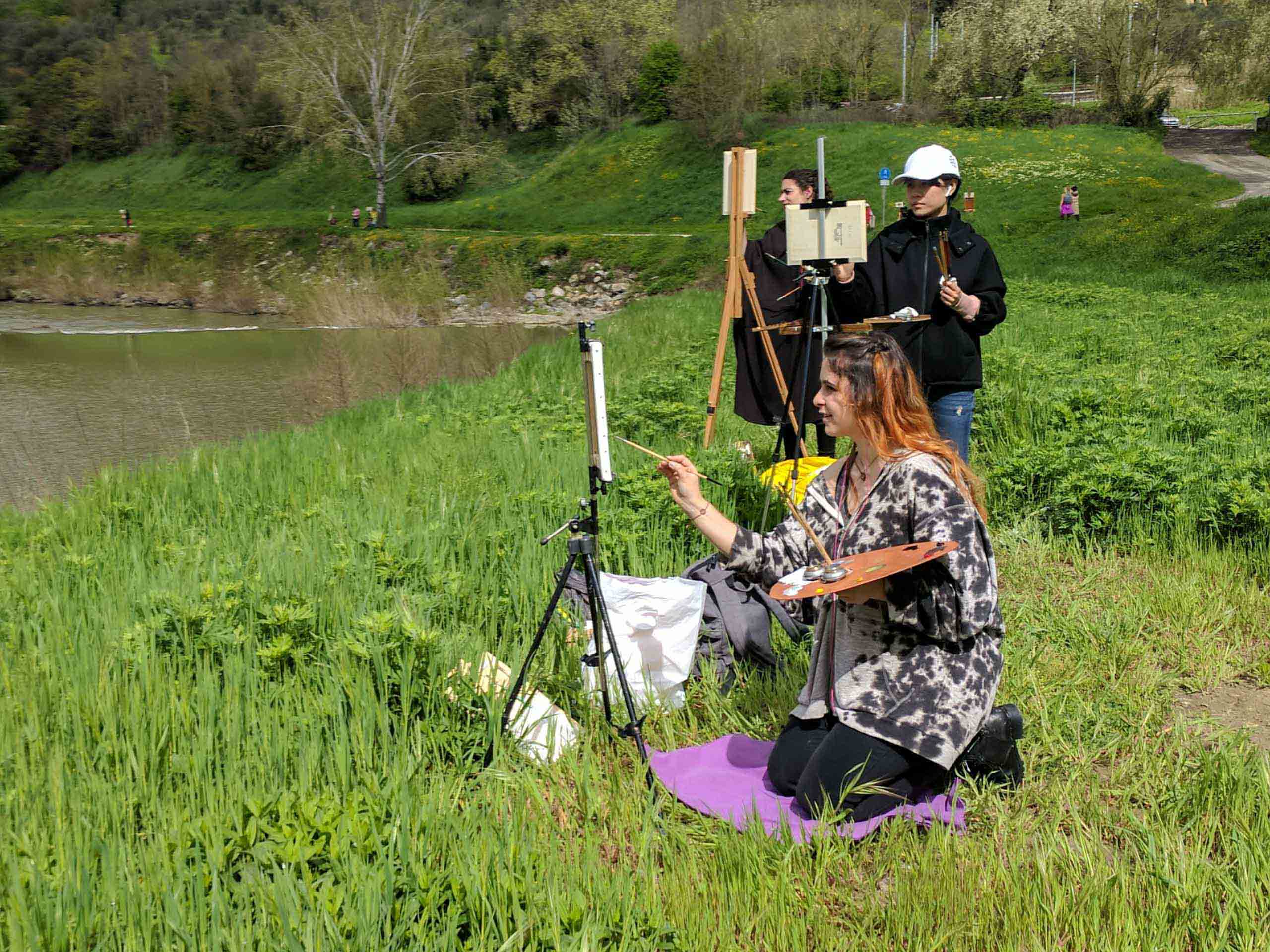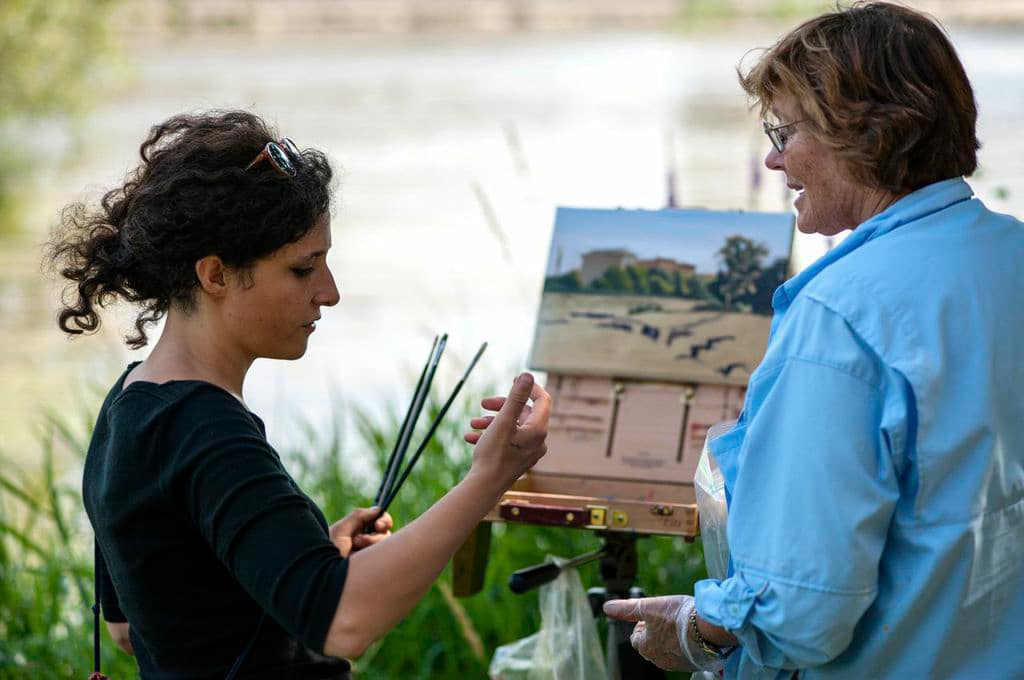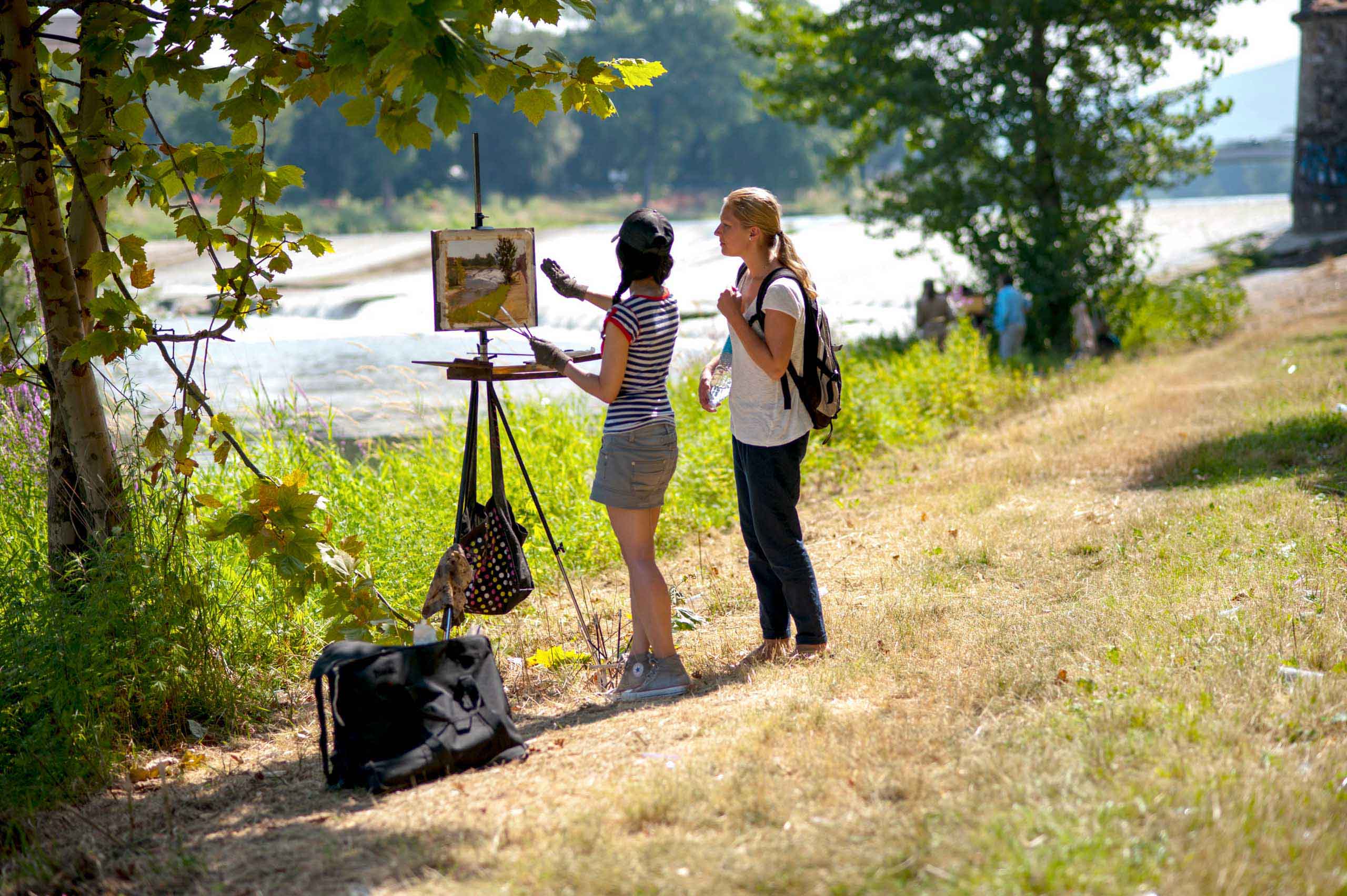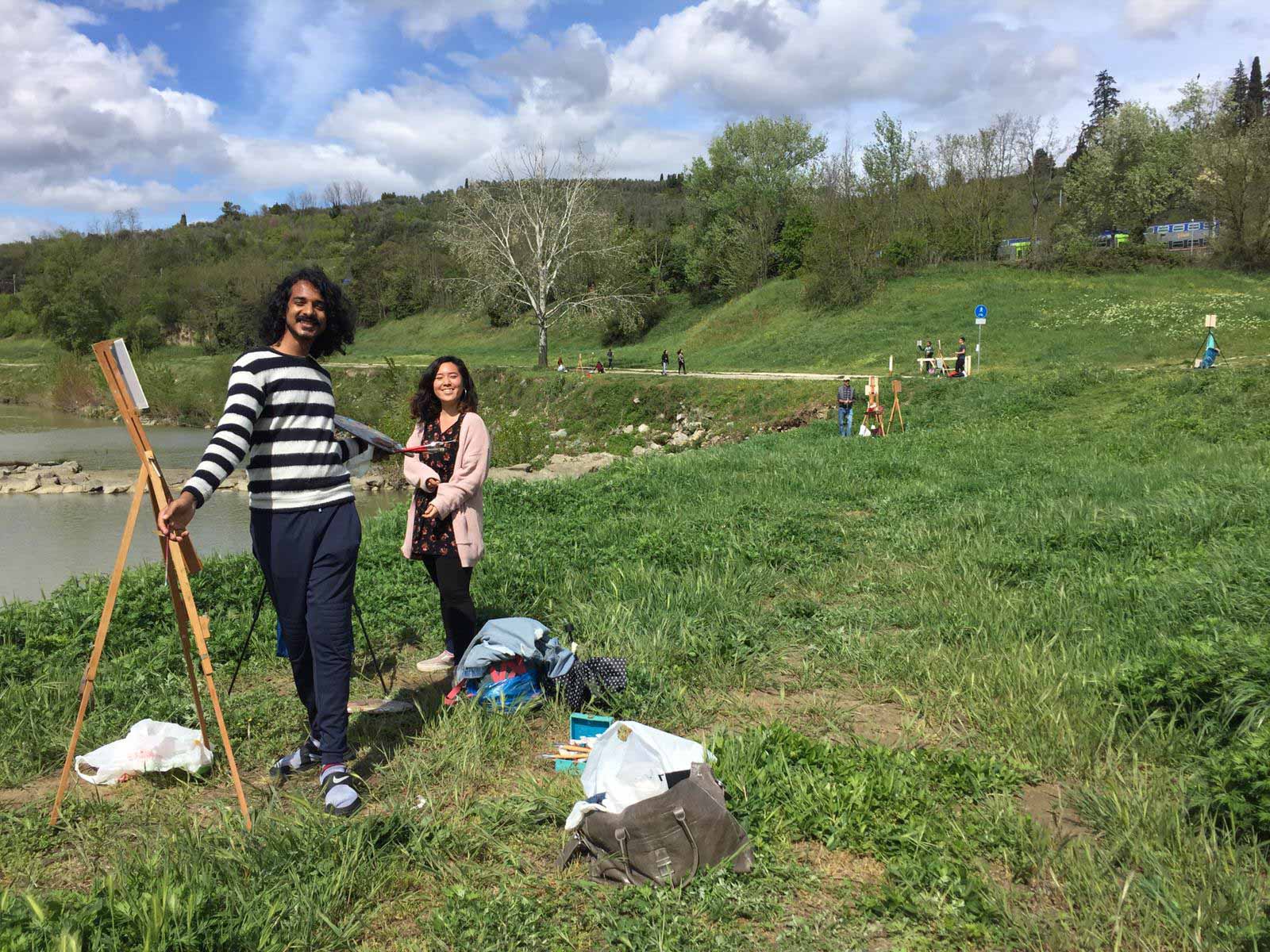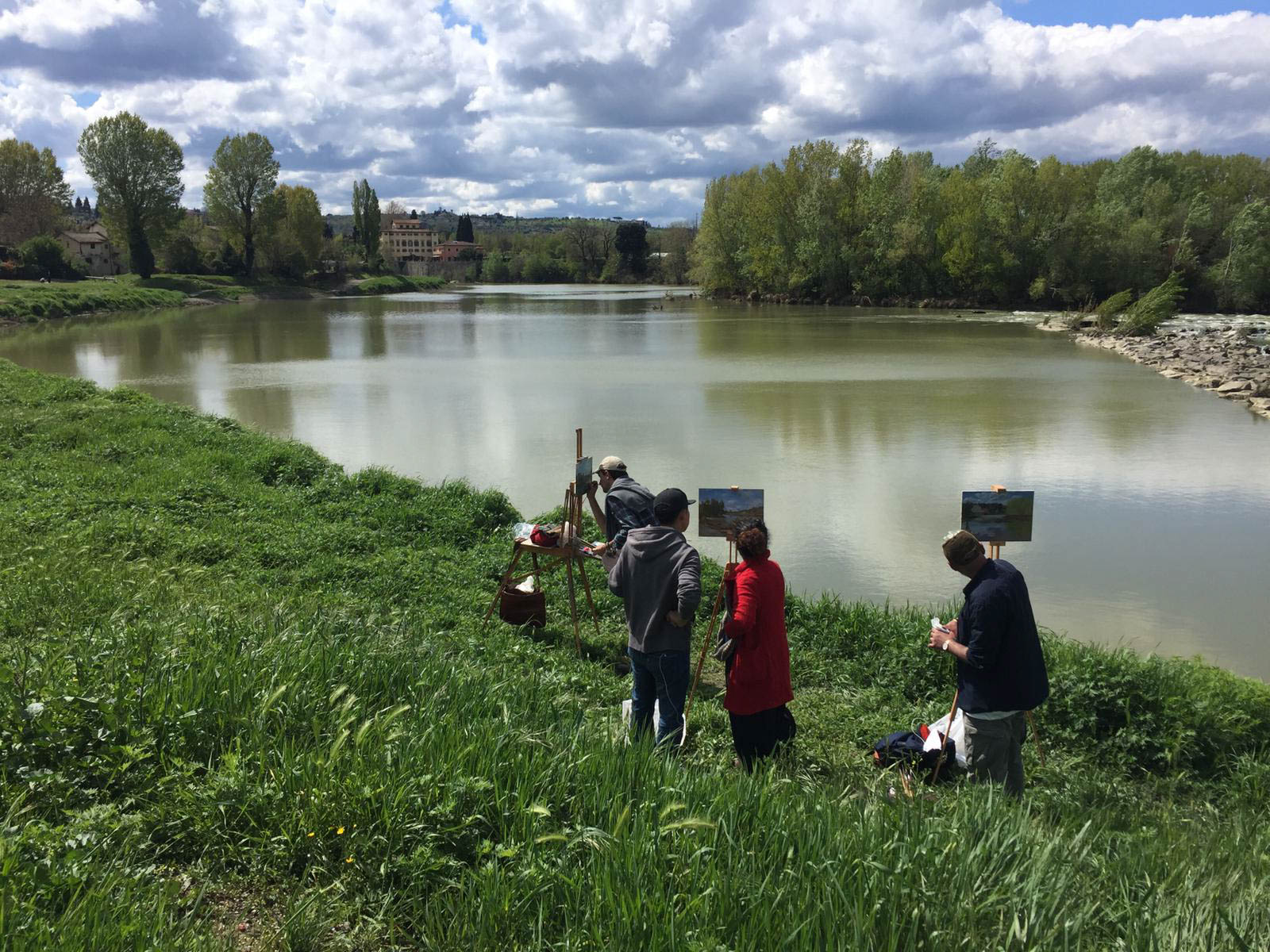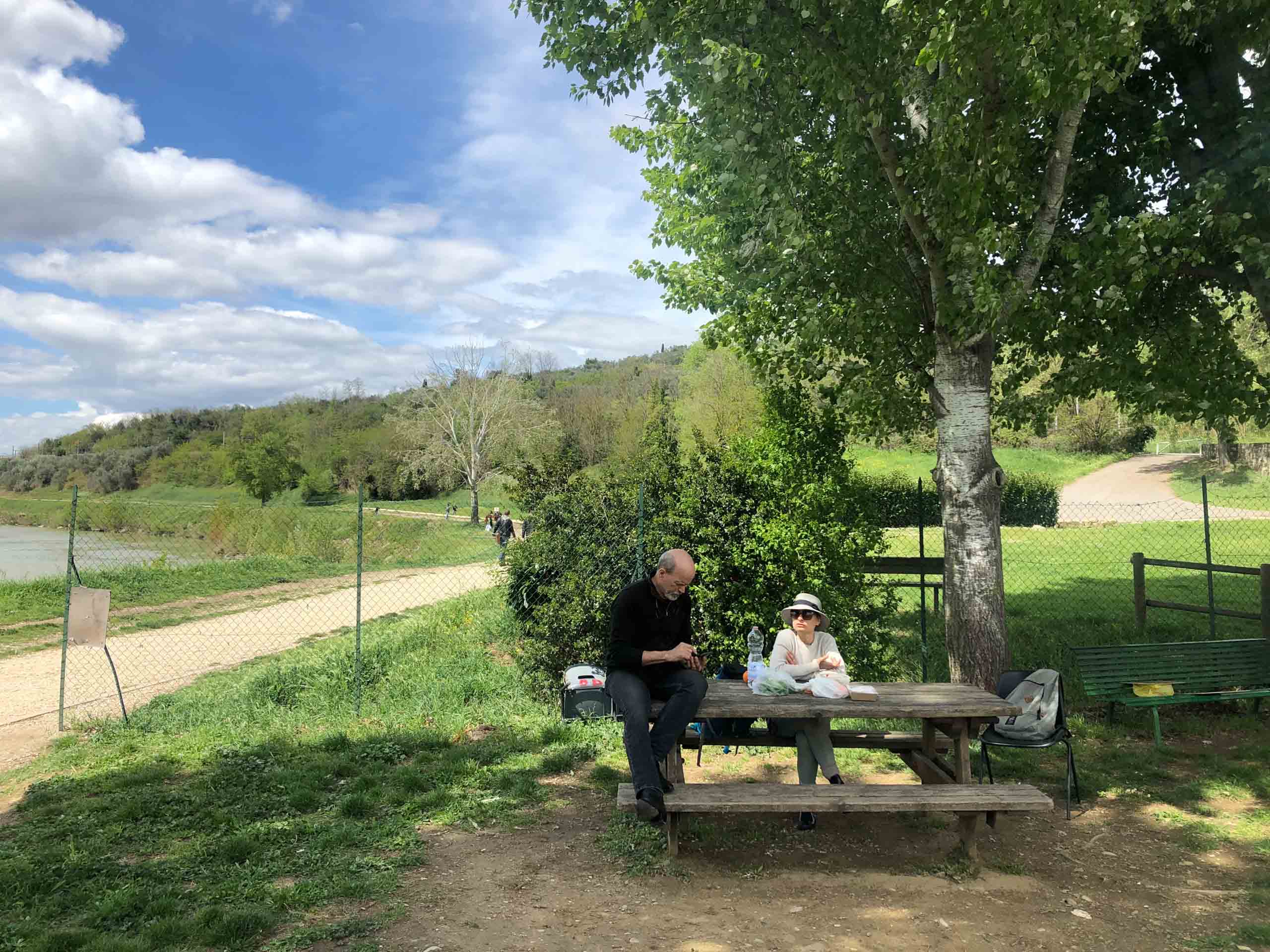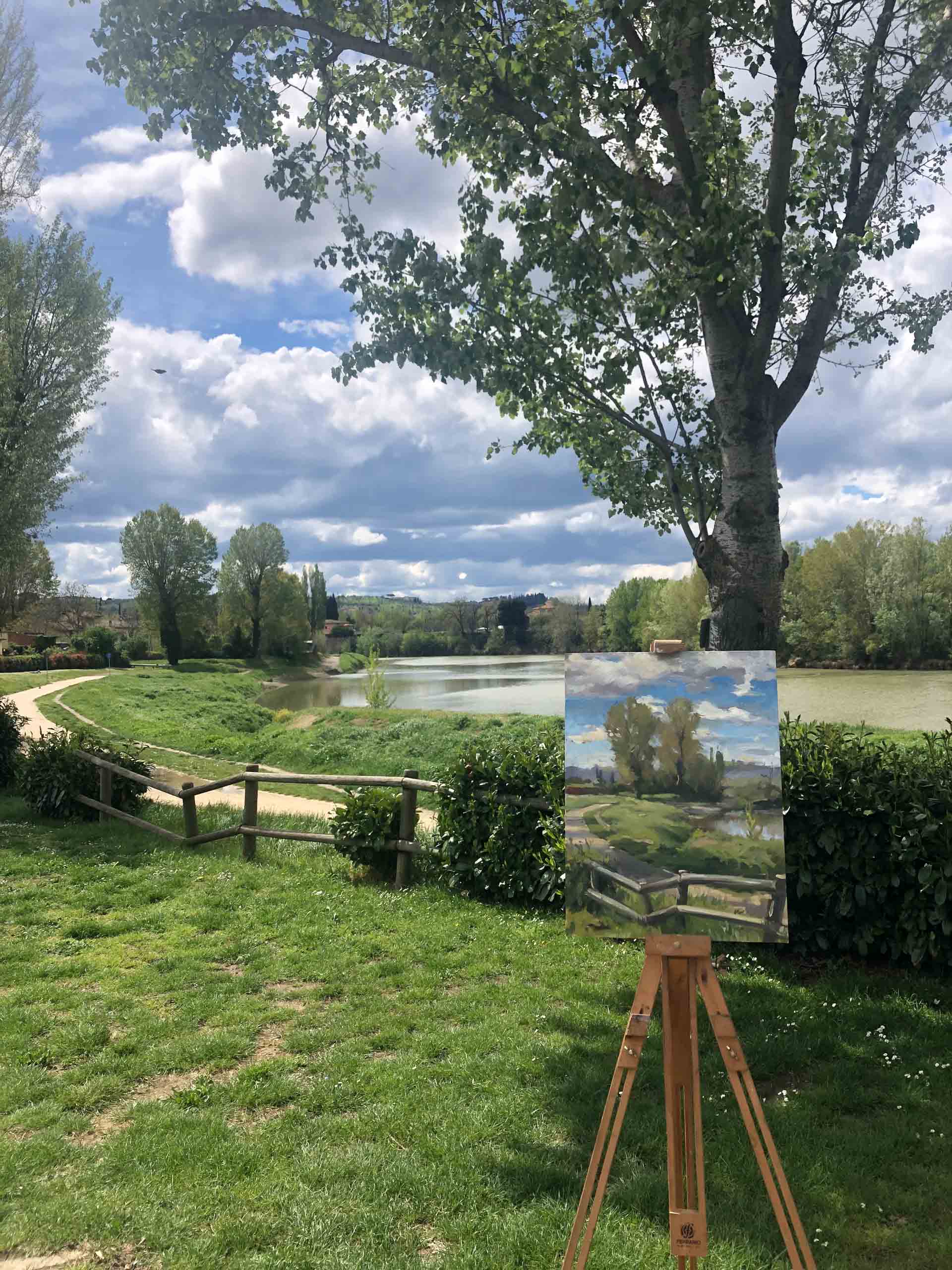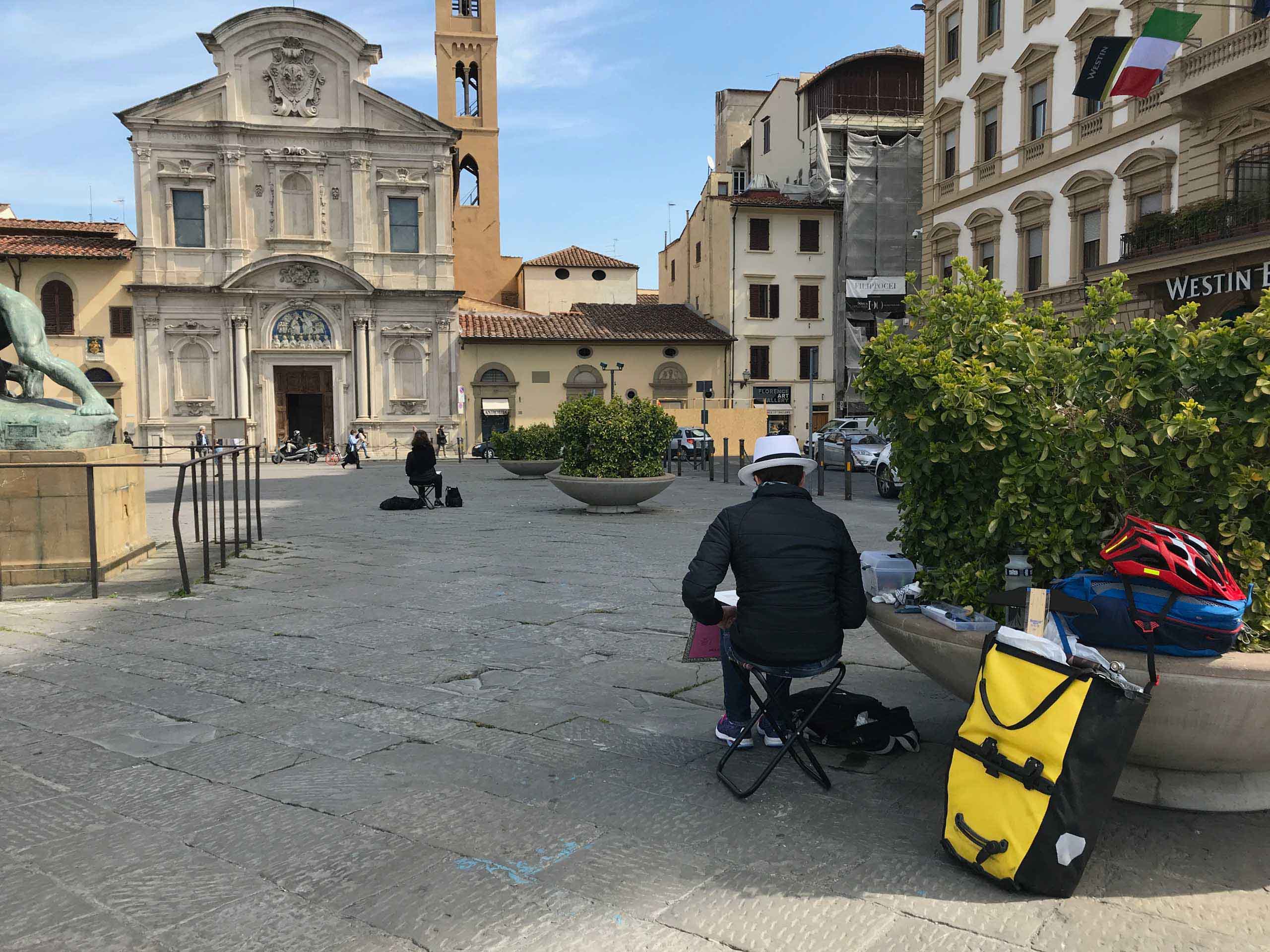Écorché Sculpture
3.0 credits
The Ecorché Sculpture Class is the advanced portion of the Artistic Anatomy program, “The Living Form”. It consists primarily of building an Anatomical Ecorché in the second year, and can be continued in the third year with an advanced Dynamic Ecorché for students seeking to further deepen their understanding of the human form.
The practice of ecorché sculpture fosters an haptic understanding of the spatial relationships between the three dimensional structures of the human body. Students are encouraged to use this understanding to begin constructing figures from their imagination in their sketchbooks or in clay. The process of constructing the human body from knowledge and imagination will help students to tap into the visual memory they are developing through drawing, painting, and sculpting from life on a daily basis. The prerequisites for entry are attendance for a full year of artistic anatomy lectures at the Florence Academy (or a comparable program), proficiency at ecorchè drawing, and at least one years experience in life drawing or sculpting from life. Therefore the course is generally open only to advanced students (2nd year and above). First year students will only be considered on an individual basis if they have previous experience. There is a modest course fee and cash materials deposit (separate from school tuition) for the entire year that includes instruction, use of studio space, use of the armature and clay, use of reference materials and occasional model fees (cost is subject to change). There are 15 spaces available in the course offered annually beginning each Fall Term.
Art History
The Art History lecture series at The Florence Academy of Art is designed to introduce students to a select group of topics chosen from the vast field of art and art related subject matter. It uses the resources, knowledge and inspiration of the FAA student body to create an engaging debate in a supportive and educational atmosphere.
The course uses The Florence Academy of Art’s extensive database of high quality digital images with a focus on the process of picture making: How does an artist use line, value, color, brush-work, narrative, and symbolism? What images or techniques did he learn from his teacher or other masters? How did his style and subject matter develop? What is the relationship of form and content in his work? A basic historical framework and relevant biographical details is included, however, names and dates matter less than inspiration. Students are asked to consider what is beautiful in the works they admire and are encouraged to debate the place of naturalistic painting and sculpture in the world today. Hopefully this will enable them to take the best of the tradition and use it to support their personal visions when they become professional artists.
Lectures offered in recent years:
Drawing the Human
Figure Greek Sculpture and Its Influence
The Bible and Painting
Renaissance Architecture
Leonardo’s Art and Science
Michelangelo and Renaissance Sculpture
Bellini, Giorgione, and Titian
Caravaggio and Ribera
Reynolds-Discourses on Art
Rembrandt
Velazquez
Bernini and Baroque Sculpture
Carpeaux, Rodin, and Claudel
American Impressionism
Russian Painting
Kroyer, Edelfelt, Zorn
Sargent and Sorolla
Bastien-Lepage and Naturalism
Goya, Schiele, and Munch
Painting, Poetry and Music
Technical Demonstrations
on Materials & Techniques
It is the opinion of the Academy that a deep, practical understanding of materials and methods enriches both the flexibility and subsequent refinement of a painter’s mode of expression. In addition to regular class instruction on materials and techniques, each term technical demonstrations introduce students to painting techniques, the properties of individual pigments, oils and varnishes, the use of grounds and mediums on paint grinding, and canvas preparation.
Landscape Painting
Study in landscape is an extracurricular activity offered on the weekends and on special landscaping days during fall and spring trimesters. Students are introduced to the prismatic palette, and discuss properly keying a picture, grouping of lights and darks, understanding structural rhythms and the importance of balance, contrast, variety and unity.



